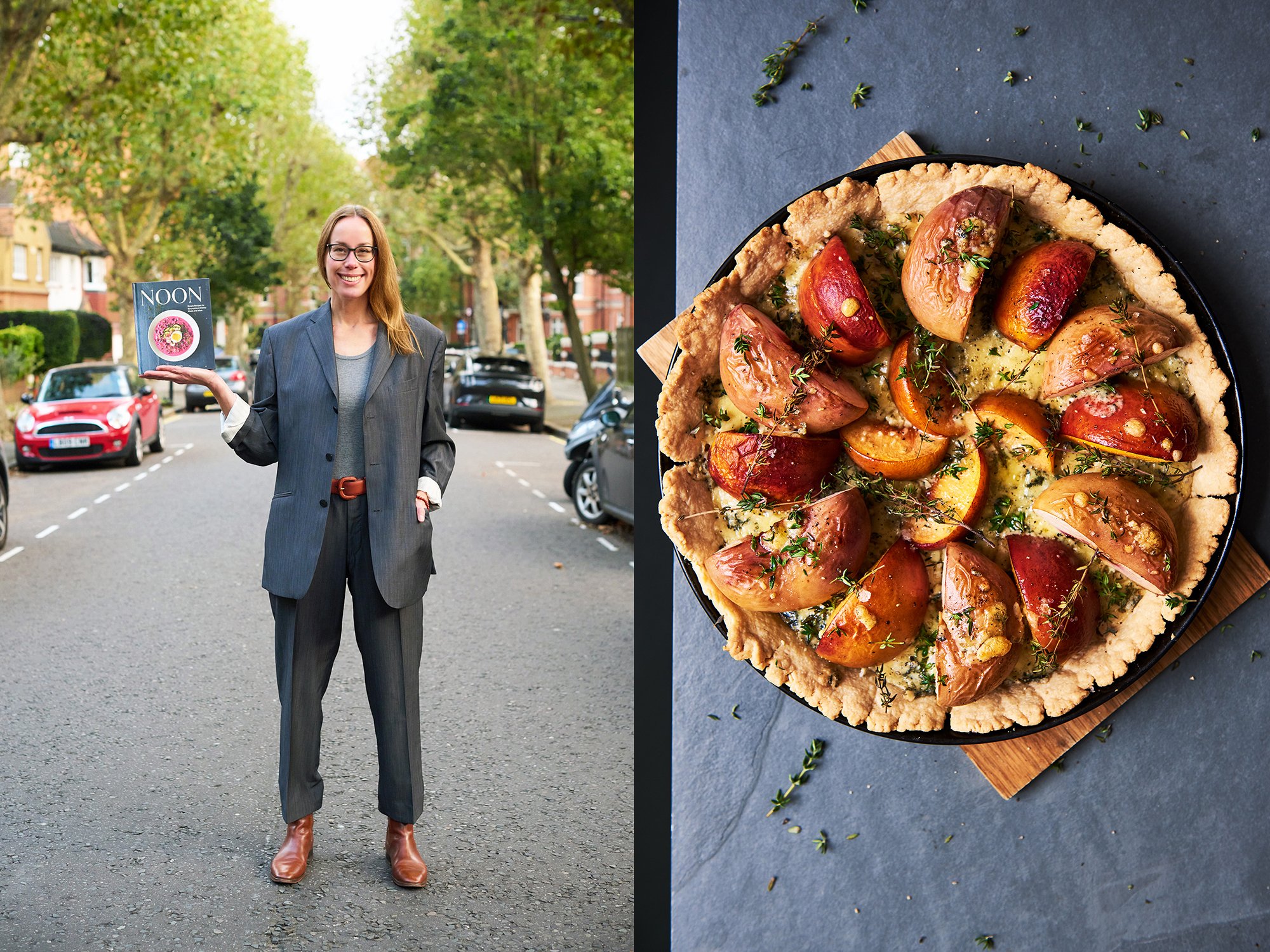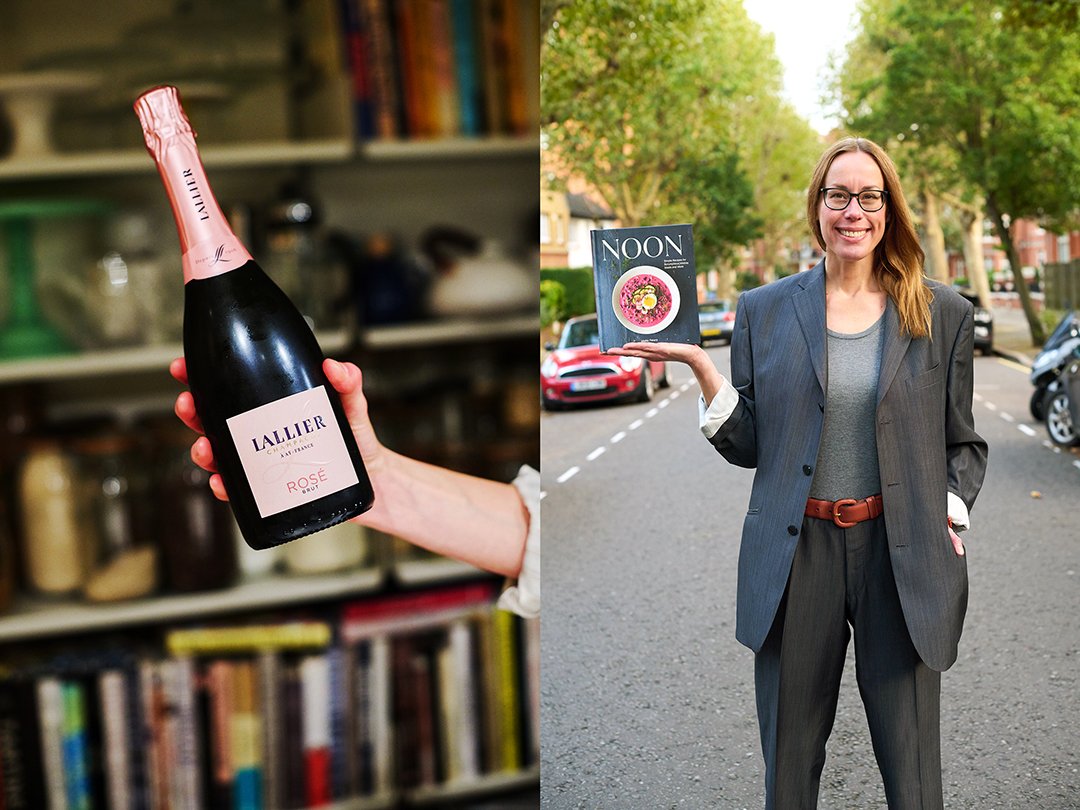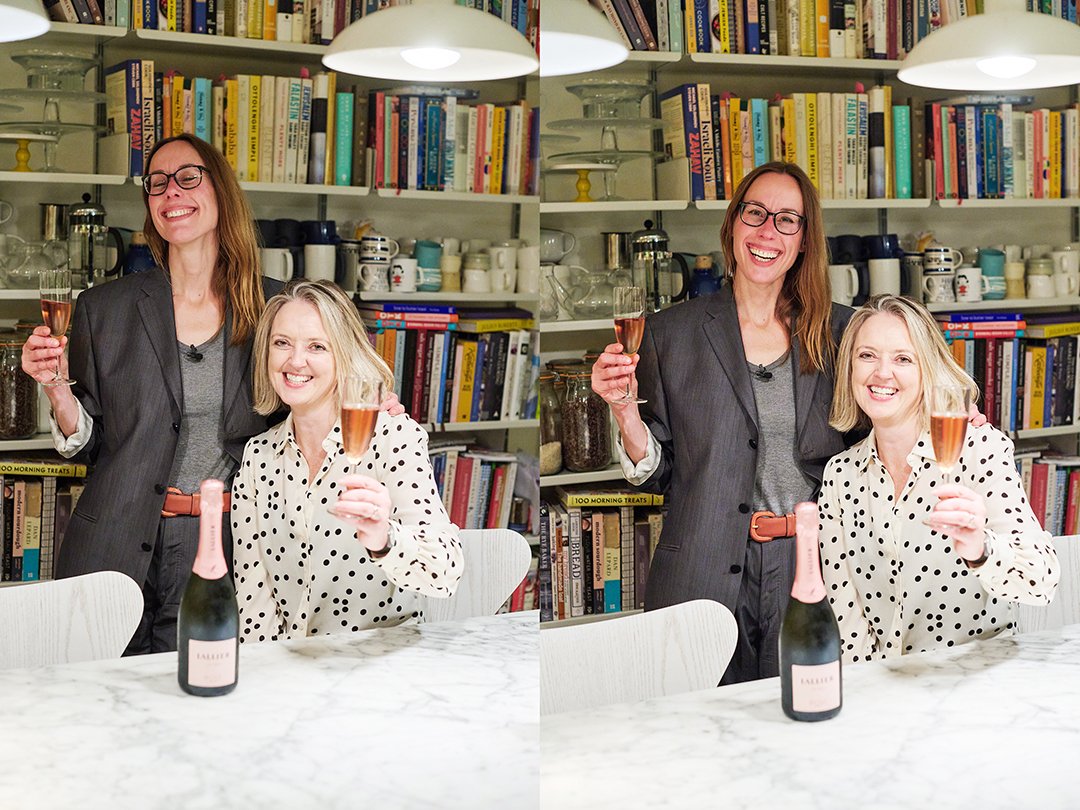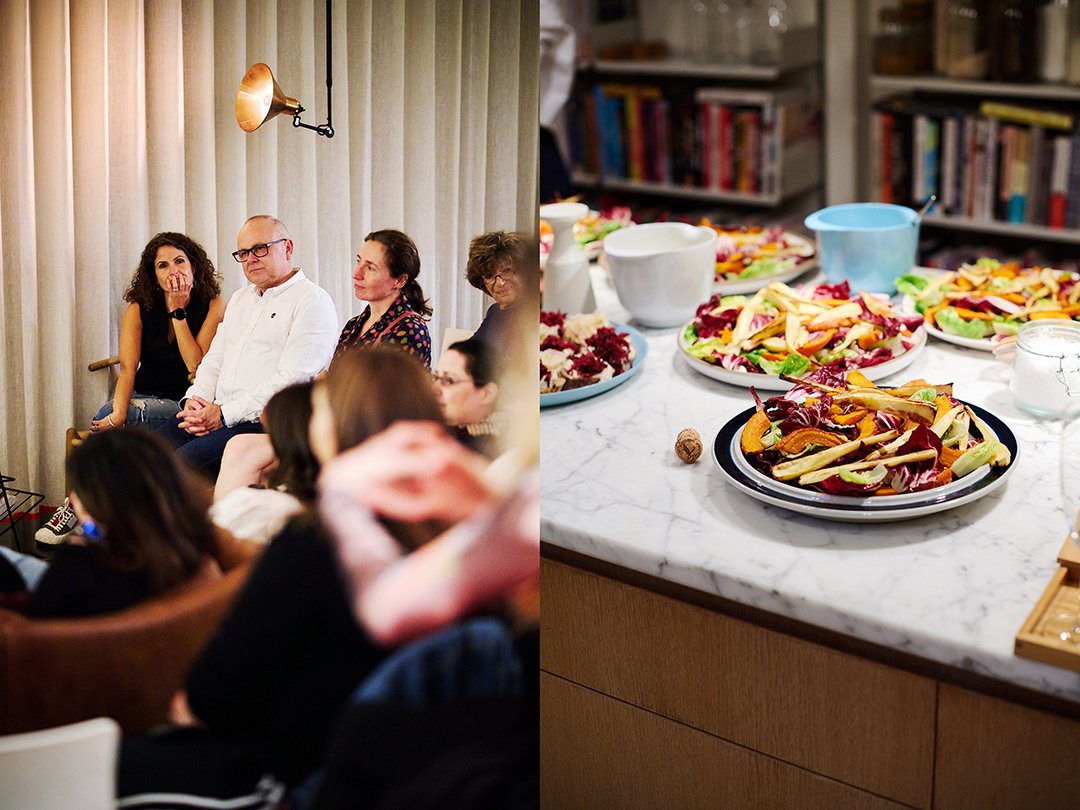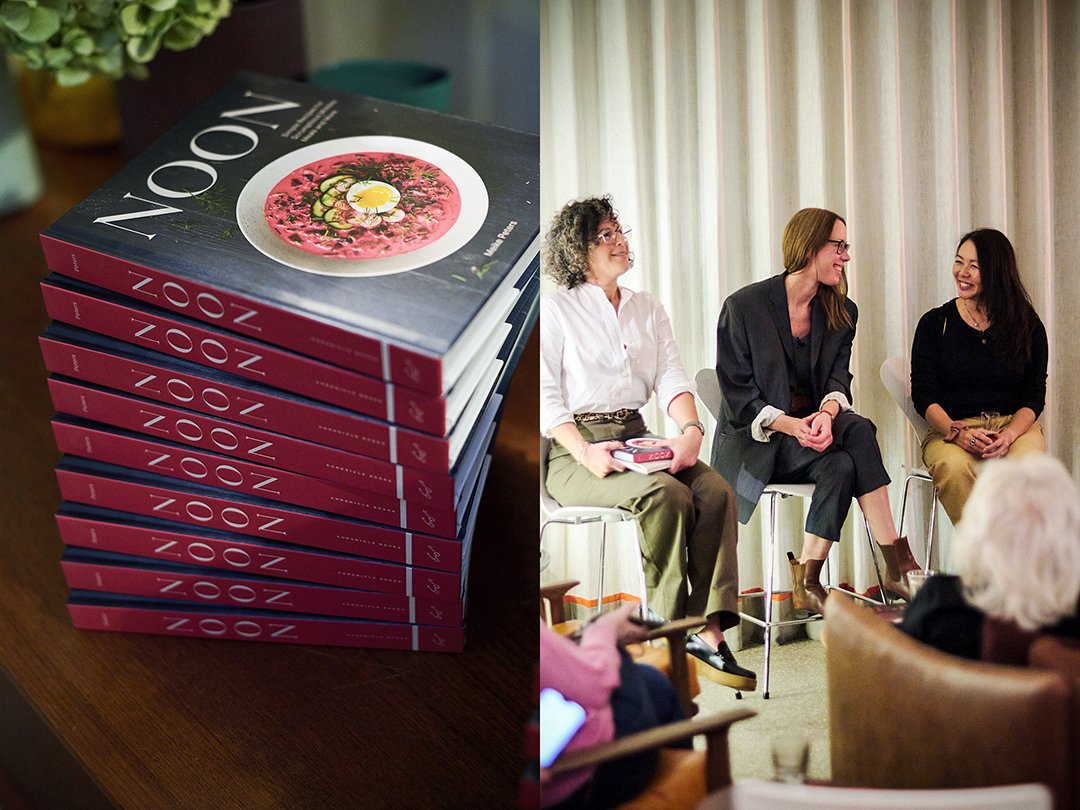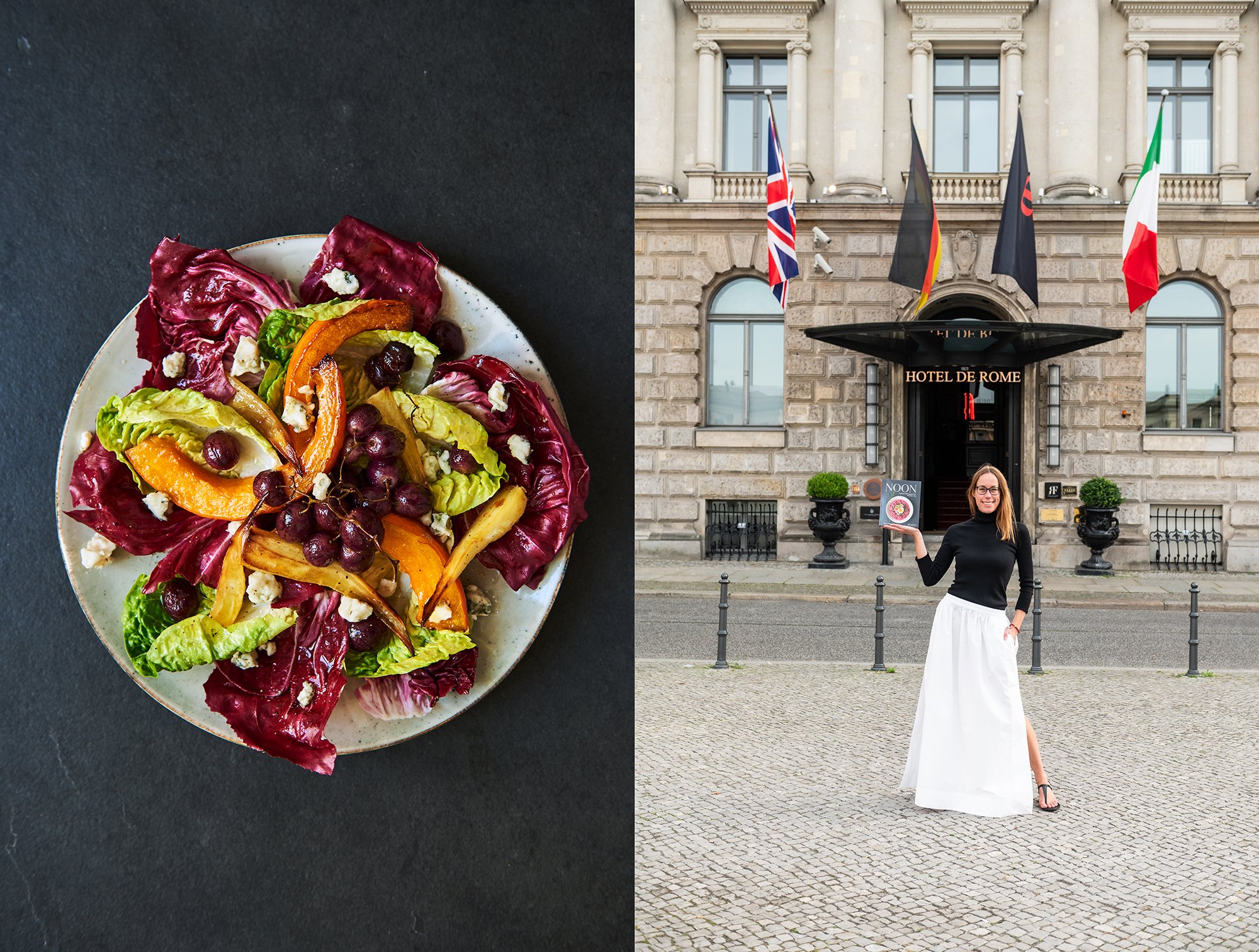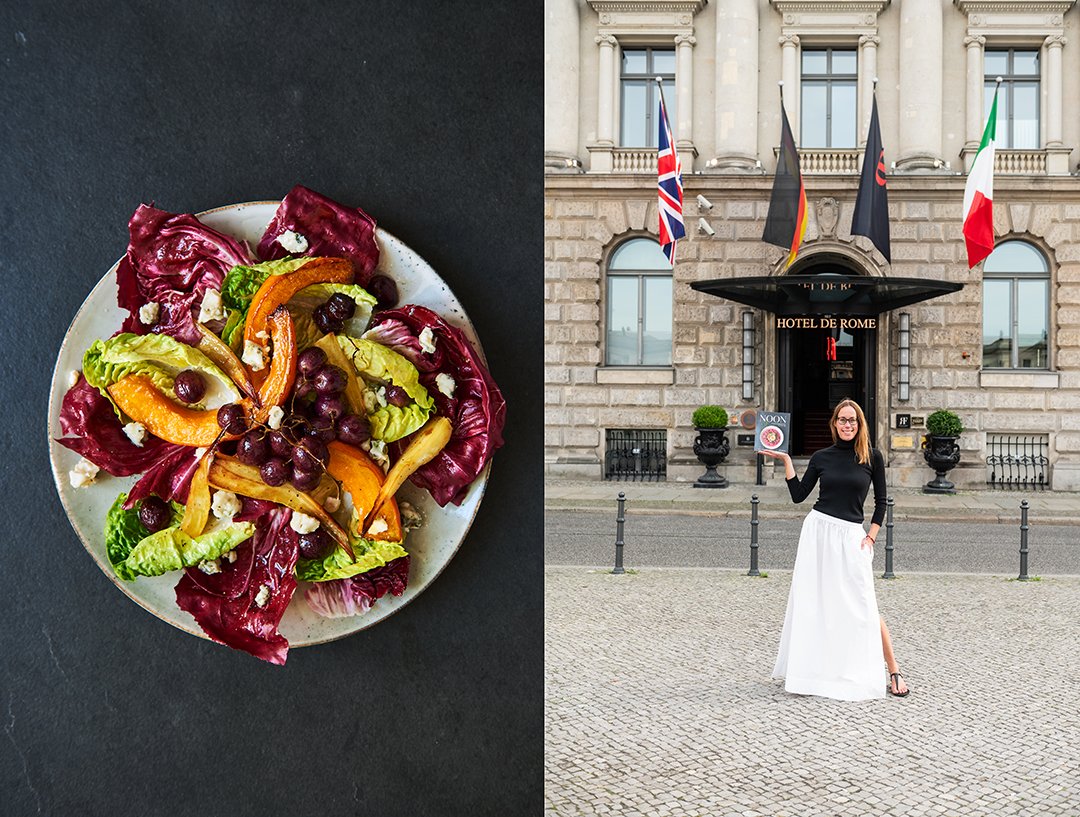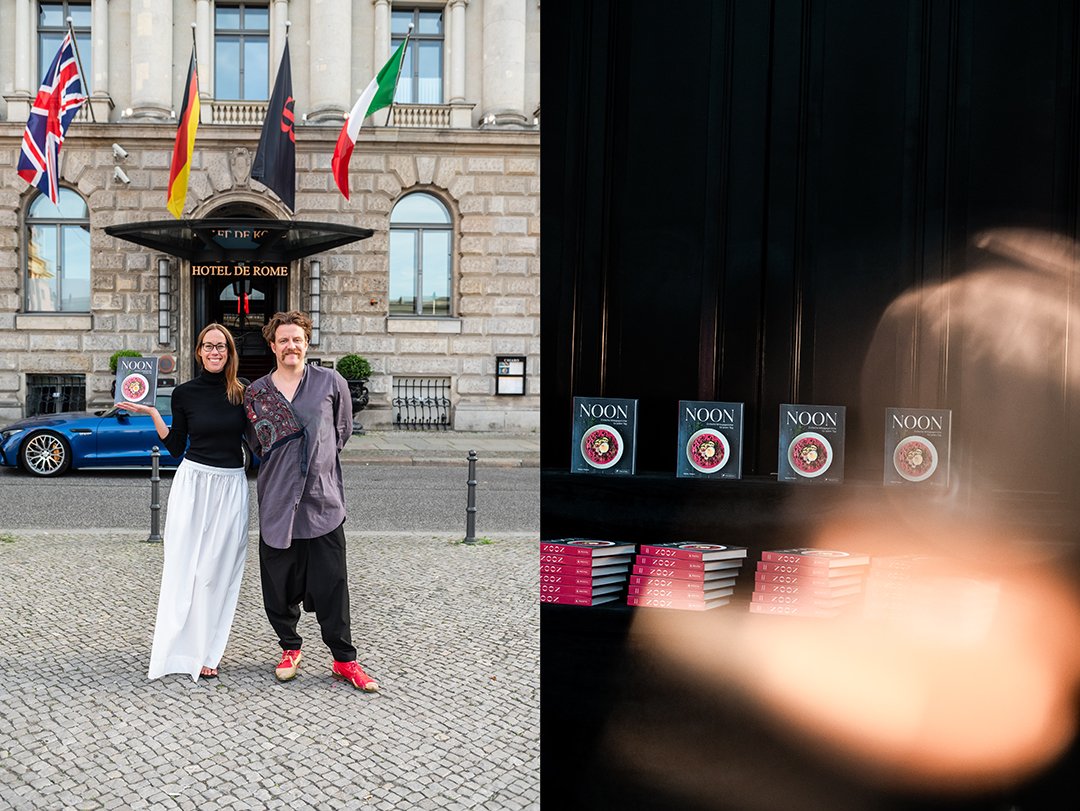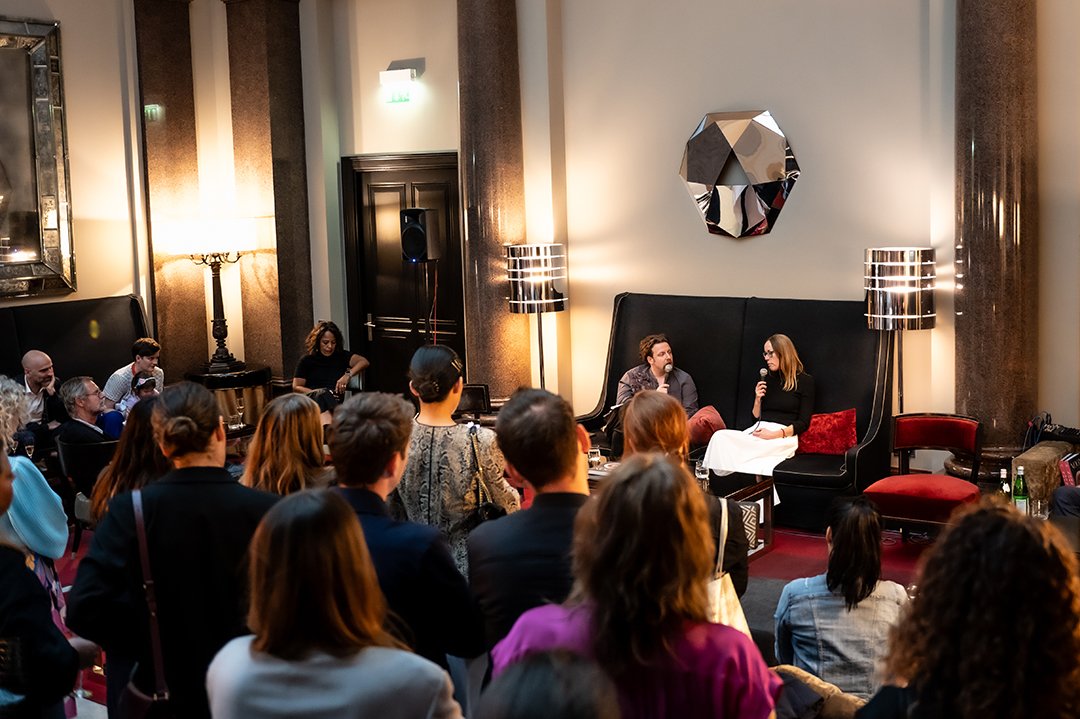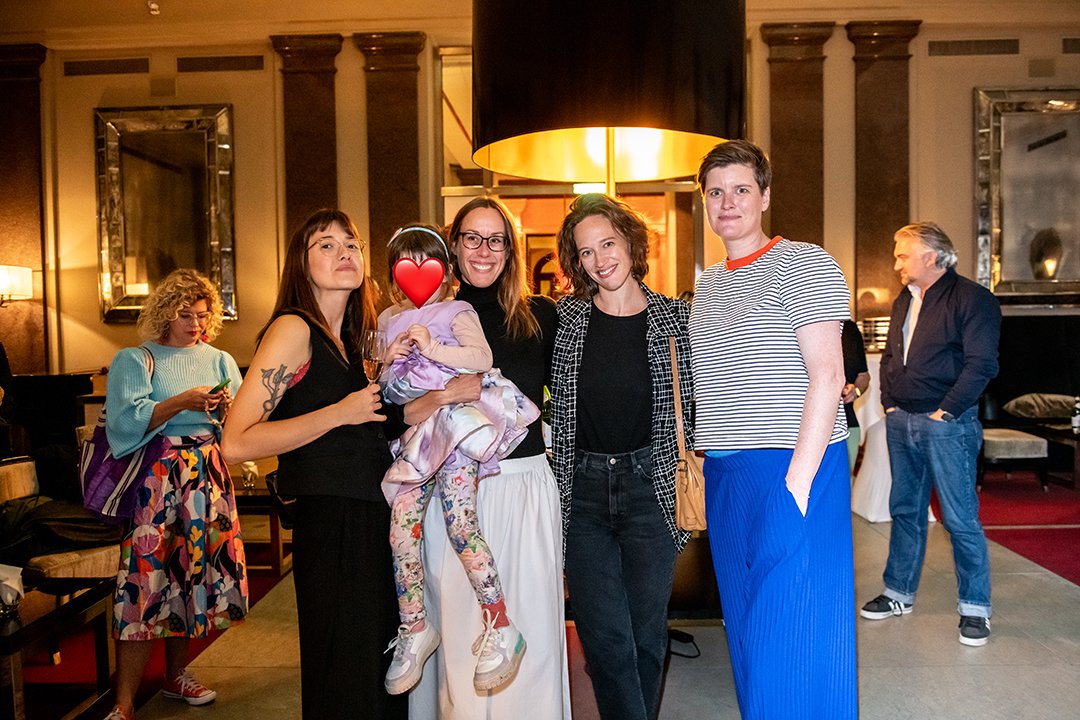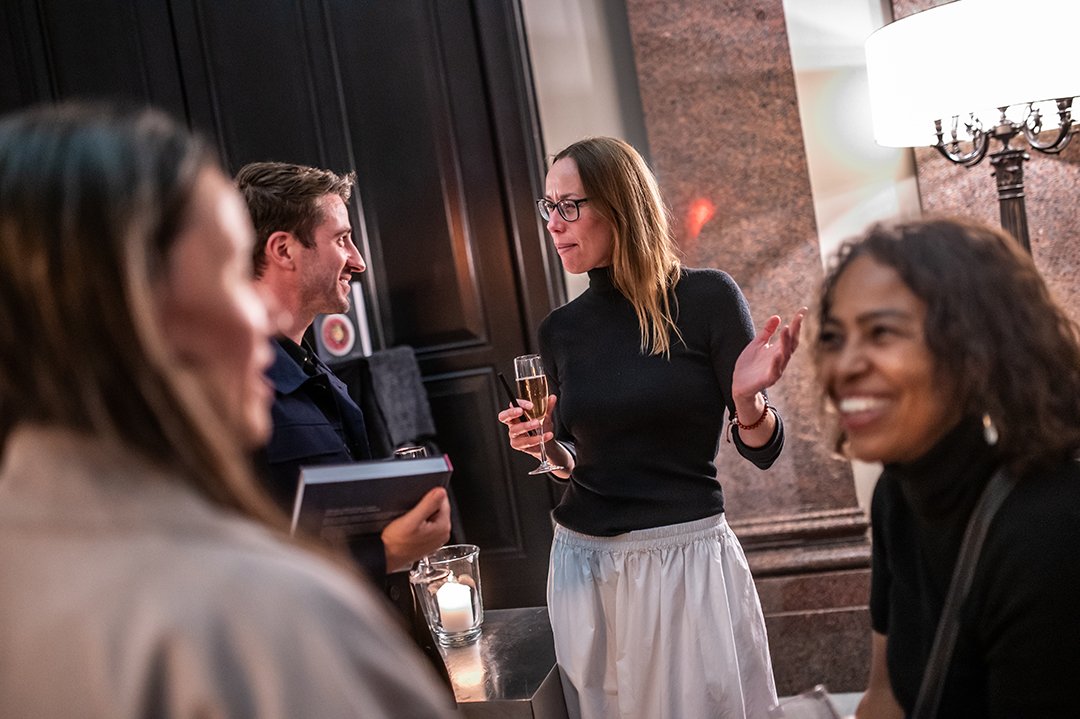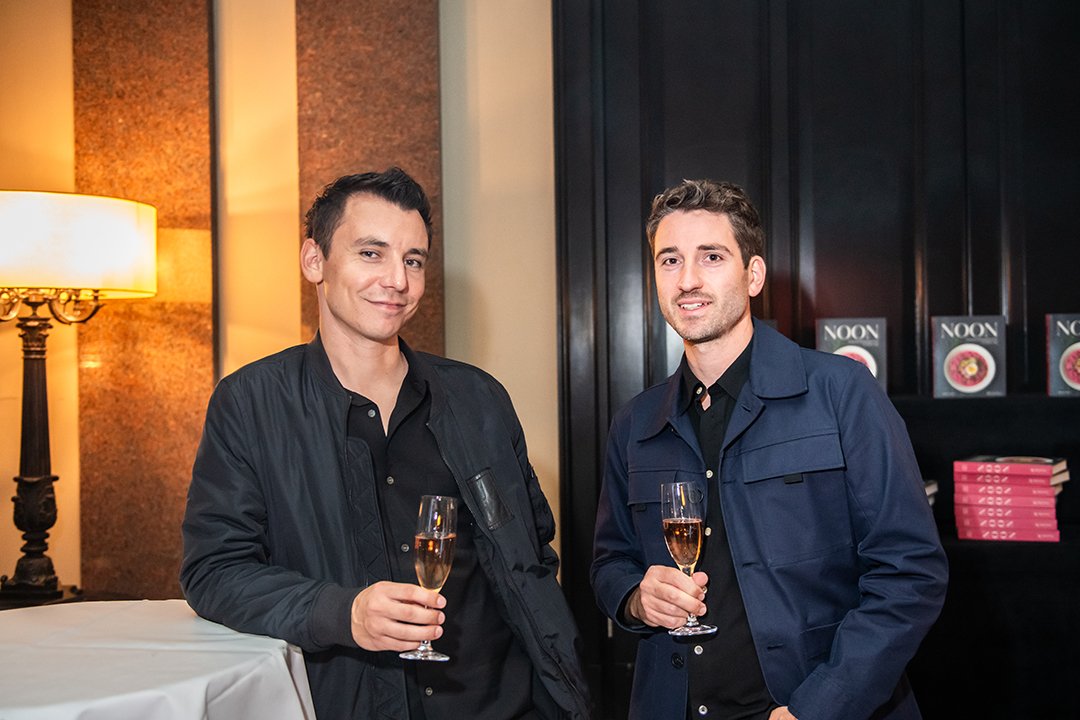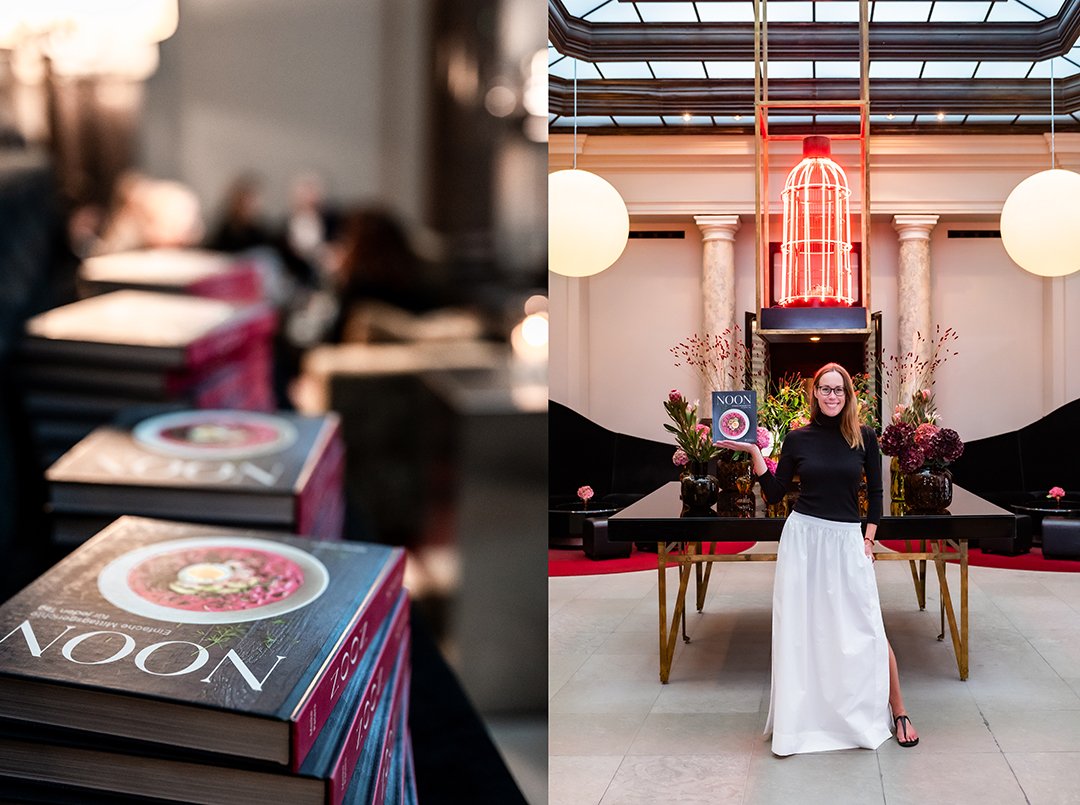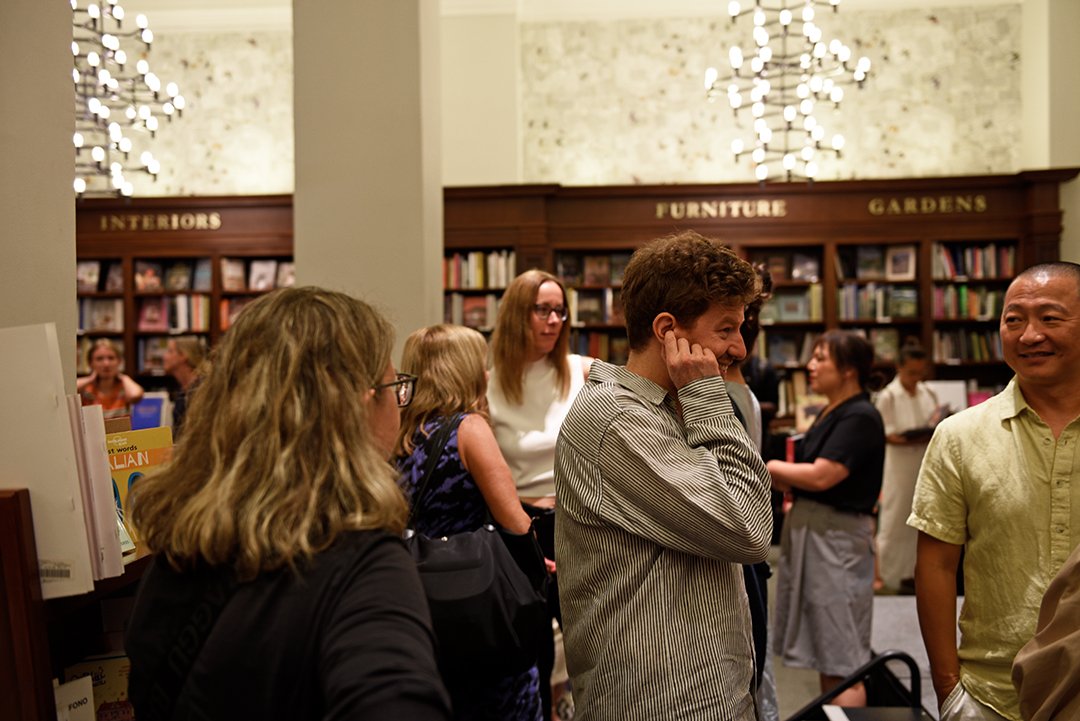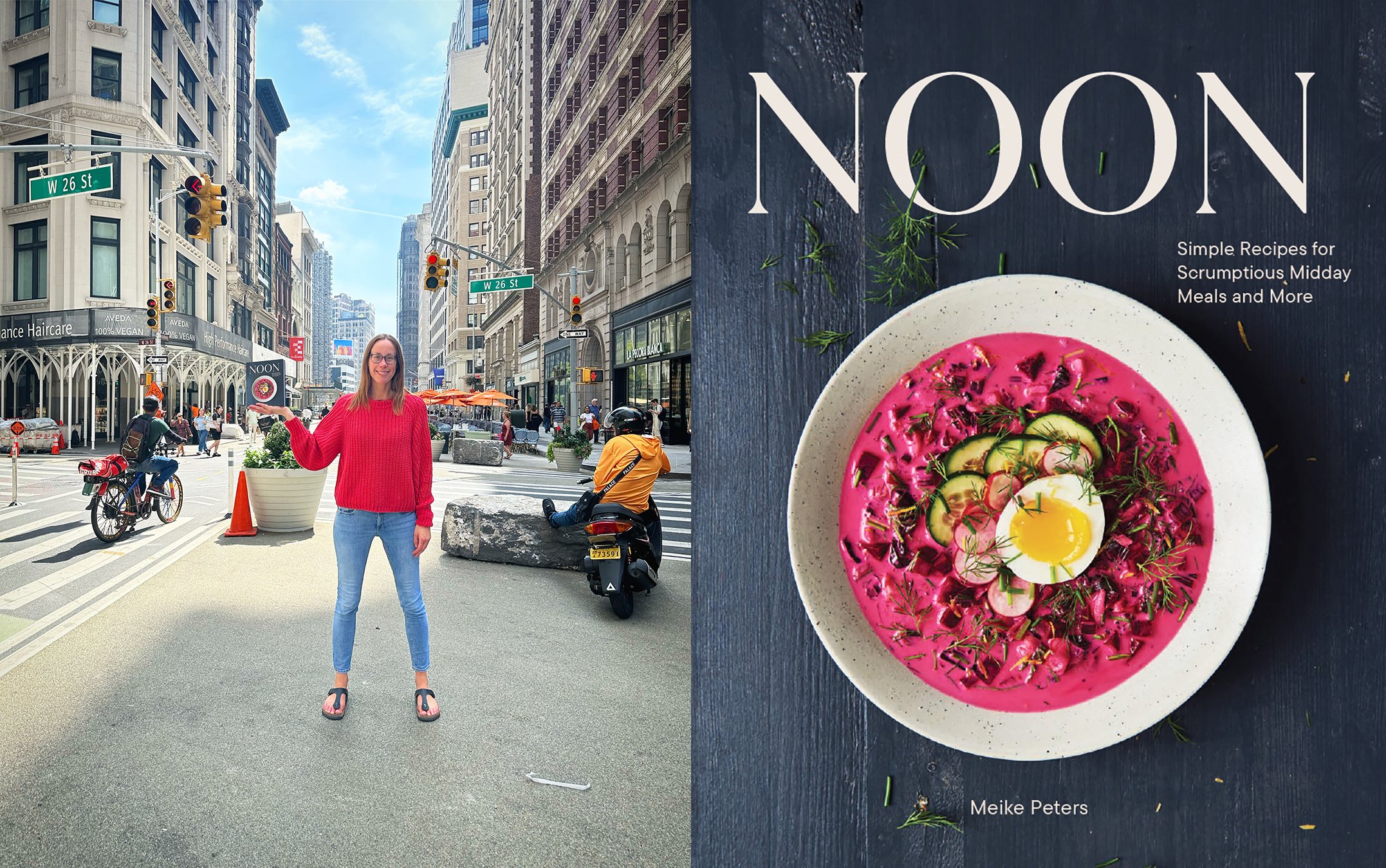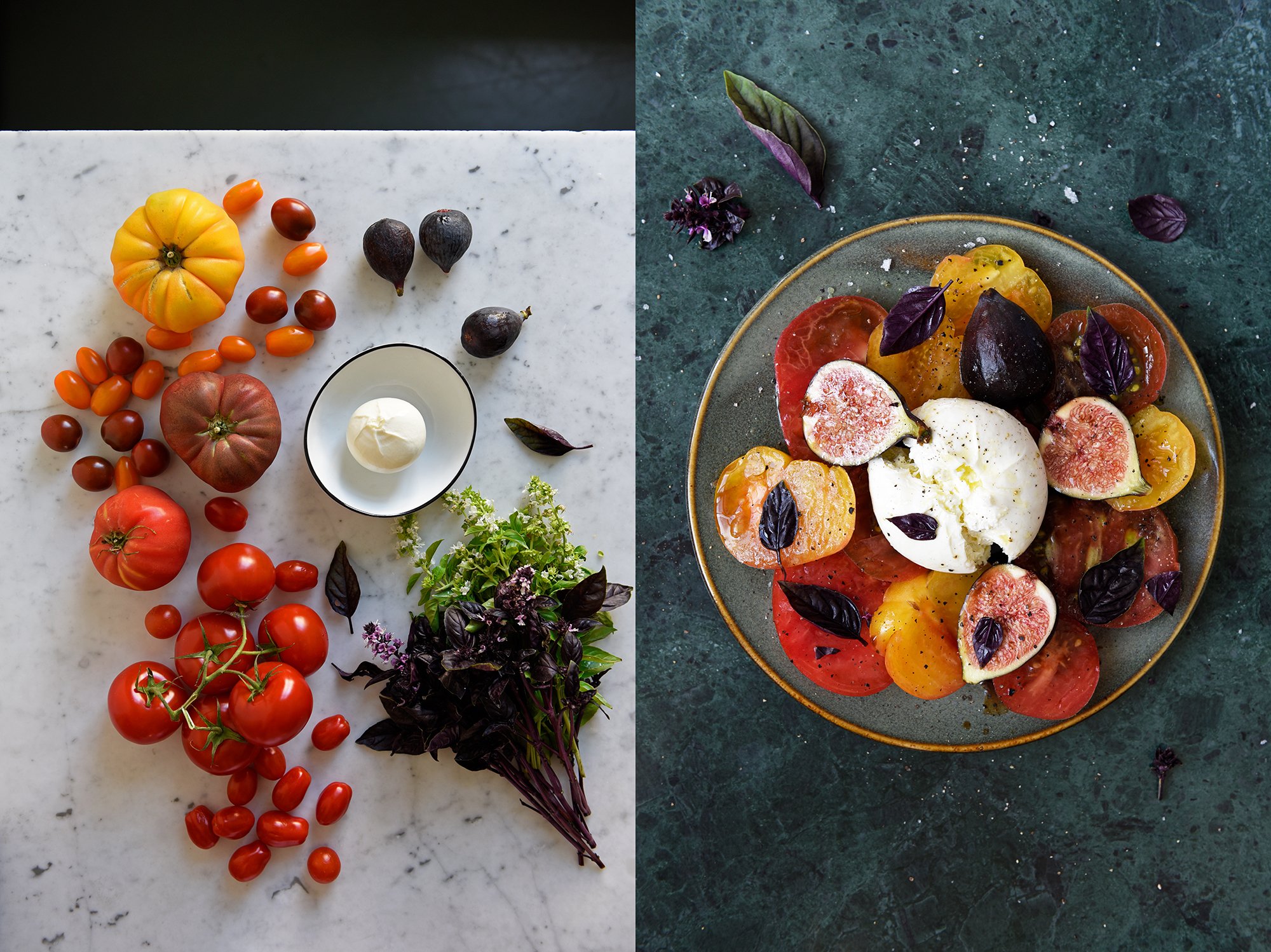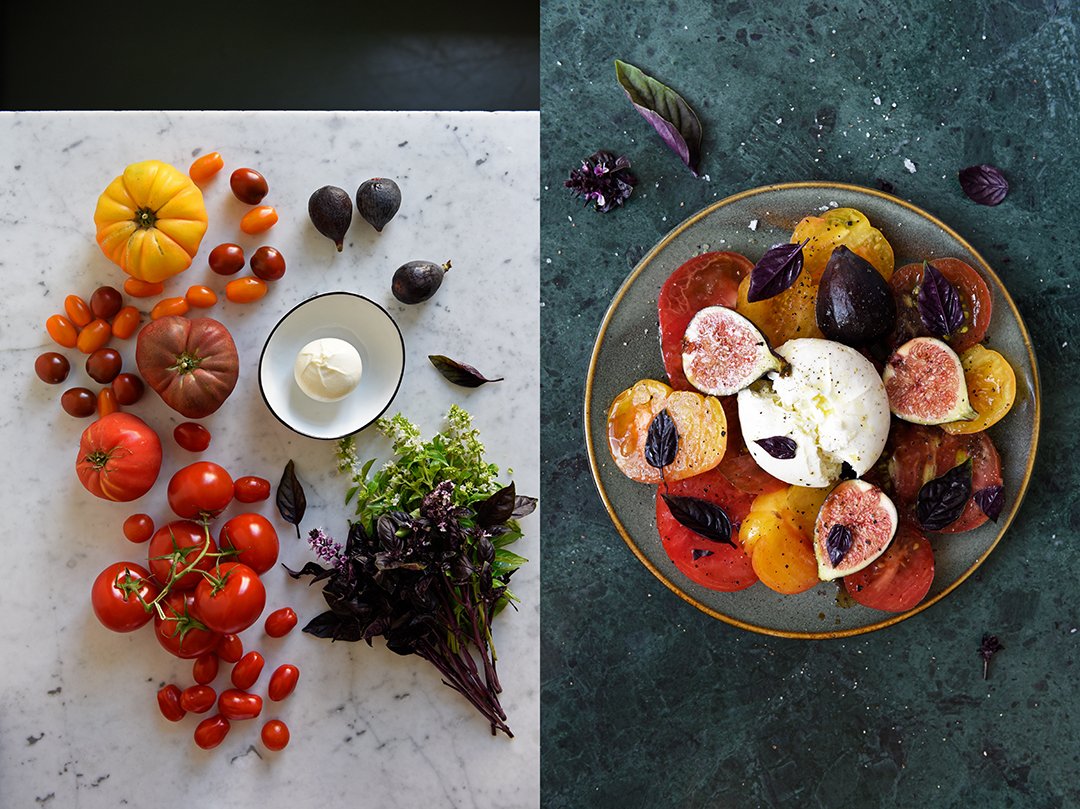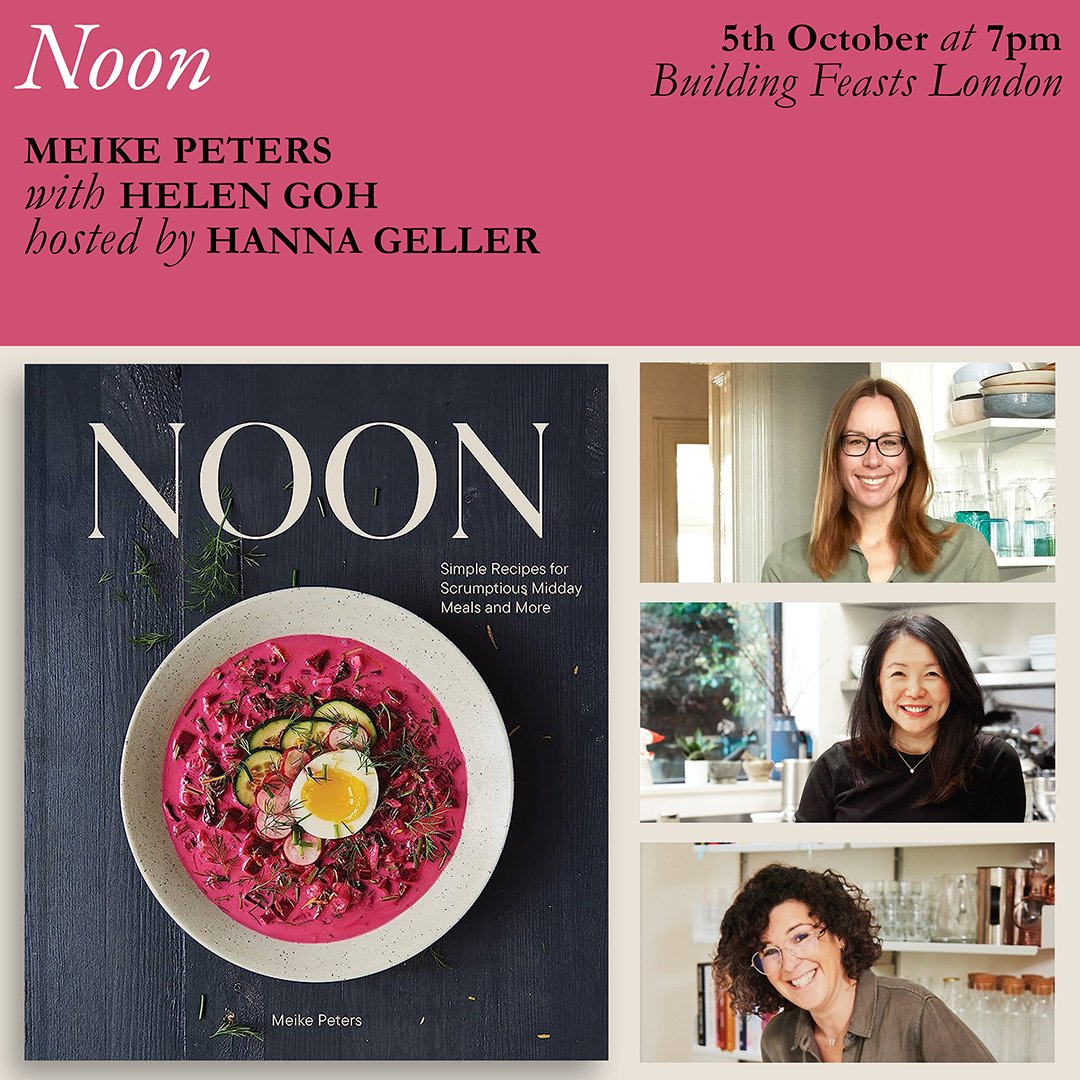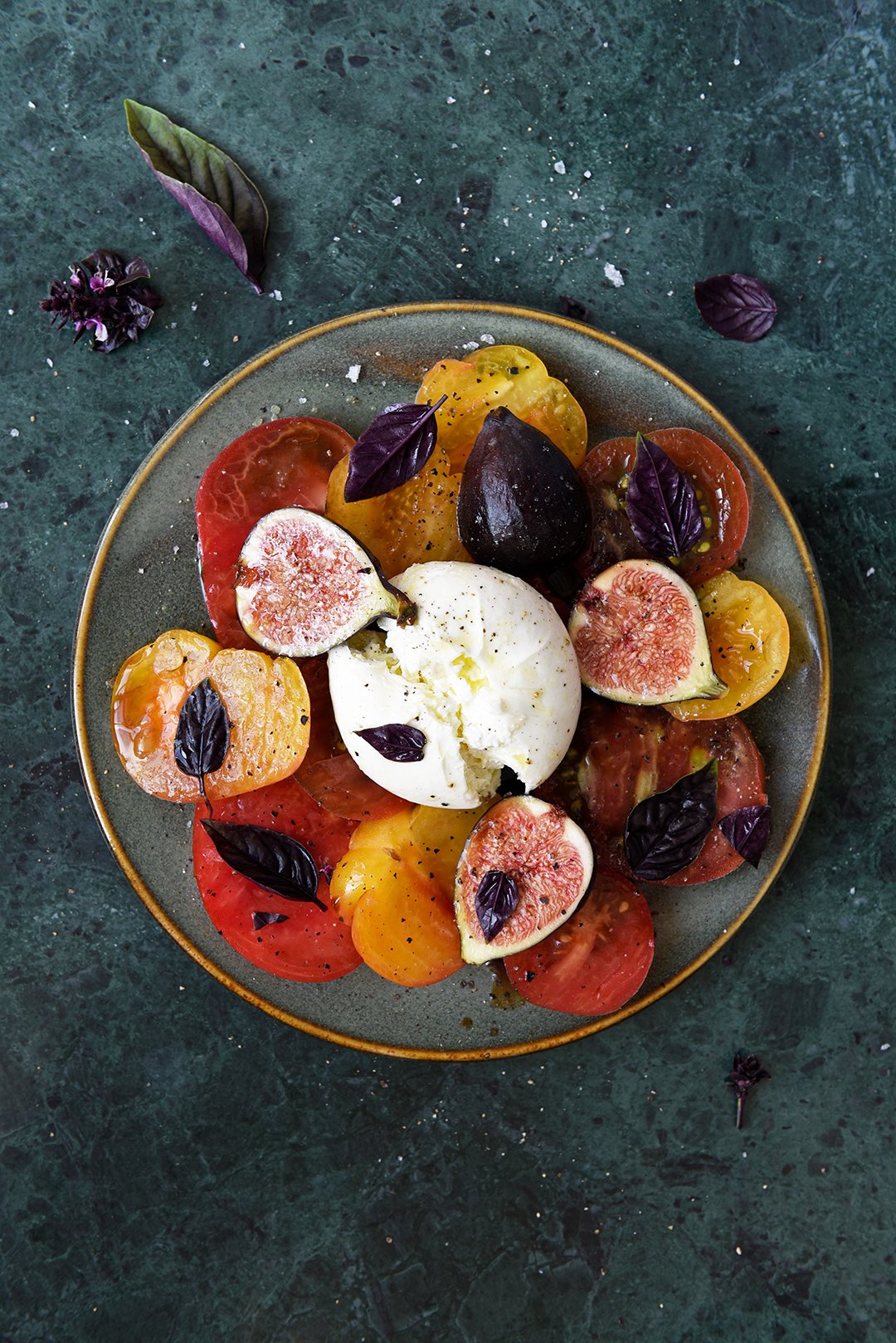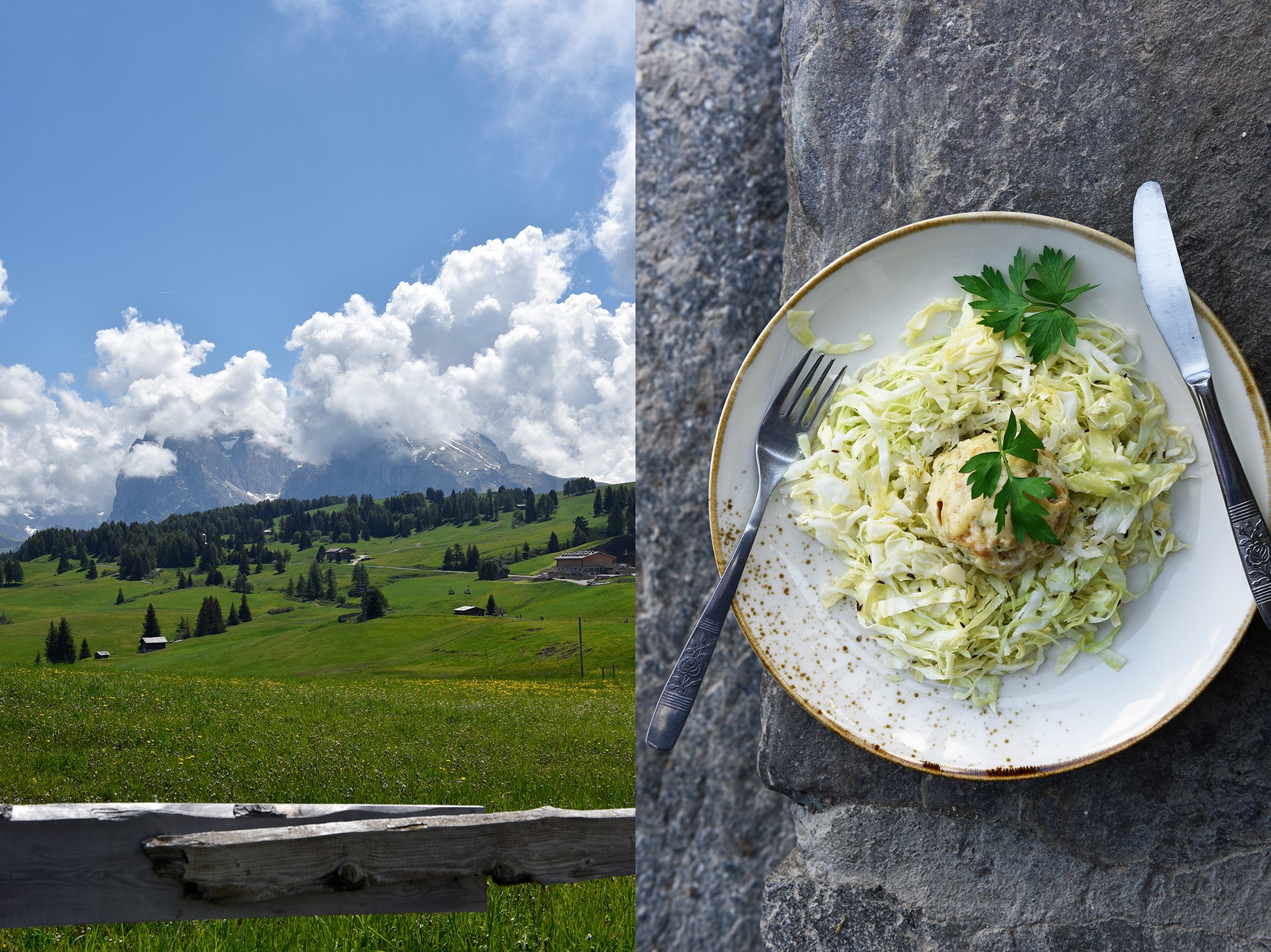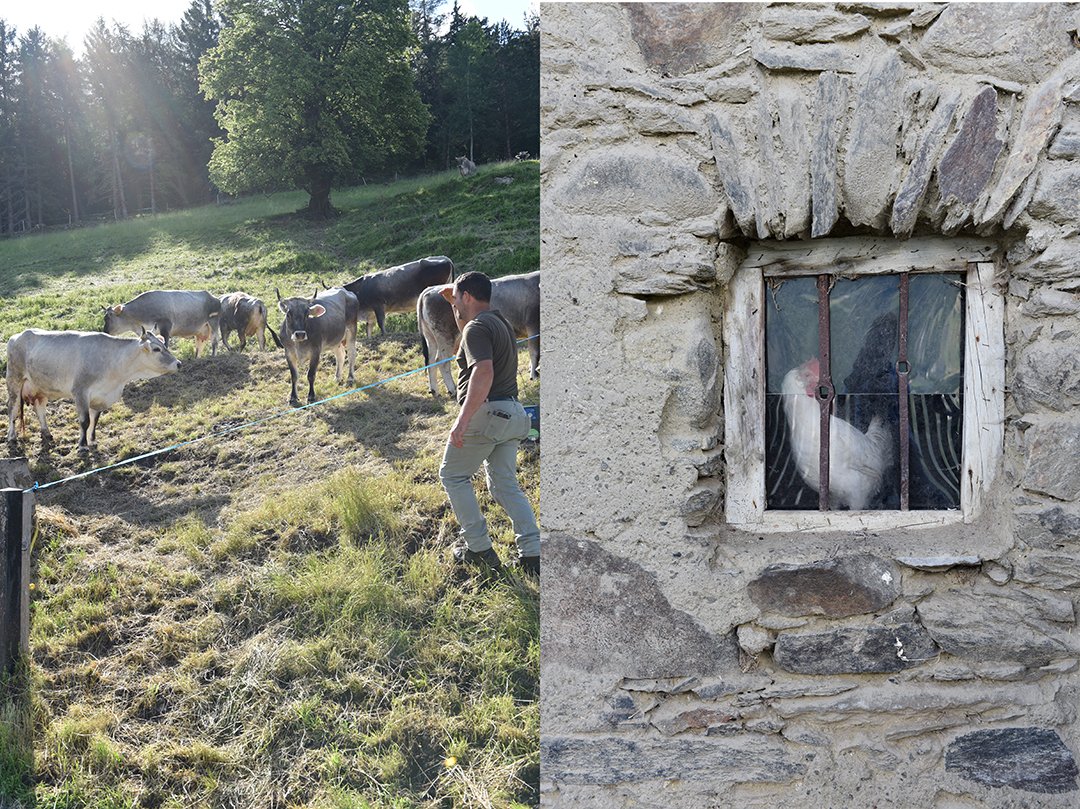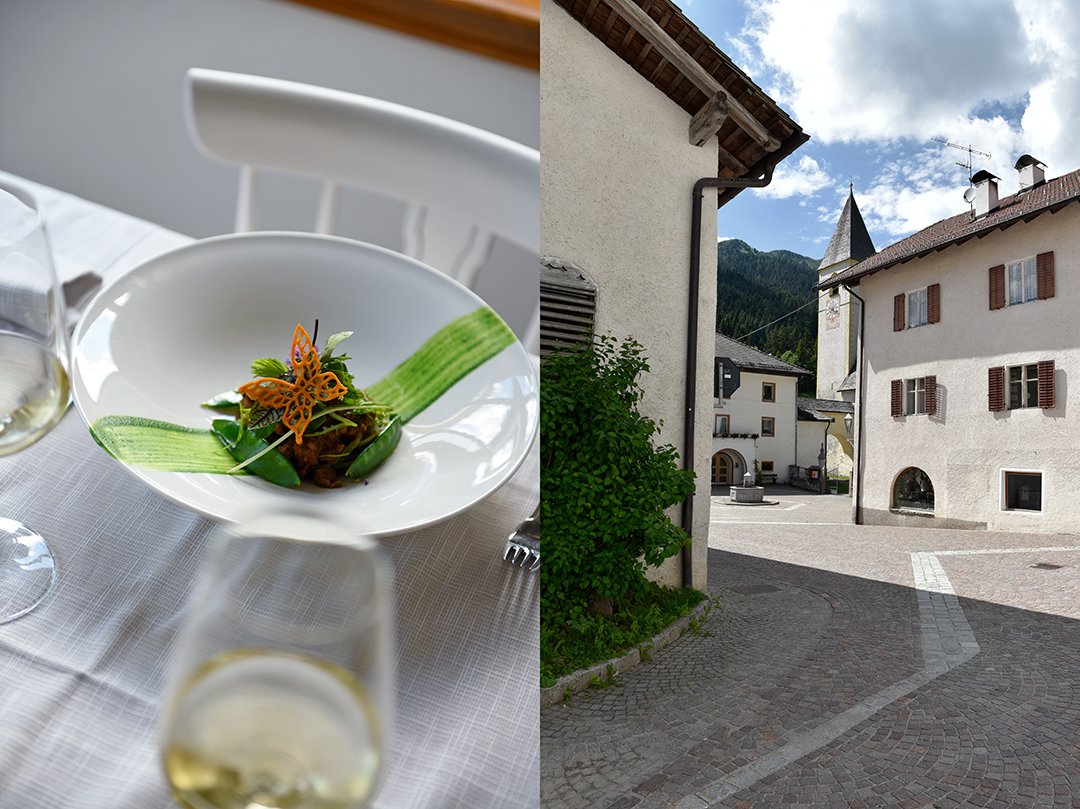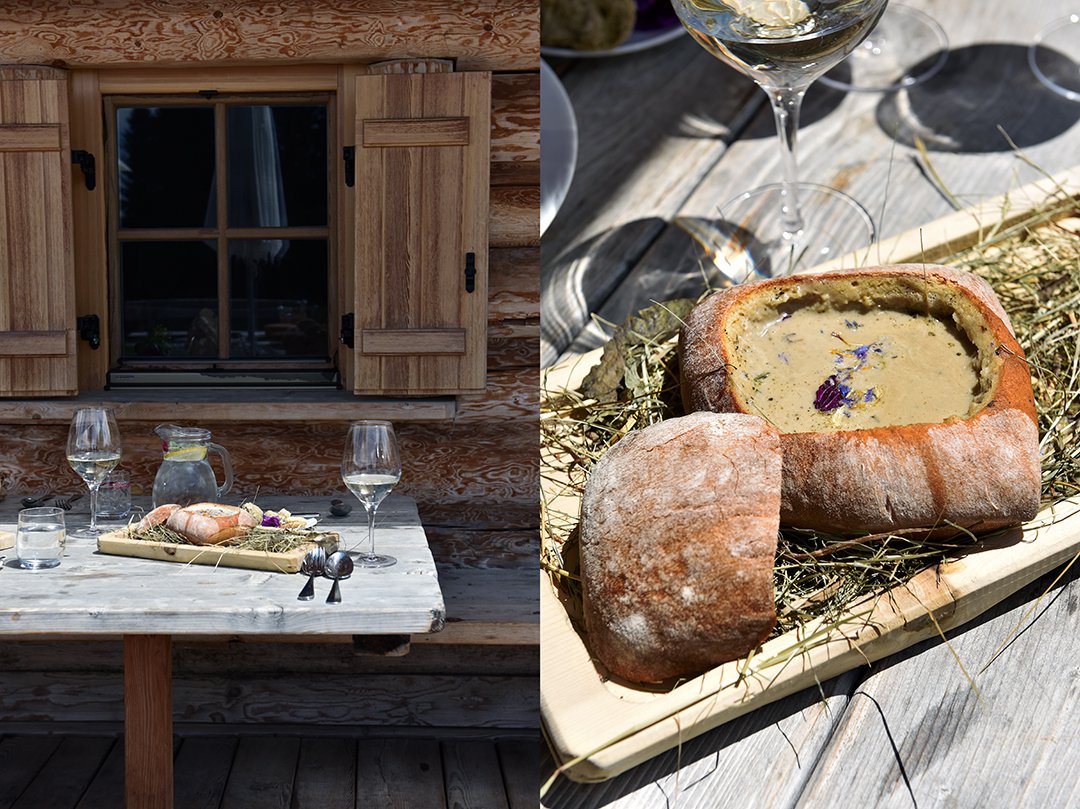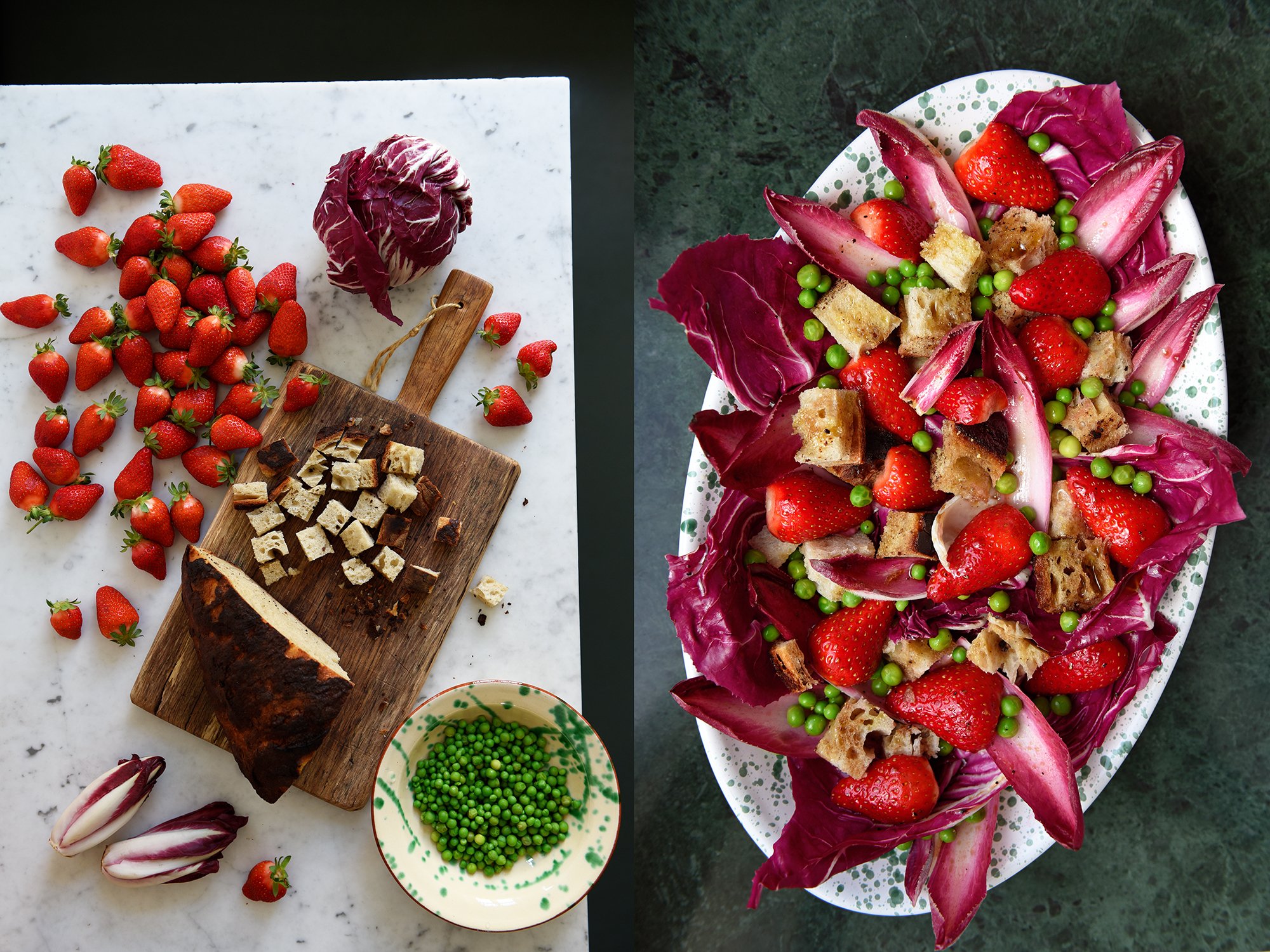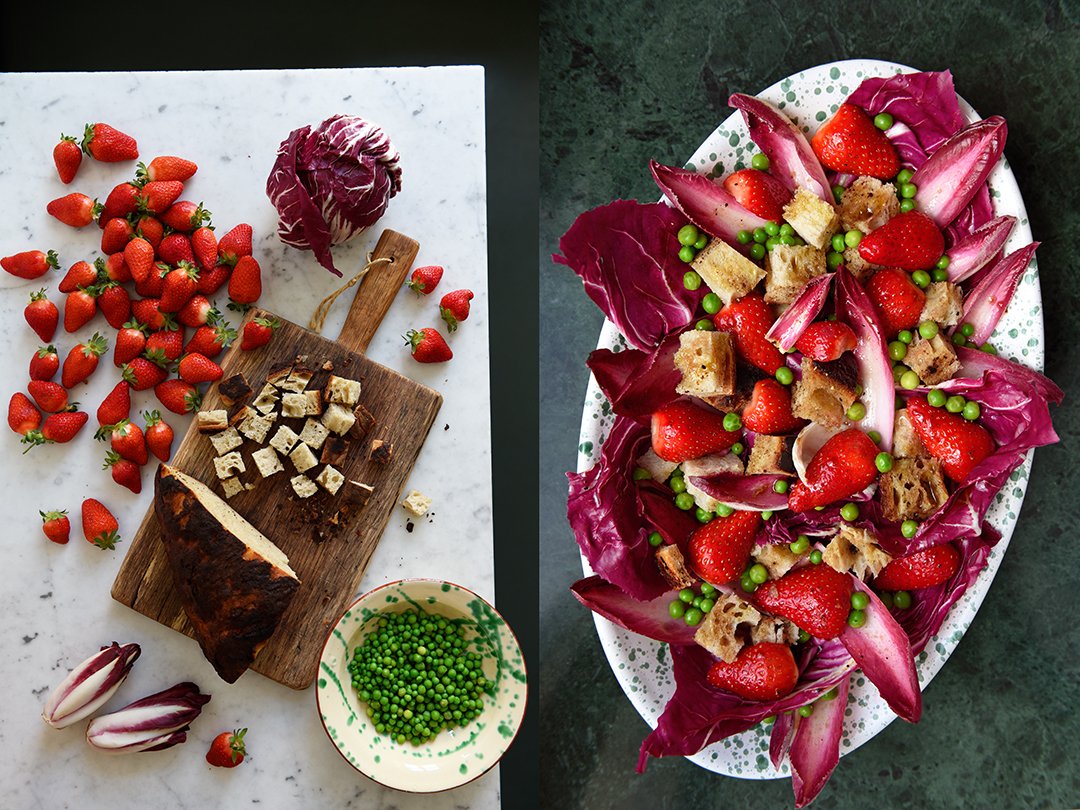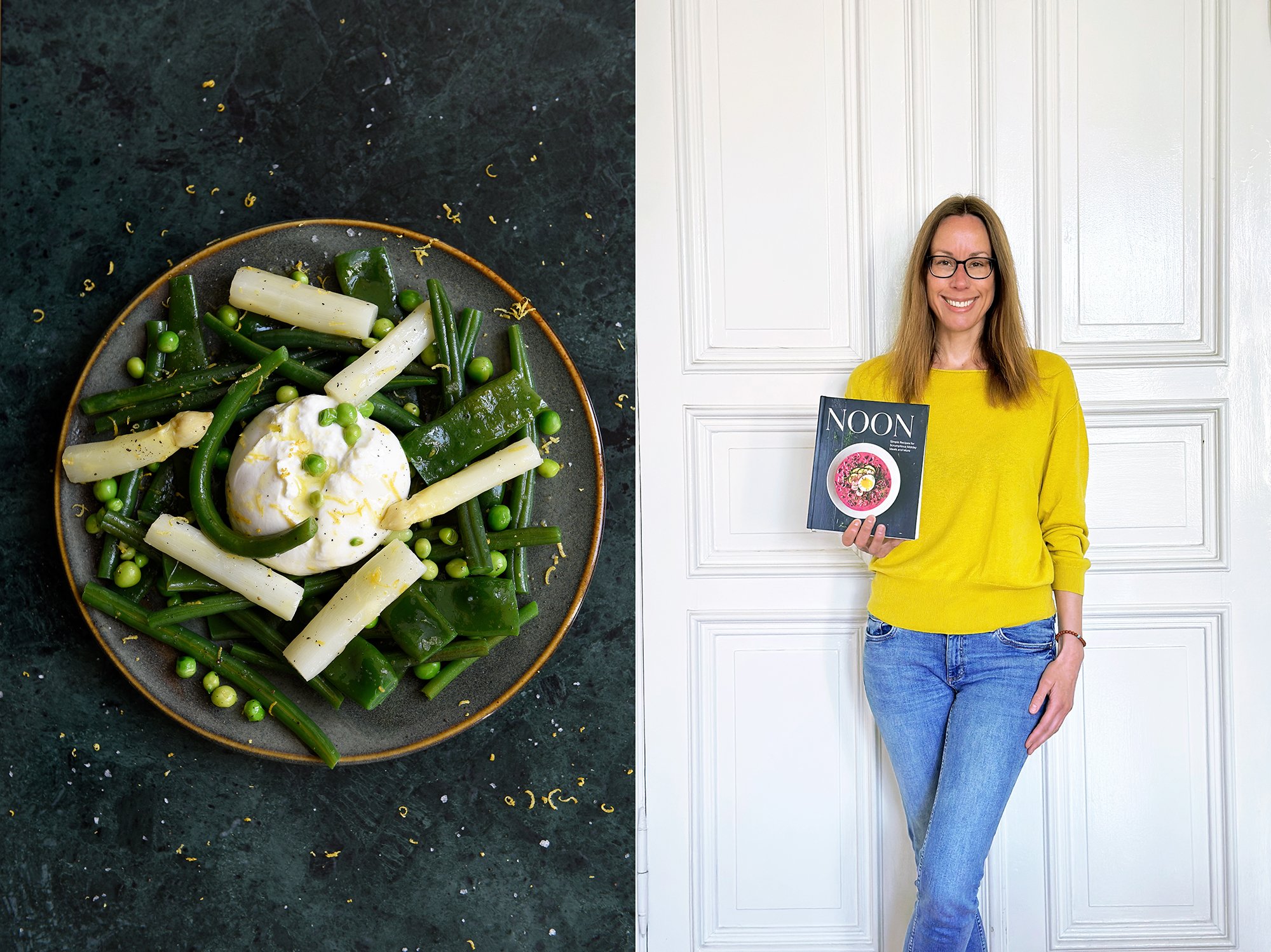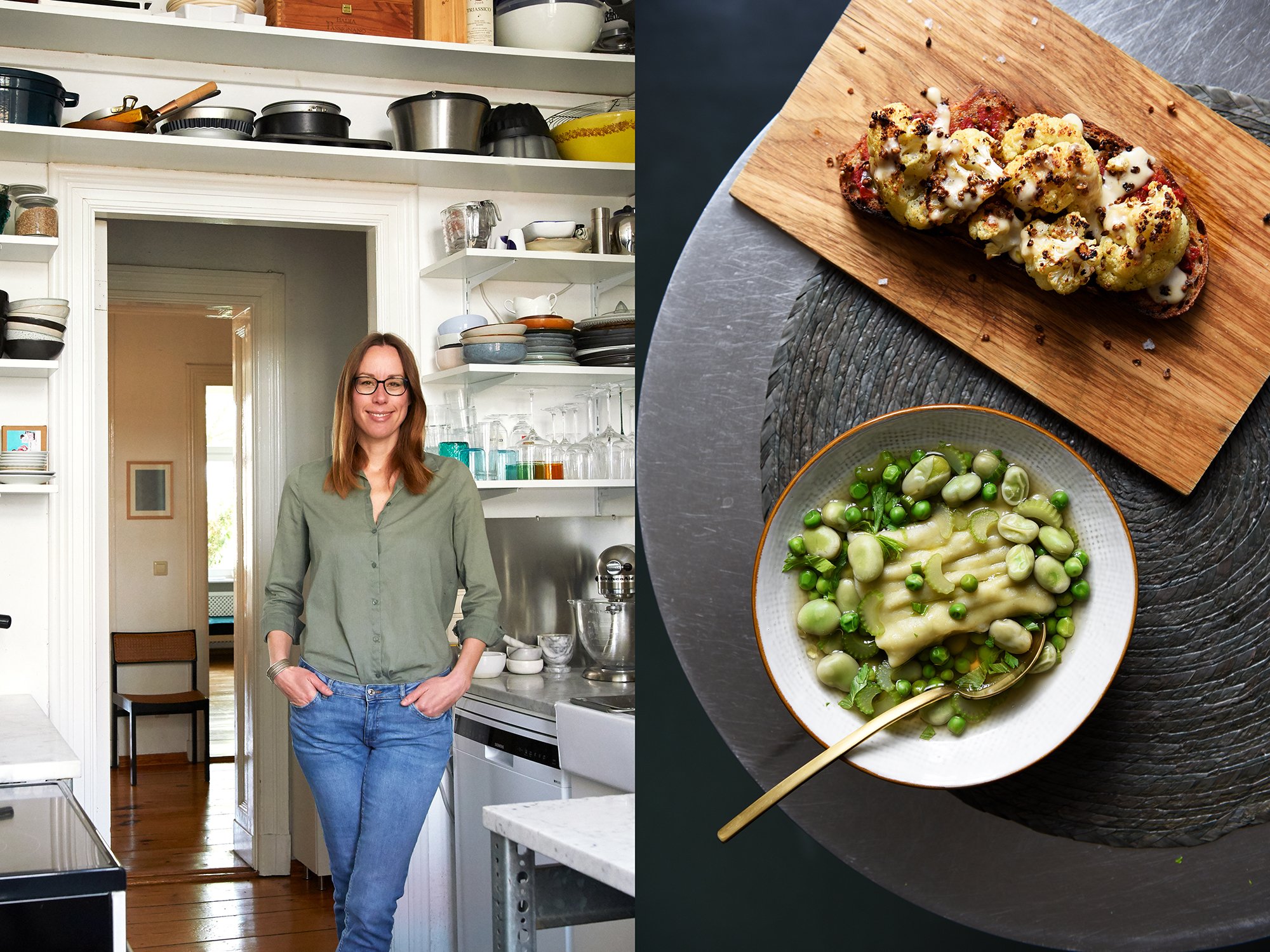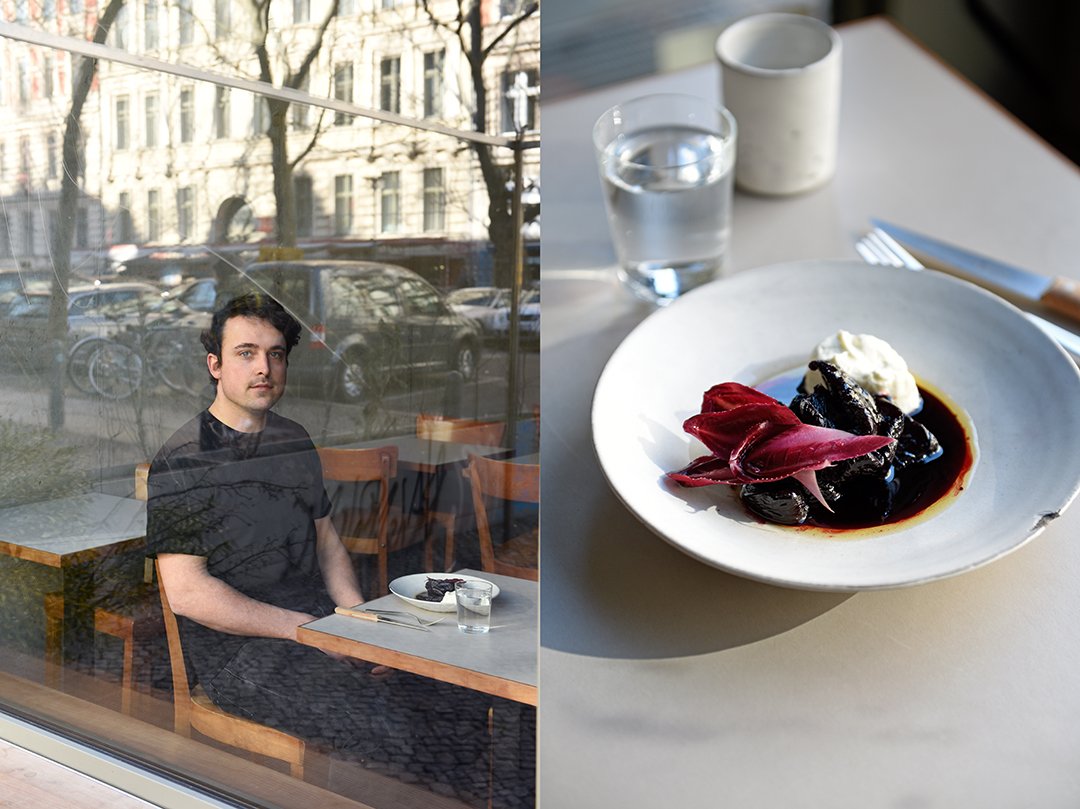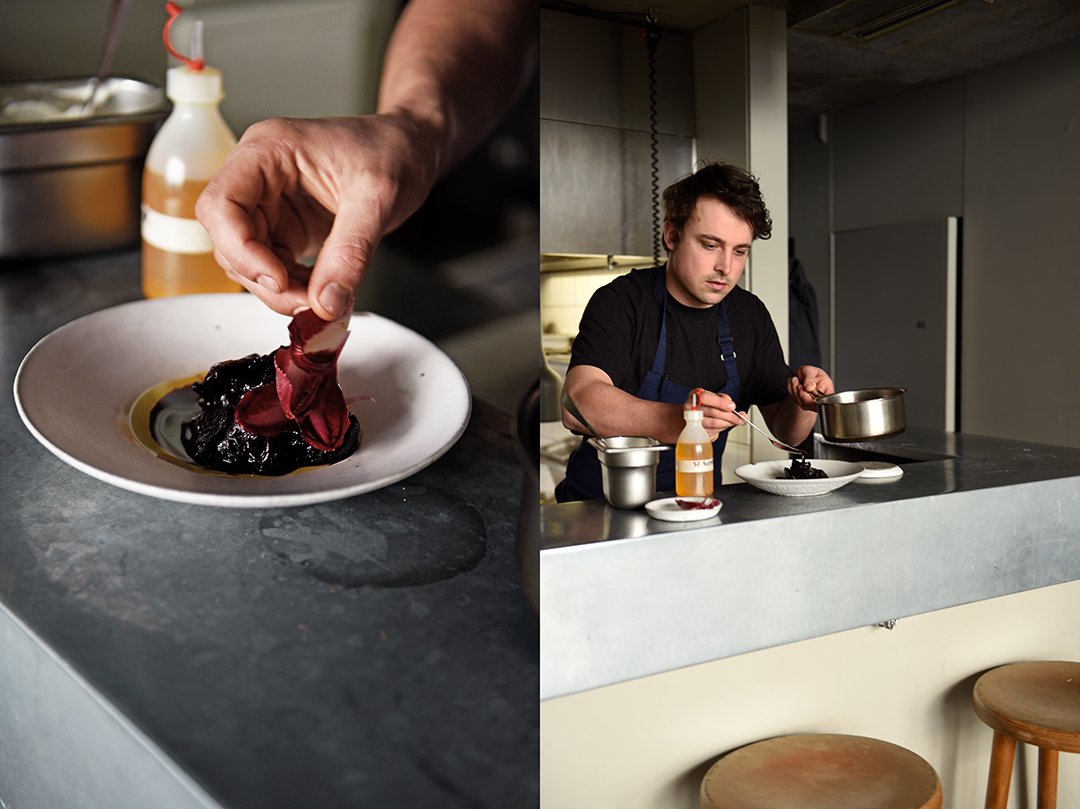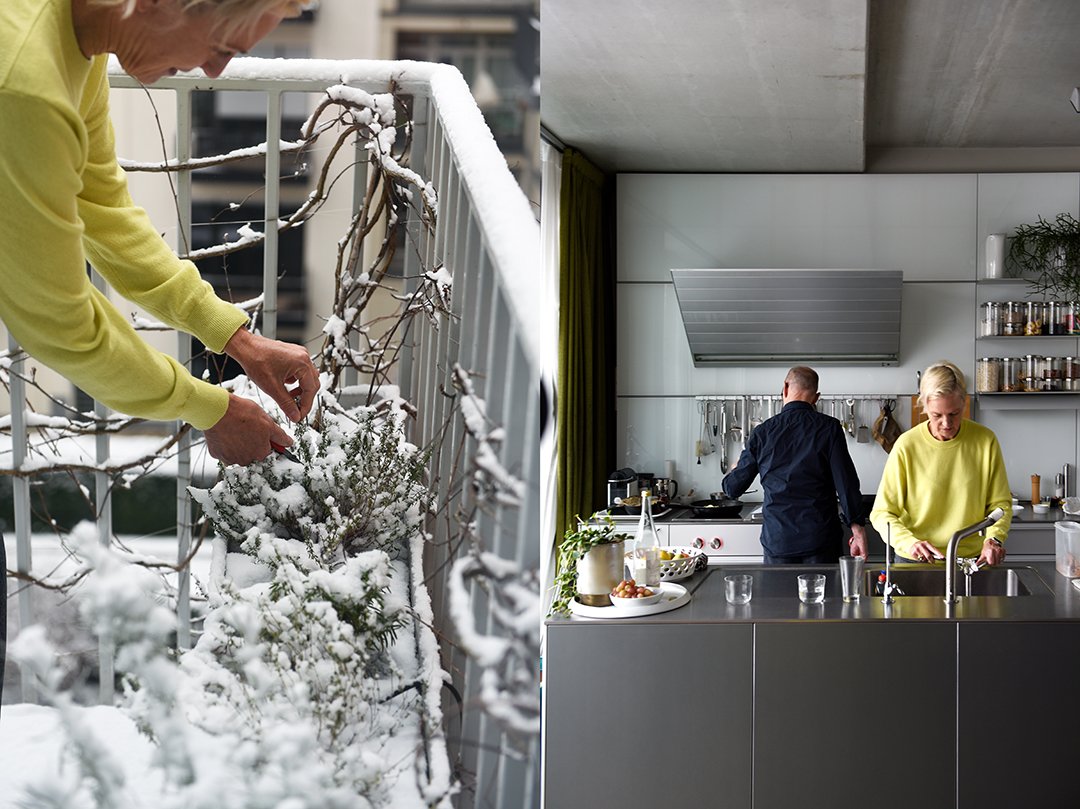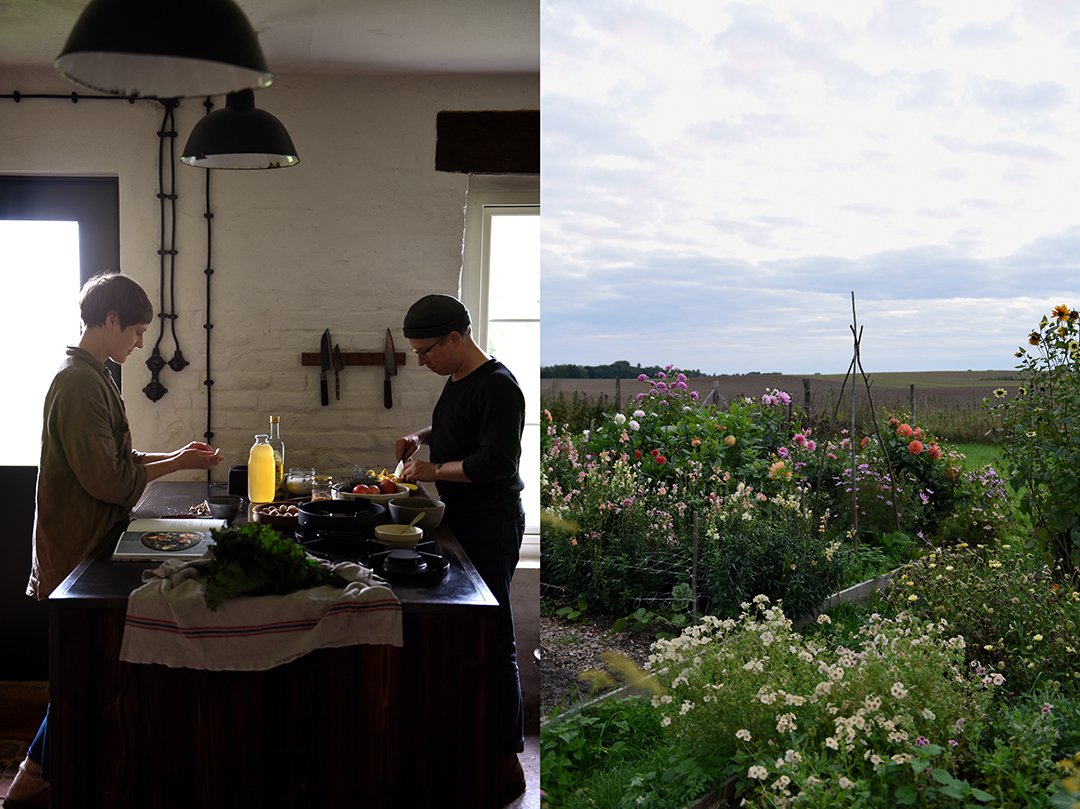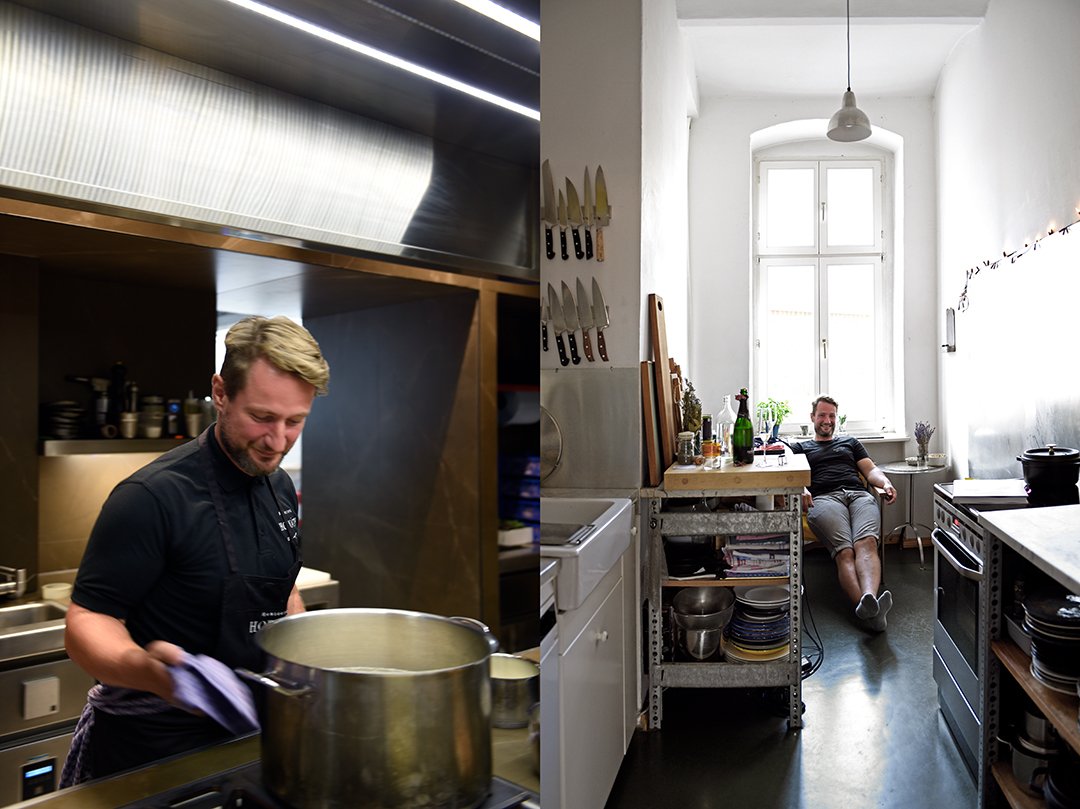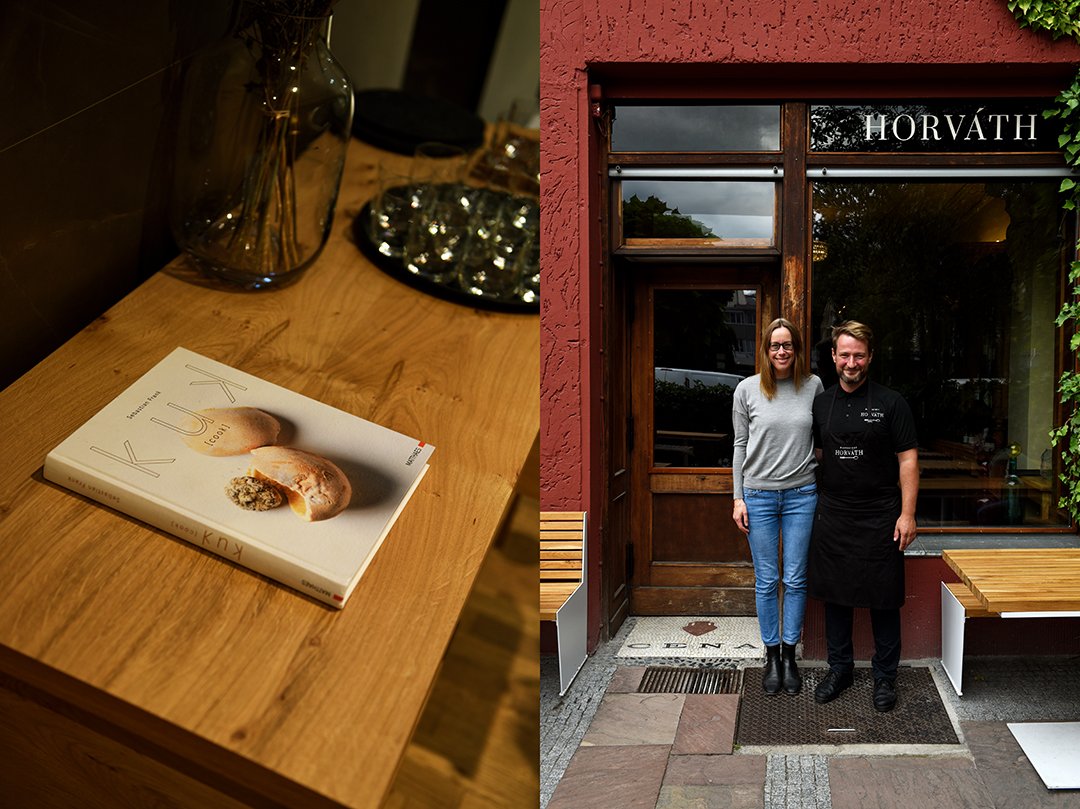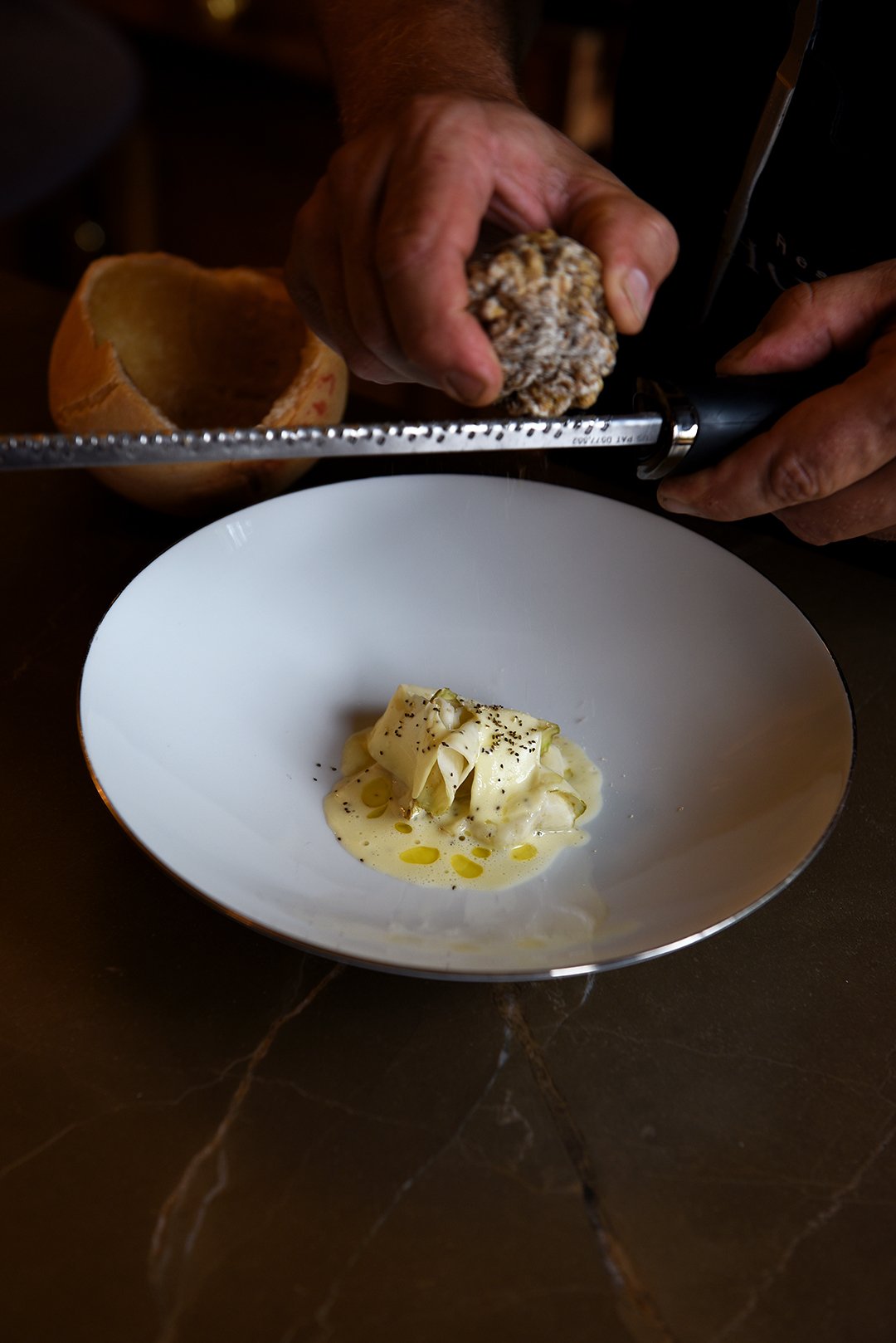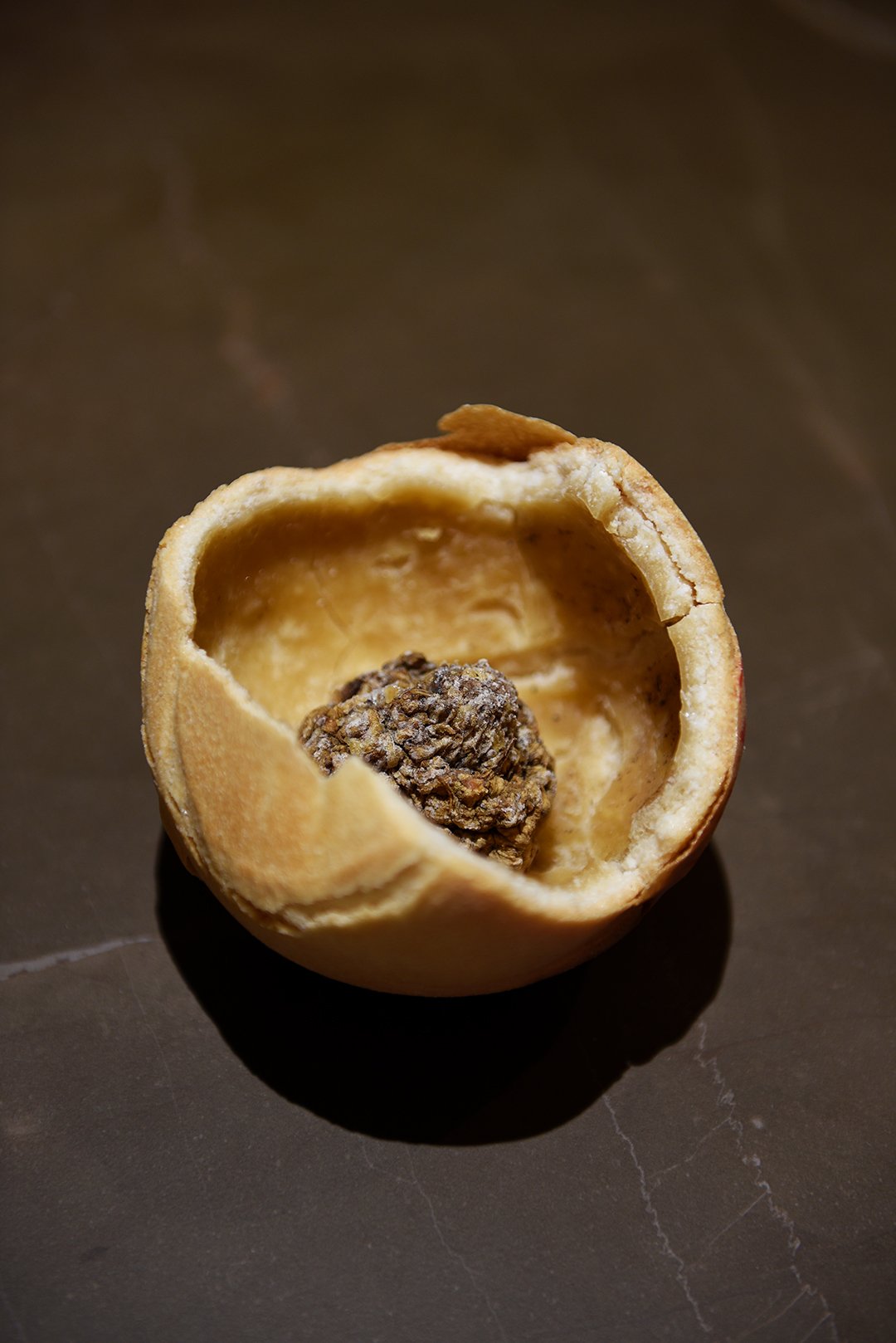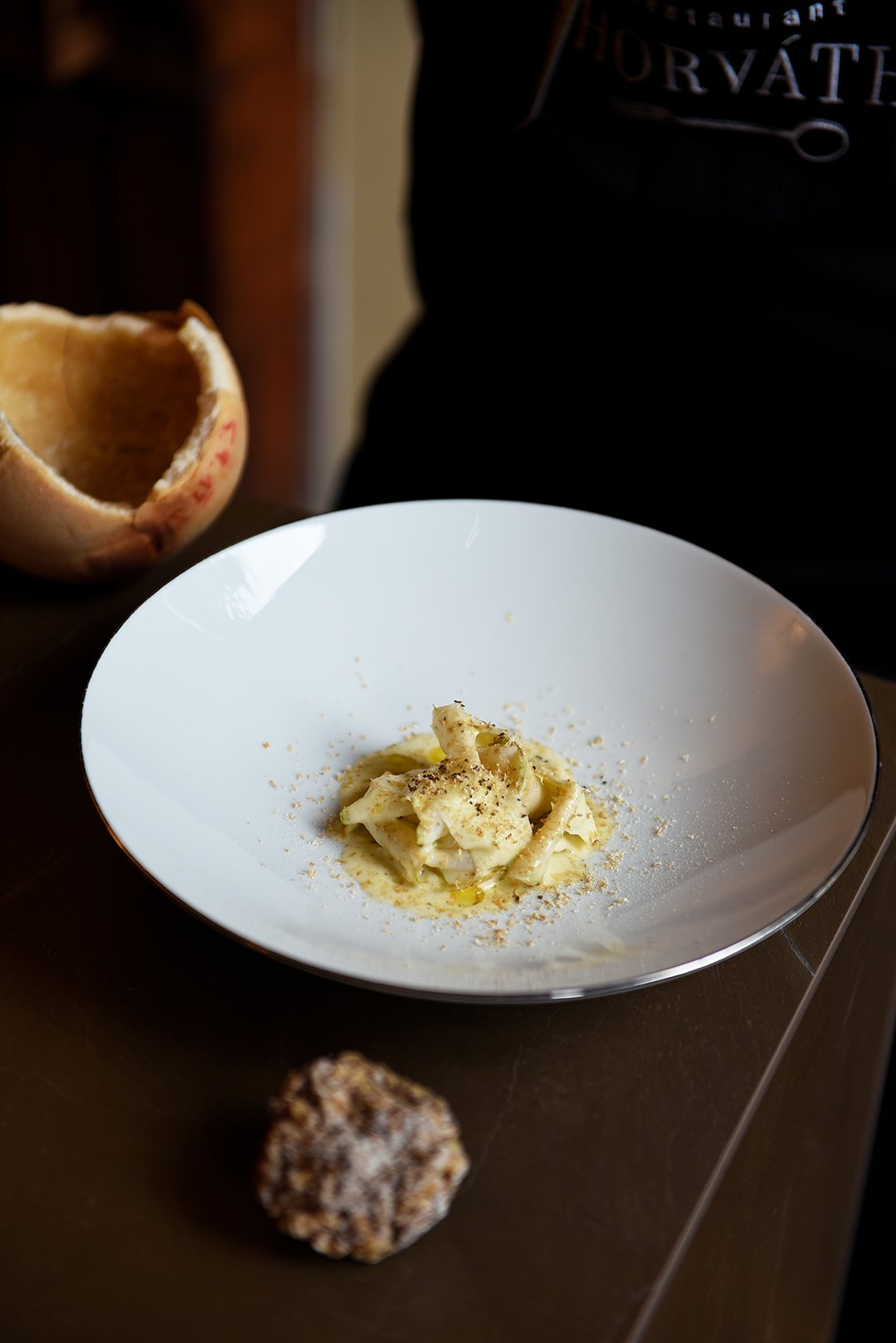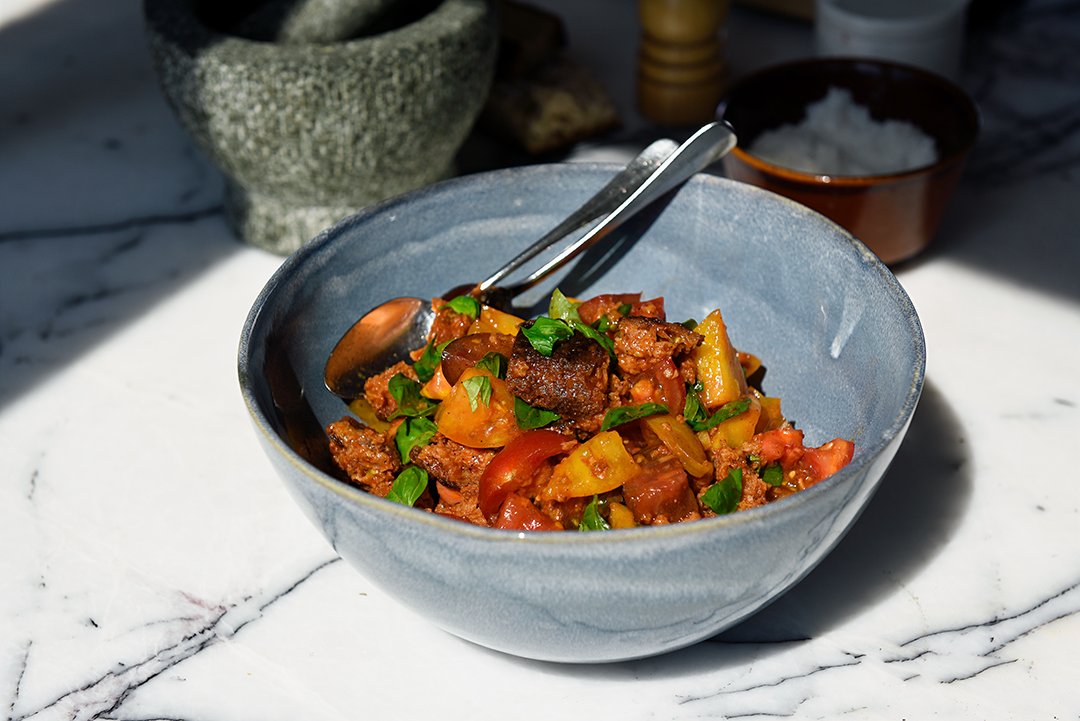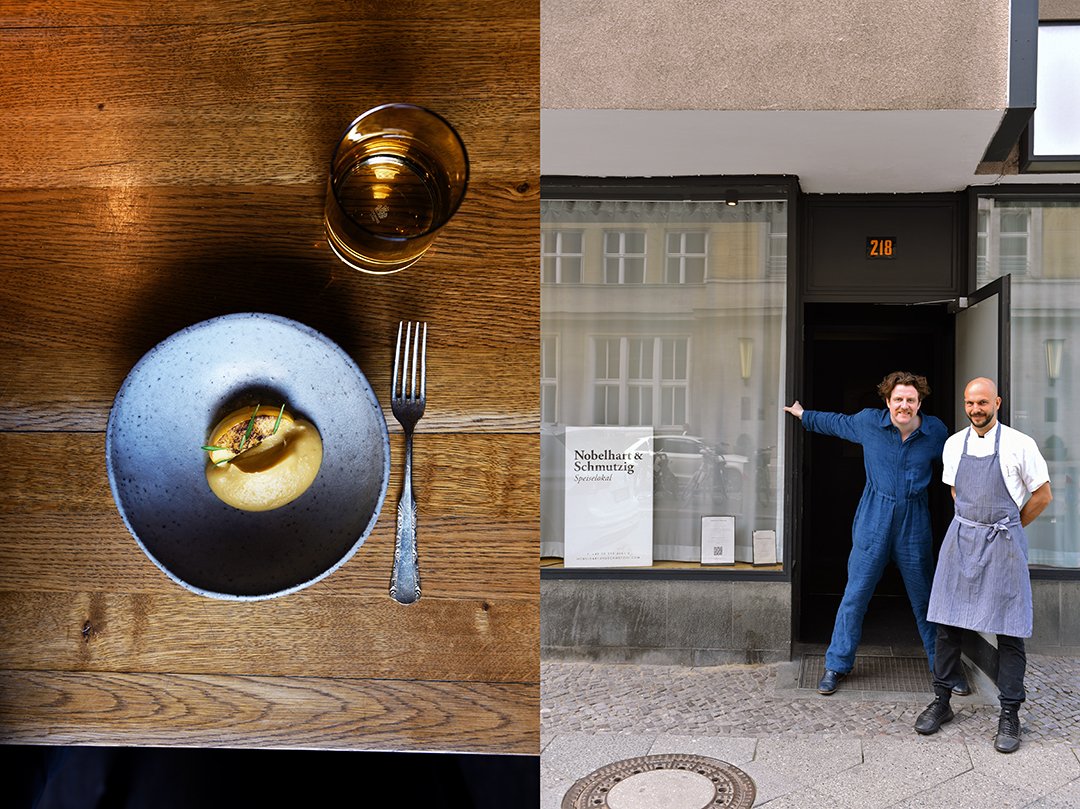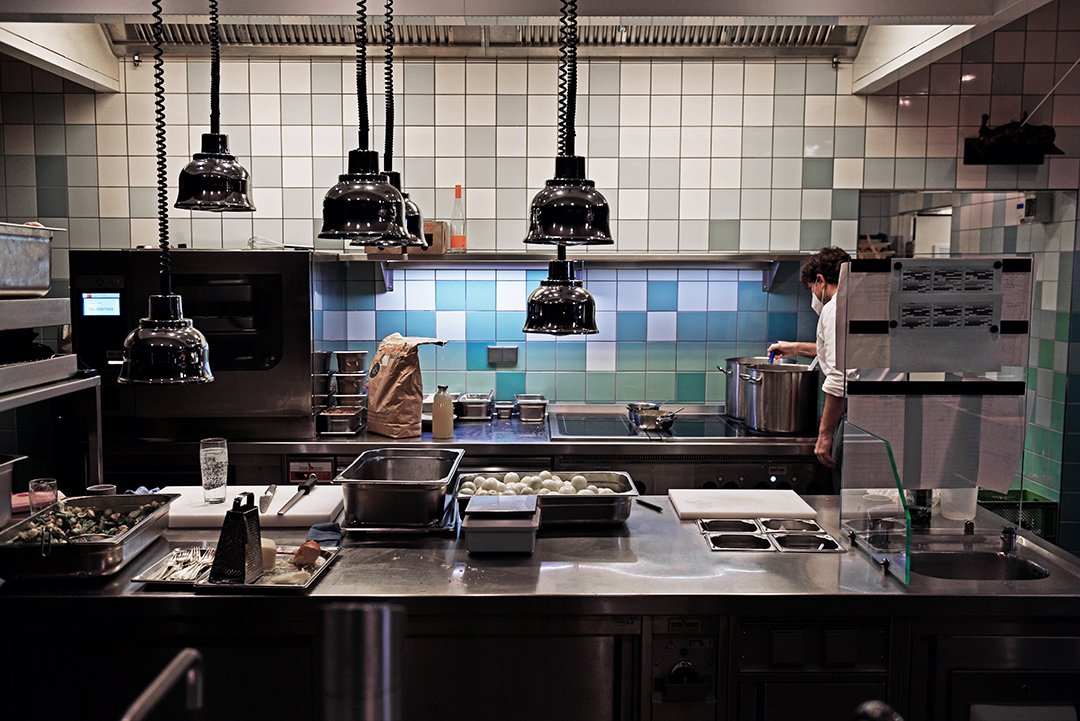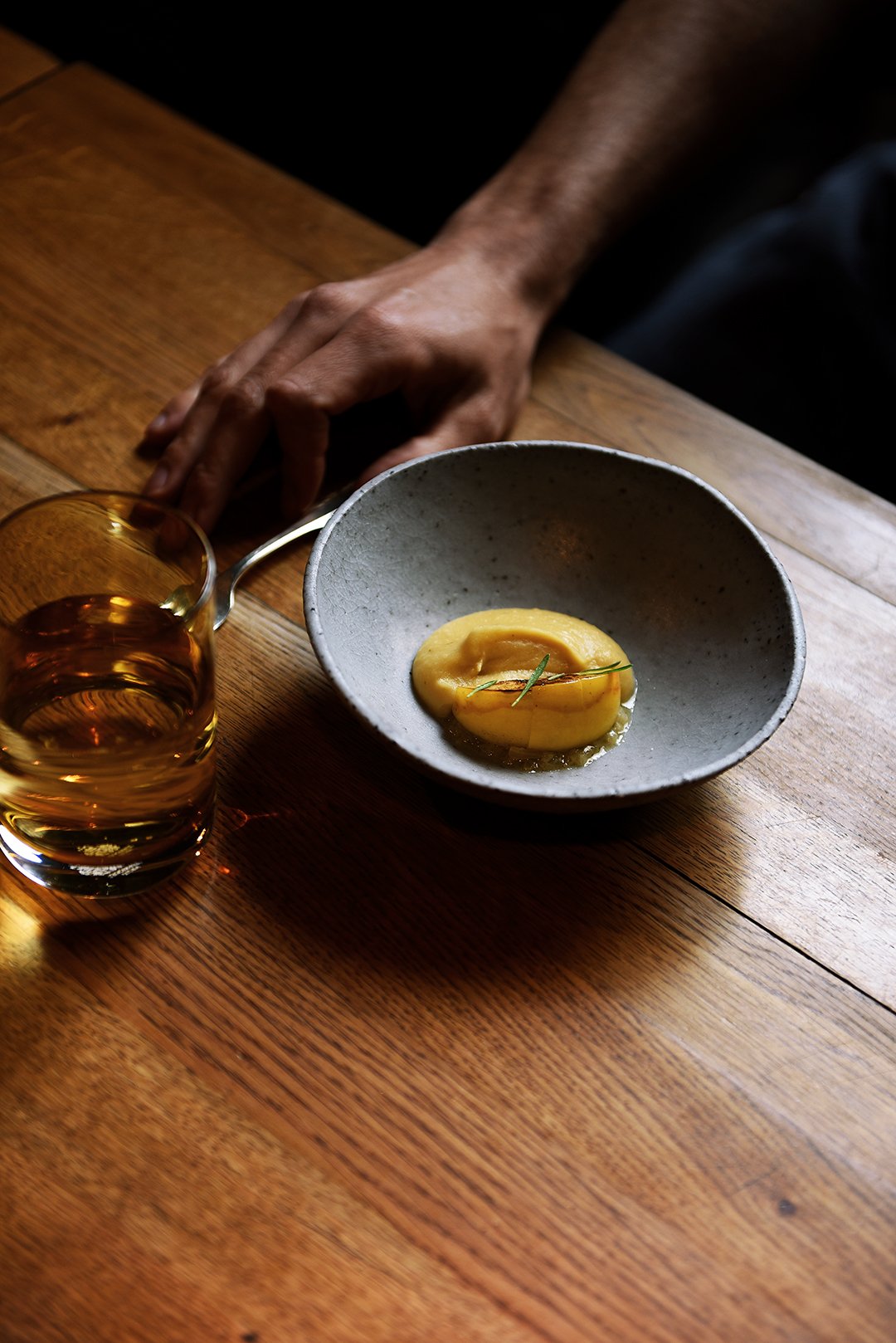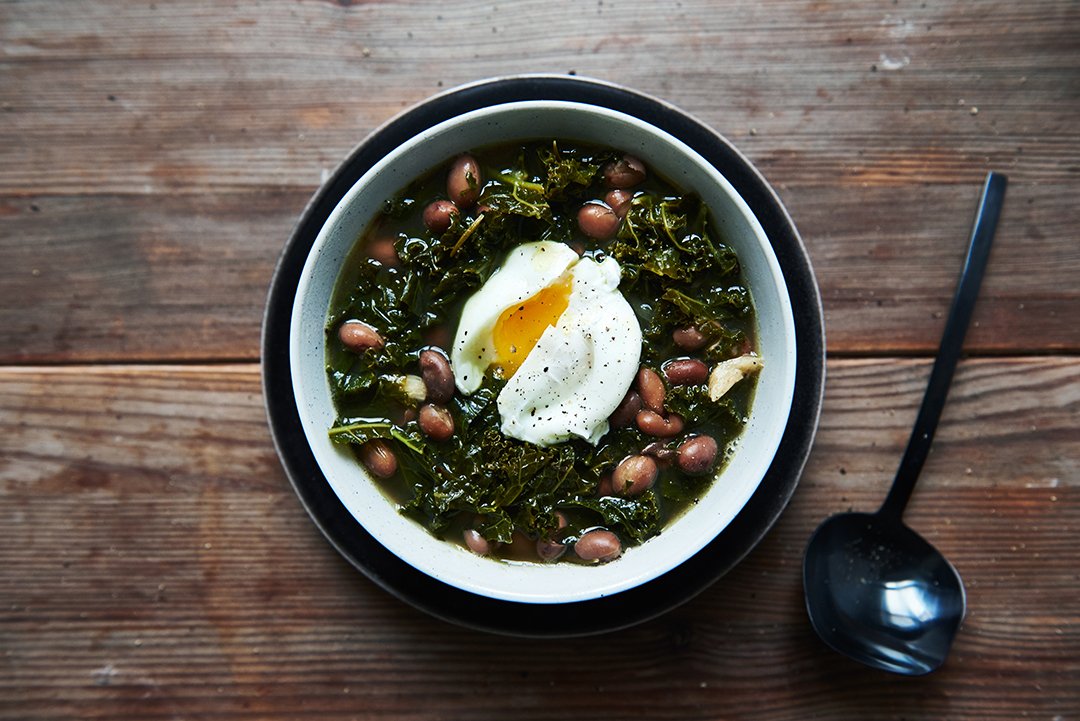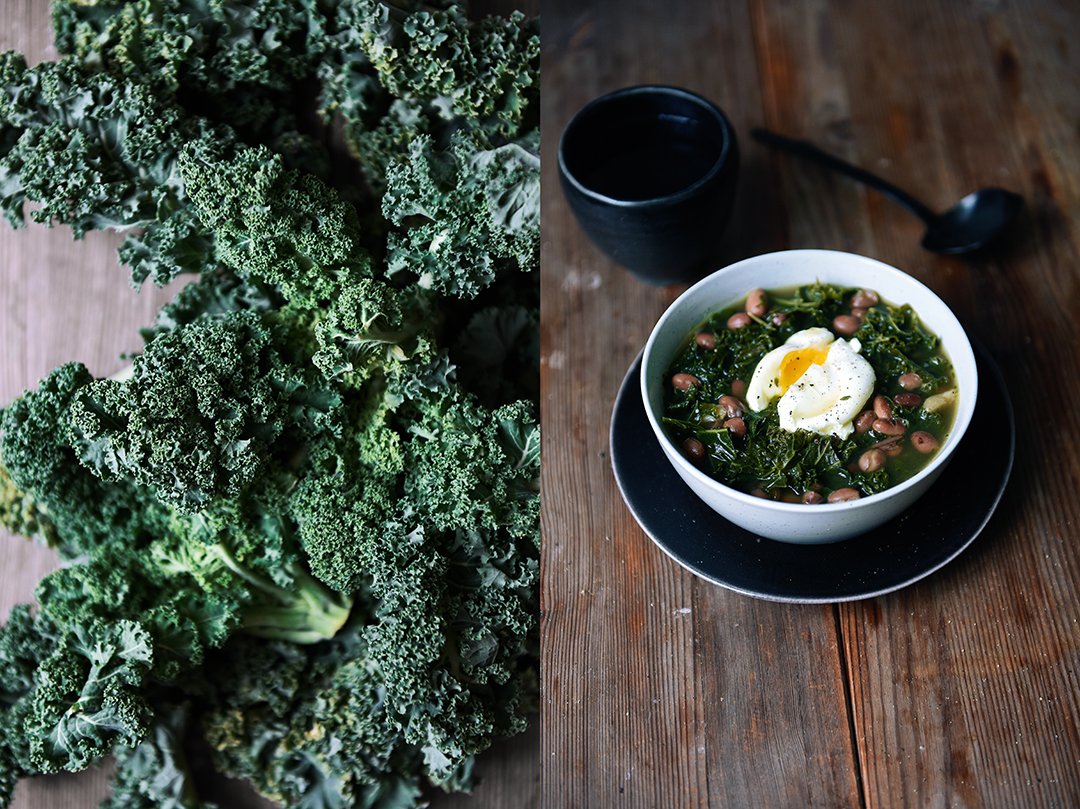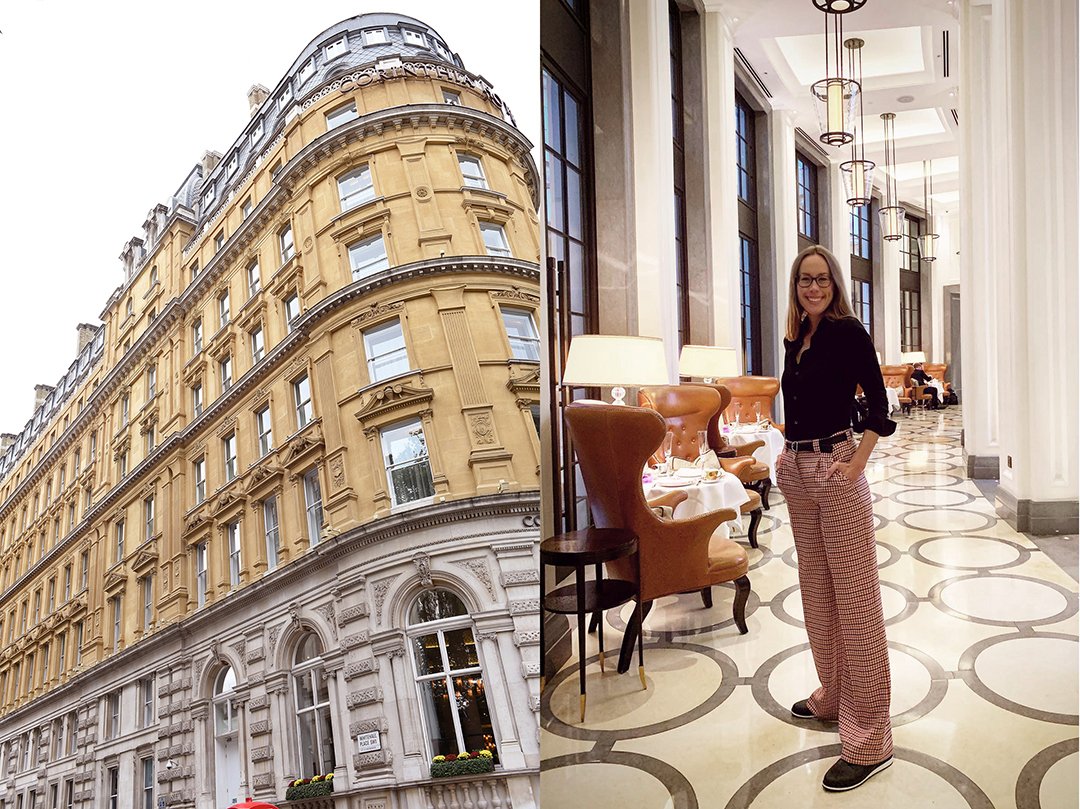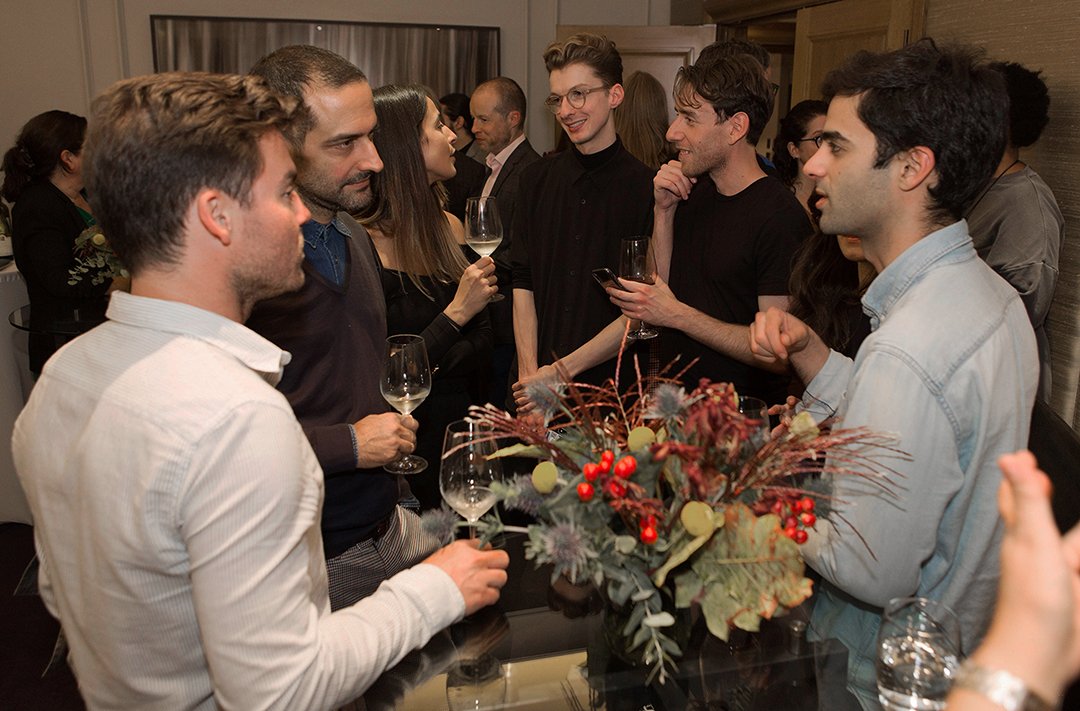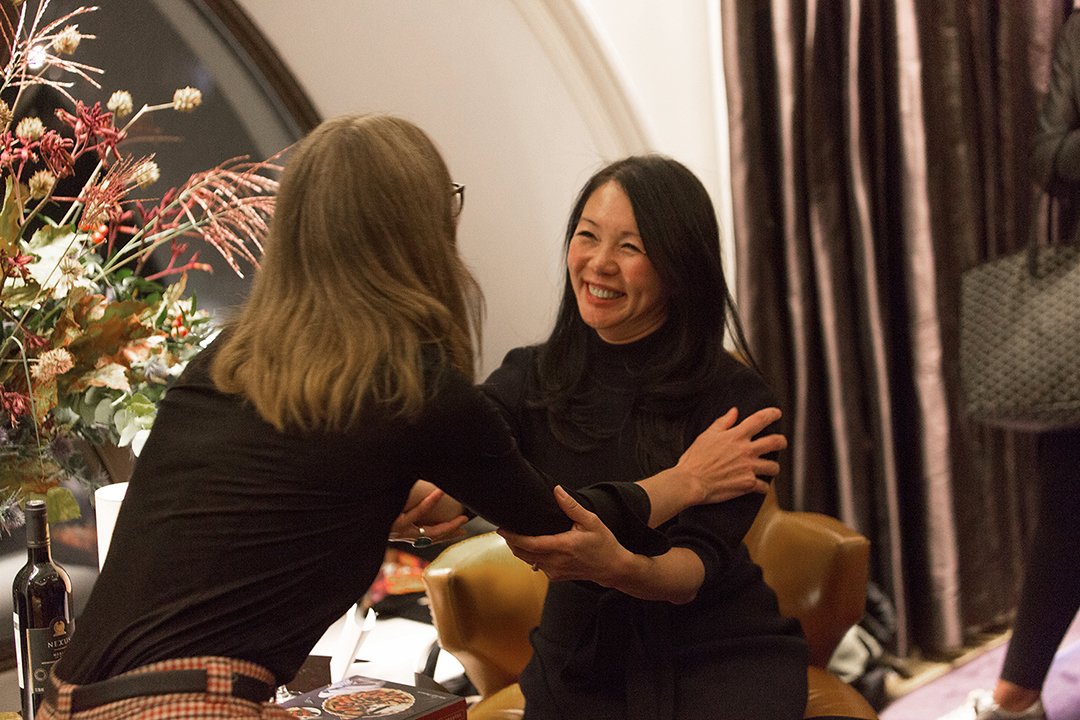LONDON
Food creates that safe, innocent space where we can meet without being a threat to each other; where we can be ourselves, embrace the fact that we are all unique through our unique stories, but when we exchange our stories - and the food connected to them - our paths converge and our lives intertwine.
To be able to share our stories, we must let go of our defenses, of our fear to be judged, condemned, or misunderstood by the ones who listen. We must accept our own vulnerability. The ground will feel wobbly, uncertain at times, but once we share our true story - and fully identify with that story - we transform; we get closer to our self and become stronger. When understanding is mutual, heartfelt on both sides, when we allow compassion, we have a real chance for change.
London was the last stop of my NOON book tour and the audience, our guests, made it easy for me to let go of my own defenses. It was an intimate evening at Hanna Geller’s (Building Feasts) beautiful, calm home. Helen Goh and I were in conversation and Hanna gently guided us through our lives, our books, our cooking and baking, and she made us feel safe to talk just as much about our confidence as about our insecurities. Sitting together with our guests in a circle, sharing food and champagne, and sharing our stories and thoughts about our lives and careers, but also sharing our vulnerability, brought all of us closer together.
Hanna opened more than just the doors to her home for the NOON book launch, without her help, trust, support, and friendship the evening wouldn’t have been possible. She prepared the food while I was running around London stock signing copies of my book, she bought champagne glasses when I noticed that I had forgotten to hire them. And the night before the event, I had the most peaceful dinner with her and three of her four boys. Sitting at her kitchen counter, a bowl of steaming soup in front of me, a dripping cheese sandwich in my hand, everyone chatting and laughing, made me feel so good, so calm, and ready for the London book launch.
And then, last Thursday night, we filled our glasses with Lallier Champagne’s glorious Grand Rosé Brut. Just like in Berlin, everyone fell in love with its fine fruity taste and delicate bubbles. Thanks to Aileen of Lallier UK, we even got a brief but very entertaining introduction to the champagne’s history and flavor profile. I can always enjoy a glass of champagne, any time, but it fit particularly well to the snacks from NOON that we - or rather Hanna - prepared and served to our guests: Peach Tart with Stilton (this is also the recipe that I’m sharing with you today, see below), Roasted Squash, Parsnip, and Grape Salad with Blue Cheese (click here for the recipe), and the Sauerkraut and Hummus on Sourdough Bread that already won the hearts of many NOON readers all over the world (here’s the recipe).
While I was in London, I got the chance to meet some book sellers at their independent bookstores to sign copies of NOON. There’s something magical about these places, the smell of books, the eyes of the customers concentrated and focussed while leafing through the pages of a book that, in that moment, becomes a world on its own. There’s a certain peace in these stores that soothes the mind and gives it some rest. That’s the magical power of a book.
Here’s a list of the London bookstores where you can find signed copies of NOON:
Books for Cooks (no signed copies but co-owner Eric Treuillé tests and serves dishes from the cookbooks at his Notting Hill bookstore / restaurant)
When you only have a few days in a city - for pleasure or business, it doesn’t really matter - when you’re on your feet constantly, it’s heavenly to come back to a hotel that feels as comfy as home but still so special that it excites and makes you smile every time you enter the loungy lobby.
The Hoxton Holborn managed to help keep my mood and energy level high and happy. Right in the center, the hotel sitting snug between Soho and Farringdon, I often didn’t even use the tube and just walked. My room was so quiet and cozy that I could have stayed for weeks (there’s something about British interiors, especially in bedrooms and bathrooms, that makes me forget about my usually quite minimalist approach to design and consider changing my entire Berlin flat from white walls to extravagantly patterned wallpapers).
Unfortunately, my schedule was tight and I didn’t get to indulge as wildly into lunches and dinners as I would have loved to, but here are some of the spots that I enjoyed while running around the city:
Quo Vadis, Smoked Eel Sandwich with a glass of crisp white wine, sitting outside on the bench (recommended by inspiring Gurdeep Loyal, author of Mother Tongue)
St. John’s Marylebone, Eccles Cake with Lancashire Cheese
Borough Market, Dorset oysters at Shellseekers (they also had the biggest oyster I’ve ever seen, 10 years old, but in the end I went for the smaller 3-year-old ones; they tasted fantastic, a little sweeter than my beloved French Fines de Claire)
Bishops Finger pub, traditional Fish & Chips
Ottolenghi Spitalfields (a tradition, for lunch)
The official NOON book tour came to an end and I want to thank YOU for following my journey that led to this book, and for your support of my work, of my recipes, and of this book that means so much to me. It’s at the same time scary and beautiful to see a book leave my kitchen and enter yours. So enjoy NOON, now it’s yours!
And I want to thank everyone who made the NOON book tour possible, in New York, in Berlin, and now in London:
Our curious guests, Hanna Geller and her son William, Helen Goh, the 3 ladies of Lallier UK: Aileen Rolfe, Rebekah Crabb, and Harriet Chandler, Champagne Lallier and Johannes Rohmer, Ingrid Meyer-Lohrmann and IML Kommunikation, everyone at The Hoxton Holborn, Eva Kaiser PR, Gianni Diliberto, Chronicle Books, and everyone at the Abrams&Chronicle Books UK headquarters.
So much love! Meike xxx
The photos taken at the NOON book launch in London are by Gianni Diliberto. The other pictures are by me.
Peach Tart with Stilton and Thyme
NOON: Simple Recipes for Scrumptious Midday Meals & More, Chronicle Books:
Bake your peach tart in the evening and take it with you to work the next day. At noon, go outside and sit down in a park, and when you munch on the first mouthful, close your eyes. Buttery pastry, chunky peaches, Stilton, and thyme, all in one bite, taste like a summer holiday memory turned into food. The sweet, fruity juices and salty cheese can almost compete with a blissful day at the beach.
NOTE: you can also replace the peaches with pears.
Serves 3 to 4
FOR THE PASTRY
2 cups (260 g) all-purpose flour
1 teaspoon fine sea salt
½ cup plus 1 tablespoon (130 g) unsalted butter, cold
1 large egg
FOR THE TOPPING
3 large white doughnut peaches, cut in half lengthwise
2 large yellow peaches, cut into quarters
2½ tablespoons olive oil
3 ounces (85 g) Stilton or Roquefort, crumbled
15 fresh small thyme sprigs, plus 1 tablespoon thyme leaves
Flaky sea salt
Coarsely ground pepper
For the pastry, combine the flour and salt in the bowl of a stand mixer fitted with the paddle attachment. Add the butter and use a knife to cut it into the flour until there are just small pieces left. Quickly rub the butter into the flour with your fingers until combined. Add the egg and mix on low just until the dough comes together. Form the dough into a thick disc, wrap it in plastic wrap, and freeze for 10 minutes.
Preheat the oven to 400°F (200°C).
On a work surface, place the dough between 2 sheets of plastic wrap and use a rolling pin to roll out into a disc, large enough to line the bottom and sides of a 10 to 12-inch (25.5 to 30 cm) quiche dish; a smaller quiche dish makes a thicker pastry base, which is nice for the peaches. Fit the dough into the quiche dish, pushing it into the dish, especially along the edges. Use a fork to prick the dough all over. Bake for about 15 minutes or until golden. If the dough bubbles up, push it down with a fork.
For the topping, arrange the peaches in circles on top of the prebaked pastry; for the middle of the tart, cut 2 yellow peach quarters in half again and arrange in a small circle. Drizzle with the olive oil, then sprinkle with the Stilton, thyme sprigs, and a little flaky sea salt. Bake for about 23 minutes or until the pastry is golden and crispy and the cheese is melted. Take the tart out of the oven, then immediately sprinkle with the thyme leaves and a little pepper. Let the tart cool for at least 15 minutes. Enjoy warm or cold.
BERLIN
Berlin was a party! We celebrated the German NOON at the stunning Hotel de Rome, with (lots of) champagne, with friends who came all the way from Lisbon, France, and Vienna, and with many good conversations. And we even sang at the end.
Celebrating a new book in my home city, Berlin, makes me feel both calm and very excited at the same time. I’m surrounded by my people, by my beloved city; and launching a book for the third time at Hotel de Rome, makes it feel even more like home.
So many kept offering me help, there was so much love and support that, although the launch was rather wild, it didn’t feel overwhelming for a second. Our event was set for two hours - we extended it slightly - but not even ten hours would have been enough to fit in all the conversations that I would have loved to have. About 80 guests (I lost track), the champagne kept pouring, the snacks from NOON were relished with sounds of pleasure (so much praise for the Hummus and Sauerkraut on Sourdough Bread from the book! Click here for the recipe), we didn’t even need any background music as the chatting and laughing filled the hotel’s Opera Court, a grand room in the former bank’s building (you can read more about the hotel’s history here).
Restaurateur Billy Wagner of Nobelhart & Schmutzig, no. 45 of the World’s 50 Best Restaurants, thankfully agreed to do the talk with me at our event. About two years ago, we had done a Meet in Your Kitchen feature and a podcast episode together. A few months ago, I bumped into him at an exhibition. After I had left, I was already on my bike on my way home, I thought “Billy, he’s the one for the Berlin NOON talk!.” So I quickly cycled back, asked him, still out of breath, if he’d be up for it and, luckily, he was.
When he asked me his questions in his calm Billy-way - some even unexpected, which I like - I stayed relaxed and inspired throughout the entire conversation. I think our exchange about food, noon, cookbooks, rituals, and recipes was as much fun for me as it was for our guests. Billy kept the string tight, without letting it tear - that’s a great gift to guide through a conversation.
To organize an event this big, you need partners, a team who you can trust and who trusts you too. The Hotel de Rome is not only one of Berlin’s most beautiful five-star hotels - and has the city’s most stunning roof terrace - it also has the best staff. Türkan Arikan, Director of Communications, has been a great supporter of my work since 2015 when we first met. It almost felt like love at first sight and even three books later, it hasn’t lost any of its magic.
I met Ingrid Meyer-Lohrmann, a natural networker with the biggest heart and passion for connecting people, around the same time as Türkan. Ingrid was the one who introduced me to Hotel de Rome eight years ago, and now, she brought Lallier Champagne into my life, whose delicious pink bubbles definitely lifted the crowd’s mood. Matthias Runge, the hotel’s Executive Chef, has been a fan of my recipes for years, we often chat about flavor combinations, so seeing him prepare the dishes for our event, made me feel very safe.
Today, I’m sharing one of the recipes from NOON that we also chose for the launch and that helps to slowly slip into the groove for autumn: Roasted Squash, Parsnip, and Grape Salad with Blue Cheese (recipe below).
The Berlin launch felt like a party - and I loved that. I’m quite happy that I don’t have to host a big event every week, however, when I think about it, the same rules that count for events also count for private gatherings. To be a good host, you need to feel good. You can only spread good vibes, when you feel them inside yourself. And to feel good, you need to surround yourself with the right people, you need to choose recipes that fit the occasion and to your schedule, and then it’s so much easier to stay relaxed and confident all night.
In the end, never forget, it’s your party. So accept imperfection and believe the ones around you when they offer you help. I’ve never accepted my imperfections more than I do now, I’ve never asked for help in such an honest way like I do now, I’ve never been so accepting with my own flaws. And I’ve never been so happy.
The next stops of my NOON book tour will be London on October 5th:
You can join me in conversation with Helen Goh, hosted by Hanna Geller at Building Feasts in a beautiful (secret) location (we will send you the address when you buy the ticket), with Lallier Champagne and snacks from NOON!
GET YOUR TICKET HERE and we’ll see you in London!
I want to thank everyone who made the Berlin launch of NOON possible - and so glamorous and glorious! Our guests, I loved seeing and hearing your laughters, seeing you dive deep into conversations, enjoying yourself and this night. There were just good vibes, thank you for that!
Thank you, you amazing people around me:
Türkan Arikan, General Manager Ulrich Schwer, Matthias Runge, and the entire team at Hotel de Rome, Billy Wagner, Ingrid Meyer-Lohrmann and everyone at IML Kommunikation, Champagne Lallier and Johannes Rohmer, Pia Werner and the best team at Prestel Verlag, Marcel Schwickerath, Tobias, Sira, Marta Greber for coming all the way from Lisbon (I’ll never forget that!), the four women / girl who inspired me to write NOON (Anne, her 4-year-old daughter, Gabi, and Laurel), all our guests - and Pat Appleton for singing for us before the lights went off!
Lots of love, Meike xxx
The photos taken at Hotel de Rome are by Marcel Schwickerath. The salad picture is by me.
Roasted Squash, Parsnip, and Grape Salad with Blue Cheese
from NOON: Einfache Mittagsgerichte für jeden Tag, Prestel Verlag (German)
NOON: Simple Recipes for Scrumptious Midday Meals & More, Chronicle Books (English)
Serves 2
FOR THE SALAD
12 ounces (340 g) seeded squash, preferably peeled butternut or Hokkaido with skin, cut into 1-inch (2.5 cm) wedges
6 ounces (170 g) seedless red grapes, on the vine
3 ounces (85 g) peeled parsnip, cut into wedges
¼ cup (60 ml) olive oil
Flaky sea salt
6 large radicchio leaves, torn into large pieces
8 small romaine lettuce leaves
1½ ounces (40 g) Roquefort or Stilton, crumbled (optional)
FOR THE DRESSING
3 tablespoons olive oil
2 tablespoons white balsamic vinegar
Fine sea salt
Finely ground pepper
Preheat the oven to 400°F (200°C).
For the salad, spread the squash, grapes, and parsnip on a large baking sheet, but keep them separate. Drizzle with the olive oil and gently toss to coat, again keeping the squash, grapes, and parsnip separate. Season with a little flaky sea salt and roast for 15 minutes, then gently flip the squash and parsnip over and continue roasting for 10 to 15 minutes or until the squash and parsnip are tender and the grapes start to soften. Remove from the oven and let everything cool on the baking sheet for 5 minutes.
For the dressing, whisk together the olive oil and vinegar in a small bowl and season to taste with fine sea salt and pepper.
Divide the radicchio and lettuce leaves between two large plates and layer the squash, parsnip, and grapes (on the vine or snipped) on top. Sprinkle with the Roquefort, drizzle with the dressing, and serve immediately.
To prepare the salad for transportation, let the squash, parsnip, and grapes (off the vine) cool completely, then pack in a container and spread the radicchio, lettuce leaves, and Roquefort on top. Keep the dressing separate in a jar and assemble just before lunch.
To 35 years of friendship, through thick and thin, thank you, Tobias:
NEW YORK
New York, you beautiful, crazy, challenging, magical city, you were good to me - and to NOON!
Being in New York, never feels normal! The city is vibrating, your body and mind are vibrating, and everything and everyone around you is moving, constantly. It feels like being on the edge of a cliff, where you can see more beauty, more life, where you can feel more alive, than in any safer spot. A week is packed with enough adventures and inspiration to fill a whole year. When you leave New York, you’re filled up with life, but at the same time, you feel like you need to sleep for days to return to your normal rhythm.
I’ve now returned to Berlin, the ground underneath my feed still a bit wobbly, my mind still a little overwhelmed, but what a trip! The launch of NOON in New York City, celebrated with a conversation with Hetty Lui McKinnon at Rizzoli Bookstore on Broadway, was the first stop of my book tour. I was nervous before I went on stage, it had been four years since I last spoke about my book (365 in 2019). I wasn’t sure if I had gotten rusty, if I’d feel shy about this book that is very personal and means so much to me. NOON was born at a difficult time in my life, a time of loss and change. And although this is not what this book is about, would I be able to talk about it? As this is what made me re-discover this time of the day.
There was no reason to worry, Hetty - and everyone else who came to Rizzoli to listen and celebrate with us - made me feel safe and comfortable. And the response I received was proof that we can share our struggles, how they challenge us and make us grow, how they can even inspire us. And by doing so, by sharing this very personal yet at the same time universal experience that we all face at some points in our lives, we can spread a feeling of encouragement, a feeling of trust in regaining safety and comfort. The path of getting there is never easy, but the people around us, our friends, but also strangers, and also our cooking and food, can make it so much easier.
Through noon - and through NOON - I found new rituals and recipes, and discovered a form of empowerment that goes beyond just enjoying - and sharing - recipes. Noon and NOON taught me to take better care of myself, to allow myself to focus on my own needs, at least once a day. Midday, when I sit down for lunch. Sharing this experience echos and resonates with the sentiment of so many people who I’ve met and talked to. Sharing recipes that can help make it easier to find a new rhythm, a rhythm which allows a healthier form of self care, is a truly beautiful and powerful side of this book, which I only really discovered now since the book is out.
Changing your routine can have such a powerful impact. And maybe, in the end, it doesn’t matter if this change happened by choice or was forced upon us, in the end, it’s just about our decision, what we choose to do with that change. It’s quite a stunning realization that our transformation and the direction it will take are still, despite all outer odds and struggles, in our own hands.
While I was in New York, I also got to sign copies of the book, which are now available at these bookstores in Manhattan and Brooklyn:
Kinokuniya, 6th Avenue
Barnes & Noble, Union Square
The next stops of my NOON book tour will be Berlin (by invitation only, as it would become too big an event otherwise) and London on October 5th:
You can join me in conversation with Helen Goh about women in food, hosted by Hanna Geller at Building Feasts in a beautiful (secret) location (you will get the address when you buy the ticket - feels like clubbing in the 90s…), with Lallier Champagne and snacks from NOON! GET YOUR TICKET HERE and I’ll see you in London!
Today, I’m sharing a recipe with you from NOON, which couldn’t fit any better to New York. It’s a sandwich, nourishing and simple, yet at the same time just as much fun as New York is: Take a thick slice of (sourdough) bread, generously spread hummus on top, and finish it off with a pile of squeezed (uncooked) sauerkraut. To save time, you can use store-bought hummus, but I find it tastes so much better with my homemade spiced hummus from the book (recipe below).
Before I’ll let you indulge in your sandwich, I’m sharing some of the places with you that I enjoyed this time in New York, while running around, signing books, meeting people, and being mesmerized by this magical city:
Fabrique Bakery (cardamom bun)
Getrude’s Brooklyn (burger & fries)
SEY Coffee Brooklyn
Radio Bakery (basically everything)
Jack’s Wife Freda (Noam’s Malva Pudding)
Da Andrea (homemade pasta, get a table outside!)
Finn’s Bagels
Roberta’s Brooklyn (pizza)
ilili (for our post-book launch dinner with friends)
I want to thank Hetty, for being an amazing, supportive friend and interview partner. If you don’t have her latest book yet, TENDERHEART, go grab a copy! And Holly La Due, my editor since book no.1, and friend since we first met, thank you for shaping NOON together with me, and for always making me feel home in New York. Thank you for your support, Lauren Salkeld, John, Michael, Kavita, Eric, Sara, Odette, Lukas, Laura, Judy, Rona, and everyone else who came to celebrate with us!
The pictures of the book launch at Rizzoli bookstore were taken by my friend Daniela who came all the way from Costa Rica just to celebrate NOON - and us. We’ve been friends for 30 years, we studied architecture together, and we met the last time 10 years ago, in Berlin. During our university years, we used to enjoy long nights with lots of good food and wine; not knowing where life would take us; not knowing that one day, thanks to a cookbook, we’d sit together at a restaurant in Chelsea, chatting for hours, embracing New York, our lives, and our friendship.
So, I’m picking up on the dedication I wrote in NOON: To friendship!
Sauerkraut and Hummus on Sourdough Bread
from NOON: Simple Recipes for Scrumptious Midday Meals & More, Chronicle Books
You can use leftover hummus for other recipes, such as Roasted Eggplant and Hummus on Dark Bread with an Herb-Fried Egg (which you can also find in NOON).
Makes 1 large sandwich
FOR THE HUMMUS
1¼ cups (250 g) drained and rinsed canned chickpeas
2⁄3 cup (150 g) light tahini
1⁄3 cup (75 ml) water
¼ cup (60 ml) freshly squeezed lemon juice
1 large clove garlic, crushed
2 whole cloves, finely crushed with a mortar and pestle
¾ teaspoon ground cinnamon
½ teaspoon fine sea salt
¼ teaspoon ground cumin
FOR THE SANDWICH
1 large slice thickly cut spelt or rye bread, ideally sourdough
2 to 3 tablespoons drained jarred or canned sauerkraut
For the hummus, purée the chickpeas, tahini, water, lemon juice, garlic, cloves, cinnamon, salt, and cumin in a food processor or blender until smooth. Season to taste with additional salt and transfer to a small bowl.
For the sandwich, generously spread 2 to 3 tablespoons of the hummus on the bread, pile the sauerkraut on top, and enjoy!
NOON is OUT (and on Broadway)!
I just arrived in New York, happy and overwhelmed, on the publication day of this book that means so much to me.
Noon (and NOON) is a gift to yourself, shape that time of the day so that it fits to your own cravings. Make it yours! Use this 1 hour, or these 30 minutes, to make yourself feel good. We plan so much in our lives, every day, we just refuse to often do so when it comes to our own, our very personal needs. And we all need a break but we associate the creation of that break with even more work. So the solution is to find ways (recipes) to reduce that work and time for the preparation of our lunch so that we actually have more time for ourselves when we finally sit down; time to relax and enjoy. I hope NOON can offer you these recipes, but even more, I hope it offers you inspiration to make noon yours.
If you don’t have your copy yet, you can find all the links to order it online here, or support local and buy, or order the book from any bookstore all over world. The chapters in NOON cover Salads, Vegetables, Soups, Sandwiches, Pasta, Seafood, Meat, and Grains & Bakes - so your midday break will definitely be sorted!
Good noon! Meike xxx
The picture of me on Broadway was taken today - right after I had landed in New York - in front of Rizzoli Bookstore where I‘ll be in conversation with Hetty Lui McKinnon on Thursday, September 7th at 6pm - come join us! (For more information, click here)
If you won’t be in New York this week, but if you happen to be in London on October 5th, you can join my conversation with Helen Goh at Building Feasts, hosted by Hanna Geller, with Lallier Champagne and snacks from NOON! (For more information, click here)
Tomato and Fig Caprese & the NOON Book Tour
No other season inspires me as much as late summer. The mesmerizing abundance of vegetables and fruit in August and September never ceases to wake up my appetite and makes me want to experiment with it in my kitchen. Seeing the colorful fresh produce spread out at the stalls at the weekly farmers market in my neighborhood feels like a holiday for the eyes and the taste buds. Tomatoes in various shapes, colors, and sizes, yellow and green zucchini, bent and plump, apricots, peaches, and figs, and little berries that burst in your mouth when you pop their skins with your teeth. Red and black currants, gooseberries, and raspberries, pair them with a bunch of fresh herbs and a quick vinaigrette and you have an exciting salad ready for lunch in less than five minutes.
The classic caprese, loved and adored every summer all over the world, is kind of the mother of all simple salads. You just need juicy tomatoes, creamy burrata (or stracciatella), torn basil leaves, olive oil, balsamic vinegar, sea salt, and pepper. Replacing the usual mozzarella with burrata or stracciatella, using olive oil that’s so good that you want to lick it off your fingers, and my sea salt from Gozo, are game changers in a simple caprese. One of the most important kitchen rules is so true: the less ingredients you use, the more you have to focus on the quality of each single one of them.
A good caprese is built on ripe tomatoes, picked at their peak, and that’s the tricky part. Even in August, even the prettiest tomatoes from your trusted farmer at the market can sometimes disappoint. And if they taste bland, they won’t make your dish shine either. To avoid this, I’ve come up with various experimental caprese recipes over the years, moving away from tradition and using all sorts of fruits and roots throughout the seasons; summer’s bounty of peaches, berries, and plums, or beet, persimmon, and orange in winter.
Until now, I always refused to pair tomato with another fruit, the combinations never really satisfied me. So at first, I was hesitant when I spotted purple figs lying on my kitchen counter and considered adding them to a classic caprese. But: the result was fantastic! The figs add concentrated sweetness without distracting from the tomato’s own qualities. They just make them taste a bit sweeter, somehow, they make them taste like very ripe summer tomatoes.
It’s a kitchen hack, kind of, that I wish I had figured out before I wrote my new book, NOON. Now the book is printed so I guess I have to use this hack for the next one. But before I jump into new adventures again, I’m ready to fully enjoy seeing NOON enter the world. On September 5th (September 19th for the German book), NOON will be on the shelves of bookstores all over the world (and on sale online) - and I will go on a little NOON book tour: New York, Berlin, and London!
Before I’ll let you enjoy your tomato and fig caprese (recipe below), I’m sharing the tour dates with you and the wonderful people who I’ll be in conversations with - and a quote from an (early) starred review for NOON:
“Move over, breakfast: lunch is about to become the most important meal of the day.”
―Library Journal
If you don’t want to wait until September, you can pre-order NOON here, or support local and pre-order from your neighborhood bookstore.
NOON BOOK TOUR
NEW YORK
• September 7th, 2023, 6pm: at Rizzoli Bookstore, with Hetty Lui McKinnon, RSVP here (not required, but seating is limited and will be first come, first served)
BERLIN
• September 19th, 2023: in conversation with Billy Wagner of Nobelhart & Schmutzig (by invitation only)
LONDON
• October 5th, 2023, 7pm: at Building Feasts, with Helen Goh, hosted by Hanna Geller, ticketed event (to book a ticket, click here or email Hanna at info@buildingfeasts.com)
Thank you, Lallier Champagne, for sponsoring the NOON Book Tour!
Tomato and Fig Caprese
Serves 1
3 medium, very ripe tomatoes (preferably in various colors), sliced
2 figs, cut in half lengthwise
4 ounces / 110g burratta (or stracciatella or mozzarella di bufala)
olive oil
balsamic vinegar
flaky sea salt
ground pepper
a small handful of red or green basil leaves
Spread the tomatoes on a large plate and arrange the figs and burrata on top. Drizzle with a little olive oil and vinegar, season with a little salt and pepper, and sprinkle with basil. Enjoy immediataley!
Knoedel, Mountains and a Road Trip in South Tyrol
I went to South Tyrol for a little road trip, to sip on crisp mountain air and get lost in lush landscapes. The region’s faces change as quick as the weather, from serene soft hills to secluded villages and rugged mountain ranges. To me, no mountains are as majestic, as imposing as Northern Italy’s Dolomites. Their raw beauty makes you speechless. The French architect Le Corbusier called them “the most beautiful architectural artwork in the world.”
My expectations were high when I hopped off the plane and into my rental car. I know this region since my childhood days, this is where I used to spend my skiing holidays since I was nine years old, thanks to my stepfather who introduced my family to the picturesque village of Corvara. The food of the Dolomites, its monumental rock formations, the rustic architecture in the tiny mountain villages, all this left a deep love for this region and many marvelous memories inside me.
Although Corvara wasn’t marked on my travel map this time, I discovered new places, met so many inspiring people, and created new memories. My road trip started in Bolzano, South Tyrol’s capital, and I stayed at the newly renovated and utterly gorgeous Parkhotel Mondschein. The charming terracotta-colored Art Nouveau facade doesn’t show that the building’s oldest part dates back to 1320. The hotel is right in the medieval city center, set in a peaceful park with an almost Mediterranean vibe. The green oasis, dotted with palm trees, pretty umbrellas, and comfy sun loungers, was my first stop - for a welcome aperitivo - and my last one - for a luxurious breakfast. I could have stayed forever, chilling on the lounger, staring into the dramatic sky, and sipping on my elderflower cocktail.
So I was almost late for dinner, but Norbert Kier and his Enoteca Italia & Amore soon made me forget about my comfy lounger. It was just a short walk from my hotel, but it gave me the chance to enjoy the beauty of Bolzano’s historic center; chunky cobblestones and ice cream-colored buildings, and thunderstorm clouds that seemed ready to burst anytime - they didn’t, thankfully.
I set outside on the restaurant’s terrace, starting off with Battuta di Fassona (a beef tartare from the Fassona Piedmontese breed, which comes from Slow Food-certified Fassona cow farms), sandwiched with stracciatella di bufala, mustard, and pistachios. As I couldn’t decide which starter I should go for, Norbert also served me a Carpaccio di Fassona topped with summer truffle. Paccheri Pasta with Fish Ragù was placed in front of me next, simply divine, and so was the Quail with Swiss Chard and Lemon. I finished my lavish first dinner with Panna Cotta with Aniseed and Candied Cherries, which was so good and - as Norbert told me - it was made without gelatin, just with very rich, fatty heavy cream.
The restaurateur used to visit all Michelin 3-star restaurants around the globe every year. Norbert was always hungry for the new, for the next big thing, for the exciting. Now, he says, he’s not going anywhere anymore, now, he stays in Bolzano where he and his chef, Giuseppe Avitabile from the Amalfi Coast, want to show their guests what you can do with the region’s outstanding local produce. I’m hooked, I’ll come back.
My road trip began the next morning and reminded me that South Tyrol is so much more than breathtaking landscapes and an extraordinary cuisine. South Tyrol teaches you to listen to the silence, to breathe in, and just enjoy what nature reveals in front of you. And if you also listen to the people, to the Südtiroler (South Tyroleans), you can learn a lot about family and community, about bonds grown and tightened over generations; about traditions being lived, questioned, and sometimes readjusted.
In South Tyrol, you don’t just create for yourself, you create to preserve, or rather, you create to pass something on to the next generation. And maybe here lies the origin of the South Tyroleans’ focus on quality: they want to pass something on that has a value for the next generation. Maybe it’s pride, but also a sense of responsibility.
Right after breakfast, I left Bolzano to drive deeper into the mountains, to a farm in Partschins, close to Merano. The roots of the Oberbrunnhof date back to the 14th century. The rural farm has already been in the hands of farmer Manuel Laimer’s family for five generations. In 2004, Manuel’s grandmother passed Oberbrunnhof, its land and its traditions, on to her grandson and his wife, Caroline. Since then, the farm kept flourishing in the couple’s hands, and the family kept growing - three children guarantee that, potentially, the foundation for the next generation of farmers has been laid.
Both Caroline and Manuel stay very close to the traditions of this place; not because they have to, they do it out of free will and very passionately. Following the farm’s long breeding tradition, a herd of Tiroler Grauvieh (Tyrolean Grey), a typical Alpine cattle breed, enjoys the panoramic view from their meadows, while chickens run around them in respectful distance. Caroline affirmed that the Grauvieh is peaceful, as long as you follow farm rule no. 1: never approach a cow from its back, always from the front. The cattle is the farm’s pride, but the farm’s restaurant is what pulled me towards Oberbrunnhof.
Caroline is a home cook turned chef, she also serves and entertains her guests, treating them with traditional South Tyrolean dishes, such as Cheese Knoedel with Krautsalat (you can find her recipe at the end of this post), Brotsuppe (bread soup), Saures Rindfleisch (sour braised beef), speck and sausages from the farm, and her famous Apfelstrudel (apple strudel). The traditional spiced bread served along the dishes is baked by Manuel in a tiny room with an old wood-fired oven. The wall on one side of the room is covered with rustic wooden shelves where 200 fluffy pieces of dough, shaped into small ovals, sit and rise slowly. Once a week, Manuel starts the fire at 5am so that he can bake the little loaves at around noon.
The couple works constantly, from morning until night, there’s no holiday and no day off, but they don’t seem stressed. Life on the farm follows the family’s pace, not the other way around. It’s a lot of work, also hard physical work, but Caroline, Manuel, and their three children managed to create a very satisfying life for themselves. They don’t romanticize it, they just found their place.
You can visit the farm’s restaurant by reservation, but you can also stay for longer in their holiday cottage, Chalet Waldbrunn.
The hard part of being on a road trip is that, once you got comfortable at one place, you have to move on again. The great part of being on a road trip is that new adventures, more beauty, and more fantastic food are waiting for you at your next destination. So I hopped in my car, turned on the radio to listen to Italian pop music, and enjoyed the stunning scenery on my way to a tiny village with the poetic name Unsere Liebe Frau im Walde (Our Dear Lady in the Forest).
Unsere Liebe Frau im Walde is South Tyrol’s oldest pilgrimage site. Various legends circle around a Marian apparition in the 12th century, attracting pilgrims from near and afar since then. A Hospitium for the pilgrims was set up by monks and, with rising popularity, a Baroque church was built next to it in the 14th century. The guesthouse still exists and became a hotel at one point. The name couldn’t be more typical for SouthTyrol, it’s called Zum Hirschen (Hirsch means deer in German), yet the hidden retreat is anything but an ordinary hotel.
Run by a very charming mother-daughter-son trio, it’s a place where history is being respected, but interwoven with the needs and longings of modern travelers, searching for peace and tranquility - and for excellent food. The green hills and woods surrounding the Hirsch raise Wanderlust, two mountain lakes, Lago del Monte Luco and Lago di Tret, call for a bike ride and a refreshing swim.
Mamma and patroness Edith Kofler is the hotel’s guardian angel, guide-running the hotel with patience and a smile on her face, and with utmost trust in her children’s decisions. Ingrid and Mirko Mocatti, now the 3rd generation of hoteliers in the family, are two siblings who respectfully divide their responsibilities, but also ask each other for advice.
Ingrid is responsible for the hotel restaurant’s refined yet comforting cuisine, rooted in South Tyrol and the neighboring Trentino region. At Cervo, local ingredients and a deep knowledge of wild herbs are at the core of the menues that follow the rhythm of the seasons. In many of the young chef’s dishes, you can find traces of Hildegard von Bingen’s herbology. The famous German Benedictine abbess, an emancipated polymath, composer, philosopher, medical writer and practitioner, lived in the High Middle Ages and studied and cultivated a holistic approach to well-being.
Working with the past, but also with her own curiosity and her strong belief in the Slow-Food movement, Ingrid creates drinks and dishes that nourish the body and the soul. Her fir needle lemonade, served at my arrival, felt like a hug; her stunning Onsen Egg with Herb Salad and Potatoes was a traditional yet at the same time modern culinary interpretation of a walk through the woods (and yes, you can eat baby fir cones).
Nature’s generous in South Tyrol, you just have to keep your eyes open. And that’s what Ingrid does. Nettles are turned into tagliolini with deer ragù, a fir needle-herb oil refines the creamy Bergwiesenschaumsuppe (mountain meadow soup) with smoked mountain char, meat and grains come from local producers, traditional farmers and mills. And the dessert of Topfenknoedel (ricotta dumpling), to finish off my divine dinner, made my heart jump.
With virtuosity and a clear, calm vision, Ingrid manages to incorporate the values of this historic place in her cooking. Her brother, Mirko, manages to translate these same values - in a very pure and simple form - into the hotel’s honest philosophy; he lets the values manifest themselves in modern design and architecture that respect the past, but aren’t put in chains by it. Every detail, every material, every piece of furniture is chosen responsibly and sensitively; every decision, every change is made with imperturbable trust, respect, and confidence.
The people who are shaping Zum Hirschen bring in so much of themselves, of their own character, so much love, passion, and devotion, that by doing so, they give this place a soul. It truly is a place that calms you down, there’s an ease that you can feel here; through nature’s beauty, through the clarity and serenity of the rooms, and through the food that tastes so good and makes you feel so good. In that respect, Zum Hirschen is still a Hospitium, staying true “to the ancient Greco-Roman concept of hospitality as a divine right of the guest and a divine duty of the host.”
Although Papà Giorgio stays more in the background, his wise words don’t:
“Inspiration is essential for every creative soul. Just like the sun, that’s breaking through the forest’s darkness, brings light, so does inspiration bring light to life. Here, in the secluded Val di Non Valley, I find strength and inspiration, time and again.”
The Dolomites are majestic, they seem out of reach, but you can get close to them, even without having to climb. The Seiser Alm is the perfect choice if you want to feel like an alpinist for a day - but without up-sailing. I wore my sneakers and a sunhat and was ready for a relaxed summery hike, past the imposing landmark Schlern (2.564 m / 8,412 ft) that looks like the bow of a ship, and towards the mountain range Marmolata - the “Queen of the Dolomites” (3.343 m / 10,968 ft). Their peaks seem to cut right through the clouds.
My desire to climb the queen was limited, my appetite for lunch was stronger. The open plateau of Seiser Alm is the largest high-altitude Alpine meadow in Europe, a blooming attraction in summer, turning into a winter wonderland as soon as the first snowflakes start to fall. On the culinary side, the mountain pasture offers romantic mountain hut vibes to dive into rustic mountain cuisine.
I visited Franz Mulser’s Gostner Schwaige, a 350-year old Berghütte (mountain hut) that couldn’t be any prettier in a fairytale. I was prepared for a frugal merende (lunch snack) of speck, cheese, and Schüttelbrot (crunchy spiced mountain flatbread) but the farmer, cheese maker, chef, and proprietor of the picturesque hut - he owns it since he was 21 years old and left his carrier in Michelin-starred restaurants behind - had different plans. I was presented a South Tyrolean feast!
Franz extended the humble merende into a lavish lunch of a spectacular Heusuppe (hay soup, which is really made of hay and flowers and also tastes like it) and Schlutzkrapfen (Tyrolean dumplings made with carob flour and filled with Alpine cheese fondue). The Kaiserschmarrn that followed was the best I’ve ever had (there’s a recipe for this torn pancake on the blog, click here).
Making cheese has long been a tradition in Franz’s family and also at Gostner Schwaige. Since its early days, the hut had been used for making cheese, and the recipe for Franz’s Tiroler Graukäse (grey cheese, rennet-free and very low in fat) dates back to these days. Whenever the temperatures are warm enough, the cattle grazes on the Alm’s meadows. However, cows are temperature-sensitive. When it’s too cold, they get stressed - I feel with them - releasing stress hormones, which would also harm the final cheese.
Franz strongly believes in the quality of the raw product, in the milk. He knows that only good milk can make good cheese. So it’s his job to make sure that his cattle stays happy and the milk quality stays constant. And then, according to the seasons, the flavor of the grass changes, the flavor of the milk changes, and so do the flavors and textures of the cheeses that he produces change. For him, tradition means to preserve the old, by using new knowledge and experiences, to gently guide tradition into the future. In his case, that’s a very tasty endeavor.
My trip came to an end, not a sad end, but one that left me filled with new memories and lots of inspiration. Before I checked in my last hotel, I visited the natural wine makers Carmen and Hannes Röck at their winery, Weingut Röck, for a spontaneous wine tasting. The siblings took over production from their father a few years ago, shifting from conventional to low-intervention wine making. They still work within their family tradition, but just like the other chefs, farmers, cheese makers, and hoteliers who I met, they had the freedom to find their own path. Their wines are outstanding and they taste the way they taste because Carmen and Hannes create and shape them. Passing on an established business from one generation to the next is never easy. It’s a story of letting go, of fears, of being brave and reckless sometimes, but first and foremost, it’s a story about trust.
The stunning Ansitz Fonteklaus, solid like a rock since 1706 and first mentioned in 1317, looks like a fortress and makes you feel like you found the safest place on earth. The hotel offers marvelous views, the prettiest rooms, and a gorgeous (and crystal clear) infinity swimming pond - which I had to share with two tiny frogs, but they didn’t seem to mind my presence. There were even more traditional South Tyrolean treats on the table for my last dinner at the hotel’s restaurant, cooked by chef Andreas. I happily indulged in them, and in the starry sky, before I slept as peaceful as a baby.
Thank you, Caroline, Manuel, Edith, Ingrid, Mirko, Giorgio, Franz, Norbert, Giuseppe, Carmen, Hannes, Erich, everyone at Parkhotel Mondschein, Zum Hirschen, and at Anistz Fonteklaus - all of you made this magical trip happen!
This post has been sponsored by Visit South Tyrol. The people and places featured in this post were chosen by me, the opinions are my own. Thank you, Dagmar, for helping me put this unforgettable road trip together!
Caroline’s South Tyrolean Cheese Knoedel with Krautsalat
by Caroline Laimer
For the knoedel
You can prepare the knoedel mixture a day in advance and keep it in the fridge. You can also shape the knoedel and freeze them, either cooked or uncooked (and cook them after defrosting them).
Makes 20 knoedel
80g / 3 ounces unsalted butter
70g / 2 1/2 ounces onions, finely diced
500g / 17 1/2 ounces stale white bread (about 1-2 days old, hard rind removed), cut into small cubes
400g / 14 ounces mixed aromatic hard cheese, grated (you can also add a little gorgonzola)
300 ml / 1 1/4 cups whole milk
20g fresh parsley leaves, chopped
sea salt
ground pepper
6 large eggs
dried breadcrumbs, for sprinkling the baking sheet
In a large pan, heat the butter over medium heat and cook the onions, stirring occasionally, for about 15 minutes or until golden and soft; transfer the onions to a medium bowl and let cool for 5 minutes.
In a large bowl, mix together the bread, cheese, onions, milk, and parsley, then season to taste with salt and pepper, add the eggs, and mix with your hands until very well combined.
Line a baking sheet with parchment paper and sprinkle with dried breadcrumbs.
Wet your hands and shape the knoedel mixture into 20 large round knoedel, rolling them between your hands and gently pressing the mixture together, then transfer the knoedel to the prepared baking sheet.
In 2 large pots, bring salted water to a boil then add the knoedel, reduce the heat to a gentle boil, and cook for about 10 minutes, or until the knoedel are firm and cooked through. Using a slotted ladle, transfer the knoedel to a sieve and drain for a minute.
For the krautsalat
Serves 2
1 large handful very thinly sliced or shredded green cabbage
caraway seeds
sea salt
sunflower oil or rapeseed oil (mild flavor)
white wine vinegar
ground pepper
In a medium bowl, sprinkle the cabbage with 1/4 teaspoon of caraway seeds and 1/4 teaspoon of salt then mix well with your hands and let sit for 10 minutes. Season to taste with oil, vinegar, caraway seeds, salt, and pepper.
Spread some krautsalat on a plate, arrange 1-2 knoedel on top, and enjoy while the knoedel are warm.
Summer Panzanella
I fell in love with panzanella when I was about five or six years old. We used to spend our summers in Tuscany, in a tiny old town close to Lucca. These holidays sparked my forever longing for the Mediterranean, for its pure and simple way of cooking, and for salads made with old bread. The taste of stale bread, soaking up the oily juices of a dark vinaigrette, tossed with deep red, ripe tomatoes and fleshy basil leaves became a memory so strong that it shaped my palate and my future cooking as an adult.
It was then that, without consciously noticing, I understood that a handful of good produce and products can create magic on a plate. It wasn’t luxurious, it was frugal, it wasn’t labor-intensive, it was very easy to prepare. And it was adventurous: I picked the tomatoes together with my Mama from the vegetable garden behind the house where we stayed. The garden, picking vegetables under the burning hot Italian sun, using old/ stale bread and not wasting it, preparing the dish together with my mother, bare-footed on clay tiles, setting the table with colorful, heavy Tuscan ceramics - all this became me, as a cook and as a person.
Now, you can find theses ceramics in my kitchen in Berlin, and although I don’t have a vegetable garden, my cooking is still very much produce-based and circling around comforting and frugal dishes (more and more even these days). And my love for panzanella is unbroken, as strong as ever.
So during our holidays in Tuscany, we ate the basic version with tomatoes and basil almost every day. Over the years, I’ve tried other recipes, with fish and seafood even, but I find that bread salads focussing on fresh vegetables excite me the most. I also like to add fruit sometimes. I even have three panzanella recipes in my book 365, with cherries and Stilton, one with berries and bacon (you can find the link below), and there will be a couple more in my new book NOON (not the one I’m sharing today).
Very often (when I’m not working on a cookbook), I don’t plan the recipe in advance but just look in my fridge and on the kitchen counter and then decide what kind of panzanella I’ll throw together. Just leftovers, staying frugal, and true to its core.
So when I had a loaf of sourdough bread lying around, slowly losing its sponginess (I never use completely stale bread for my panzanella, as you’d have to soak it in water first, which I don’t like), I knew what I would turn that into. Crisp leaves of radicchio and red Belgian endive - yellow endive works just as well but I love the drama that the red one adds - bring in a bitter note, green peas and ripe strawberries make it sweet and juicy. Stilton would have fit too (it always fits) but there was none in the fridge, so I went back to my panzanella roots: work with what you have right in front of you.
Here’s the recipe for my Berry and Bacon Panzanella with Rosemary.
MY NEW BOOK
NOON: Simple Recipes for Scrumptious Midday Meals and More
ON SALE SEPTEMBER 2023
YOU CAN PRE-ORDER NOON HERE
Support local: pre-order from your neighborhood bookstore
Summer Panzanella
Serves 1
For the salad
1 small handful fresh or frozen peas
3 large radicchio leaves, torn
1 red or yellow Belgian endive, leaves separated
8 ripe strawberries, hulled and cut in half
1 large, thick slice of white bread (ideally sourdough bread), cut into chunky cubes
For the dressing
3 tablespoons olive oil
1 tablespoon balsamic vinegar
1 tablespoon white balsamic vinegar
fine sea salt
ground pepper
For the salad, bring salted winter in a small saucepan to a boil and blanch the peas for 1 minute. Drain the peas, briefly rinse with cold water, and let them cool for 2 minutes then set aside.
For the dressing, whisk together the olive oil and both vinegars in a small bowl and season to taste with salt and pepper.
On a large plate or platter, layer the radicchio leaves, the whole Belgian endive leaves, strawberries, bread, and peas. Drizzle with the dressing and enjoy immediately (which I do) or let it soak for 15 minutes.
Asparagus, Beans & Burrata with Lemon
One of the most satisfying experiences for me as a cook is using the ingredients that I have right on hand in my kitchen and whatever fresh produce is in the fridge and on the counter and then spontaneously turning these finds into an utterly scrumptious dish. No planning, no overthinking, just playing around with what I have right in front of me. That’s pure joy, creativity, and improvisation, but also frugal efficiency. This is my favorite way of cooking at the moment, especially around noon.
With a dish in mind that I enjoyed in Rome a while back - burrata, olive oil, and a generous amount of lemon zest - I only had to add a few handfuls of asparagus, beans, and peas from my fridge, blanch them first (crisp and al dente, not soft!) to turn this Roman starter into a proper meal. A plate full of vegetables (or fruit even), crowned with creamy burrata and freshened up with lemon is quick to prepare and tempting for lunch and dinner. Although this dish would have perfectly fit into my soon (kind of) to be published 3rd book, this recipe won’t be in there. I just came up with it now, but it captures the vibe of my new book NOON better than any words can possibly do. So I’m sharing it with you here on the blog to show you what this book is about and why it was and still is such joy to work on it (I’m currently finishing the German translation).
NOON is about simple recipes that are fun to prepare and to eat. It’s about food that makes our mind, soul, and body happy; food that is nourishing and comforting and that gives us energy for the rest of the day. However, while it pleases the body, there’s no reason why our lunchtime shouldn’t be just as exciting as our dinner.
“As someone who eschews breakfast and counts down the hours to lunch, NOON is right up my proverbial alley. Peters’s recipes showcase the power of food to excite, to create a mood, or to transform a situation as much as to nourish the body. The joy of a midday feast is something within our reach with this beautiful book.”
―Helen Goh, co-author of Sweet
When I started writing NOON in January 2022, I noticed that midday is the time of the day when I focus on my own needs rather than thinking about what I’d love to cook for and share with others. This makes lunch, the preparation but also indulging in it, the ultimate form of self-care. It’s a break that gives us time for ourselves and our own needs. Every day. That’s a great gift.
The 115 recipes in the book circle very much around vegetables but there are also meat and seafood dishes. What they all have in common is that they are colorful, with layers of flavors and texture, sometimes they surprise with an unusual combination, or with tips and tricks to make our midday break tastier yet not fussier. The recipes in NOON help put a spotlight onto a meal that is often neglected in our busy schedules.
And we have a cover! I’m in love with it and with the recipe that we chose for it: Ada’s pink Polish Chłodnik Soup.
NOON will be out on September 5th in English (published by Chronicle Books) and on September 20th in German (published by Prestel, luckily, with the same title). If you’re as excited about it as I am, it would be great and very helpful if you pre-order, you can find the links here or pre-order worldwide at your local bookstore. These days, with shifts and changes in the publishing world, book pre-orders have become essential for authors. So your help and support has a great impact on the book and which course its journey will take, even before it’s been published.
“Meike Peters’s NOON is a delicious contemplation of how food can bring pleasure and comfort any time of the day. Her vibrant vegetable- and fruit-packed recipes are colorful, enticing, crave-worthy, and completely doable at lunchtime. Peters’s book serves as a reminder that we should all aim to bring balance to our busy days and savor the small moments around this oft-forgotten meal.”
―Hetty Lui McKinnon, food writer and cookbook author
In September / October I will be on a NOON book tour (you can find updates about the tour here). In New York you can join me for a talk with Hetty McKinnon at Rizzoli Bookstore and in London I’ll have a ticketed event at Hanna Geller’s Building Feasts with a conversation with Helen Goh (tickets will be available soon). Before I’ll let you enjoy today’s recipe of Asparagus, Beans, and Burrata with Lemon, I will share a little more about NOON with you. I already wrote about it in a previous post (you can read it here), but this book came with a lesson:
When I had the unexpected idea - or rather the complete vision for NOON within a few days - I had no publishing deal yet and the early feedback to my idea was rather hesitant. I was told that people want cookbooks for dinner, not for lunch. But somehow my instinct strongly told me to stubbornly move on with it and not change a thing. So I started cooking and taking pictures and did nothing but this for about two months. Only a week before I was done shooting the recipes, I got a little nervous and started talking to publishers again.
Long story short: all of a sudden I kept getting offers but most luckily, my editor of my first two books, Holly La Due, picked up on the idea. Now editorial director at Princeton Architectural Press, whose cookbook department had just become a part of Chronicle Books, Holly pitched NOON to Chronicle for the fall of 2023 (usually this would be far too tight but I was impatient and wanted it out as soon as possible). Serendipitously, Chronicle jumped on the idea of a lunch book and, as another book had just dropped out of their program, NOON took its place, scheduled for the fall of 2023.
When I got the message from Holly on March 26th 2022, two months after I had first shared my idea with her, I had no idea that from then on, everything would smoothly fall into place. Sometimes we really have to sit back and wait and do nothing - or just cook recipes and take pictures of them anyway - and everything will come together exactly how it should. It’s so easy to say though once we know how the story turned out and so hard to do while we have nothing but our gut feeling.
Thank you for following my book journey for the 3rd time!
Meike xxx
NOON: Simple Recipes for Scrumptious Midday Meals and More
YOU CAN PRE-ORDER NOON HERE
Support local: pre-order from your neighborhood bookstore
Asparagus, Beans and Burrata with Lemon
The vegetables don’t need to be warm so you can prepare them in advance. You can even keep them in then fridge overnight and assemble right before you want to enjoy your lunch.
Feel free to adapt this recipe to the seasons, thinking of juicy fruit and bitter radicchio or raw fennel in summer or early autumn.
Serves 1
2 white or green asparagus stalks, trimmed
1 small handful green beans
1 small handful flat beans
1 small handful fresh or frozen peas
110g / 4 ounces burrata or mozzarella di bufala
olive oil
freshly grated lemon zest
freshly squeezed lemon juice (about 1/2 large lemon)
flaky sea salt
black pepper
ciabatta or baguette, for serving
Peel the white asparagus; green asparagus only needs to be trimmed.
Bring a large pot of salted water to a boil and blanch the white asparagus for about 7 minutes or until al dente (green asparagus needs about 3 minutes). Leave the pot on the heat and, using a slotted ladle, transfer the asparagus to a colander then briefly rinse with cold water and drain; cut each asparagus into 3 pieces and set aside.
Add the green beans and flat beans to the pot with the boiling water and blanch for 4 to 6 minutes or until al dente. Leave the pot on the heat and, using a slotted ladle, transfer the beans to a colander then briefly rinse with cold water and drain; cut the beans in half, or into smaller pieces if you prefer, and set aside.
Add the peas to the pot with the boiling water and blanch for 1 minute then drain and briefly rinse with cold water.
Arrange the asparagus, beans, and peas on a large plate. Place the burrata on top of the vegetables then drizzle the vegetables and burrata with olive oil and lemon juice (be generous with the lemon juice). Generously sprinkle with lemon zest, season to taste with salt and pepper, and enjoy immediately with thick slices of ciabatta or baguette to dip into the oily juices.
NOON - my new cookbook
I decided to write a new cookbook! It's called NOON, it will come out in September 2023, and it's published by Chronicle Books (US / UK / World, out on 9/05/2023) and by Prestel Verlag (Germany, out on 9/20/2023).
Since my last book, 365, came into the world in 2019, a lot has changed. Globally, personally, it felt like the world turned upside down and I turned with it. So for a long time, I had no idea if I would ever write a book again and if so, what this book would be about. Until January 2022. A dinner at my place with my friend Gabi changed everything. Gabi runs a cafe in my neighborhood, which I visit often, rather daily, for a good cappuccino and an even better chat. Over the pandemic and many conversations about food, the arts, and life in general, we became friends.
During our dinner, we munched on oysters, braised beef shanks, bone marrow on crostini, and cheese - and discussed Gabi's lunch misery when she's at work. Although I've always worked from home, it wasn't new to me that many are struggling making satisfying lunch choices, being at home or out at work. So for days I didn't think about our conversation; until one cold afternoon, when I was sitting on a bench in a park close to my flat. It had snowed the night before, the sky cleared up, and the low winter sun was hitting me right in my frozen face.
I will never understand what exactly happened in that moment but all of a sudden the vision for my 3rd cookbook was fully there. The title, NOON, the concept and angle, and the 115 recipes came together in less than a week. It didn't actually feel like work, I just had to sit down and let it pour out of me.
For updates about Pre-Ordering NOON and about my NOON Book Tour, click here.
So here I am, not even four months later, sitting right now in the cafe where everything started, chatting with my friend Gabi while I'm writing these words. All the recipes are written down and cooked, the pictures are taken, and I think I never felt happier, more satisfied, and more at ease with a book of mine than with NOON. I still love my first two books, eat in my kitchen and 365, but I think I've never been so at peace with myself as I am now, which makes the work flow very intuitive.
But what is this book about? The recipes are fun, quick and simple, perfect for lunch - but also for dinner. The dishes are based on exciting flavors and combinations, not many ingredients; rather choosing the ones that enhance taste and decrease stress and labor. The focus is on vegetables but there are also meat and seafood dishes. It's basically about food that makes us feel good, that we can share with others but also enjoy just for ourselves. NOON stands for a feeling, recurring during the cycle of each day, a desire for a break, for something uplifting, for some time for ourselves and our very own needs.
NOON is dedicated to 3 women and a 3-year-old: For Anne, her daughter, Gabi, and Laurel. To friendship.
Seeing that I always share a recipe in a blog post, I will share one of the first recipes that led to NOON. It's so simple, using pantry staples, or products that are easy to get. It seems like the weirdest combination - but it‘s genius. Hummus and (uncooked) sauerkraut on a slice of crusty dark bread. It‘s so good that I couldn‘t believe it and had to turn to my friend Laurel Kratochvila of Fine Bagels in Berlin for consultation: “Hummus and sauerkraut? I‘ve never had it before but it makes sense – a good hit of acid!“ You can use homemade hummus or get it from your favorite deli.
The picture of me is by Anne Deppe.
Meet In Your Kitchen | Berlin's Best Beet at Vadim's Otto
This post is part of my Meet in My Kitchen podcast: How did we get to where we are in life & what does food have to do with it
"That was probably the most intense time of my life. It was the restaurant I looked up to the most. I thought this is the best restaurant in the world." - Vadim Otto Ursus
Smoky pans and blazing fire at Noma's Pop Up in Tulum, screaming and rushing, the air filled with adrenalin like a ballon ready to burst, tweezers in your hand to arrange plates to fragile perfection - Vadim Otto Ursus wanted to experience all of this and he got it. Born in Berlin, raised in Berlin, and he even returned to his city although he had the chance to keep working at Noma and other illustrious restaurants.
Vadim's parents lived in a squat in Berlin Mitte, one of the many empty houses in the 90s that people just moved into, put a lock on the door, and called it their home. It was common, no one cared. You payed one D-Mark, symbolically. There was no heating or warm water but lots of freedom and all the possibilities in the world. Vadim's mother is an artist, his father is a media historian, the wall had just fallen, and they decided to move to Berlin. Galleries popped up all around their apartment, there were exhibitions at every street corner - and young Vadim was right in the middle of it.
"You did the same thing most of the time, just when everything worked smoothly, the chef, René Redzepi, would say OK, change positions! to keep the adrenalin level at 120% so that you wouldn’t rest but always be pushed to maximum pressure." - Vadim Otto Ursus
Before he even had a chance to get lost in Berlin's party world, which he loved and that was equally exciting at that time as the art world, his mother involved him in her art projects and his father introduced him to a little restaurant on Schönhauser Allee. A bunch of young chefs, pioneers in Berlin's - at that point - culinarily wild and not very refined East, sparked something in Vadim. After having been surrounded by the arts, boundless creativity and freedom, he was hungry for a life that was a bit more structured, where cause and effect were a bit more predictable; less interpretation, more facts. Cooking is a craft, you cut your ingredients, you choose a technique, you improve your skills, and at one point you can pretty much say what the result is going to be like. Vadim liked that idea.
For an art project, the mother-son duo went on a trip to Mexico together. For two months, Vadim cooked in a food truck at a market in Mexico City and his mother curated a flow of people from different backgrounds bringing ingredients to the truck, or just their stories, all of them coming together at the table for lunch. Working with local produce, working with fire, using techniques he had learned in Germany, the puzzle slowly started to come together.
"The plates, the dishes were delicious and looked almost perfect but I don’t understand how anything good should come out if it was created with so much hate, anger, and fear."- Vadim Otto Ursus
The freedom and harmony that had surrounded him all his life was something the young chef never took for granted. He was curious about the other side where chefs scream in steaming kitchens, where pots are flying, and single leaves are meticulously arranged with tweezers for hours. So he ended up at Quintonil, no. 27 in the World's 50 Best, and just at that time René Redzepi and his team visited Quintonil's kitchen right before their Noma Pop Up started in Tulum. Coincidence or destiny, Vadim joined their team and cooked at the world's most famous Pop Up. Vadim calls it one of the most intense experiences of his life, teaching him bold techniques and wild freedom in cooking he had never seen before, but also introducing him to a way of working that he didn't want to assimilate in his life.
Koks on the Faroe Islands, Maaemo in Oslo, Loco in Lisbon, Vadim got his fair amount of Michelin stars, flying pots, and tweezers - and he missed Berlin. In 2019, at the age of 25, he opened his own restaurant close to where he grew up, in Prenzlauer Berg: OTTO. The ingredients are local, the techniques are international, the atmosphere is very relaxed, and community - on both sides of the kitchen - is at the core of this restaurant. Various plates to share with each other fill the tables, honest fireworks, almost humble and not pretentious, convince your palate within split seconds that the best often lies very close to us.
"I knew it before I went there but Mexico made it so clear to me: eating together, plates often placed in the middle of the table, huge piles of tortillas, using your hands, it can get messy, it’s spicy, bold flavors, that’s so much fun!"- Vadim Otto Ursus
And what does Otto taste like? The smokey, earthy note of a whole grilled butterflied boneless brook trout from a local farmer served with garum - a fermented fish sauce made at the restaurant of the fish's leftover bones and fins. This dish combines strong flavors from two culinary worlds: earthy local German trout and a fish sauce packed with umami, originated in Asia but made from a very common German fish.
Beet, cooked twice in sloe berry juice and dried in between, with a unique texture close to prunes meets labneh and brown butter (this is also the recipe Vadim shared with me,see below). Grilled sourdough bread from a local bakery is served with koji butter, fermented buckwheat that lends the fat a very ripe, cheesy note and that you can also buy from them online. Grilled kale is tossed with a green salsa made of herbs that Vadim harvests in the countryside outside Berlin. So what do we learn? Traveling and experiencing the world outside of our box doesn't detach us from ourselves, from our roots, it refines who we are and makes the bond even closer.
The podcast episode with Vadim Otto Ursus is in German. You can listen to the Meet in My Kitchen podcast on all common podcast platforms; there are English and German episodes. You can find all the blog posts about these podcast episodes including my guests’ recipes here on the blog under Meet in Your Kitchen.
Listen to the podcast episode with Vadim on:
Spotify / Apple / Deezer / Google / Amazon / Podimo
On Instagram you can follow the podcast @meetinmykitchenpodcast!
Beet, Sloe Berry, Labneh and Brown Butter
by Vadim Otto Ursus
Mind that you have to start preparing the beet and labneh a day in advance. The beet is cooked then it sits overnight, is dried in the oven for 7-8 hours the next day, and then briefly warmed up in the juice again.
Serves 4 to 6
1kg / 2 1/4 pounds medium beet (with skin)
Fine sea salt
1l / 4 1/4 cups sloe berry juice - alternatively, you can use700ml / 3 cups plum juice mixed with 200ml / 3/4 cup plus 2 tablespoons water, 100ml / 1/3 cup plus 1 tablespoon cider vinegar
500g / 17 1/2 ounces full-fat yoghurt (cow milk or sheep milk)
100g / 1/3 cup plus 1 1/2 tablespoons unsalted butter
A few leaves of Belgian endive, radicchio, or sorrel, torn into bite size pieces, for serving
Day 1
Add the beet to a large pot and cover with water then add 3 tablespoons of salt and bring to a boil. Cook for about 50 minutes or until tender. Transfer the beet to a colander placed in the sink and, while you keep the water running, use your hands to rub the skin off the beets. Cut each beet into 6 wedges and transfer to a large bowl then mix the sloe berry juice with 2 tablespoons of salt and pour over the beet. Cover the bowl with a lid and let it sit overnight at room temperature.
To make the labneh, line a colander with a cotton kitchen towel or muslin cloth then place it over a large, deep plate. Mix the yoghurt with 1 tablespoon of salt and transfer to the lined colander; let it sit overnight at room temperature.
Day 2
In the morning, preheat the oven to 70°C / 155°F. Line 1-2 baking sheets with baking paper.
Transfer the strained yoghurt to a bowl and keep it in the fridge, discard the liquid. Remove it from the fridge and keep it at room temperature about 30 minutes before serving.
Reserving the juice, transfer the beet to a colander to drain for a few minutes then spread them on the prepared baking sheet(s). Leaving the oven door slightly ajar by using the stick of a wooden spoon, dry the beet in the oven for 7-8 hours, or until they resemble soft (and not too dry) prunes. Season the reserved sloe juice with a little salt and set aside.
Just before serving, slowly cook the butter in a large pan over medium heat until it is golden brown and smells nutty (it shouldn't burn!); set aside and keep warm.
Transfer the dried beet to a large pot, add enough of the reserved sloe juice so that the beet is almost covered then bring to a boil and immediately remove the pot from the heat.
Arrange some of the beet and a little of the sloe juice that it's been warmed up in, in the middle of a deep plate. Drizzle with a couple spoons of the brown butter and place a generous dollop of the labneh next to the beet. Arrange a few pieces of Belgian endive (or other leaves) on top and serve immediately.
Meet In Your Kitchen | Erik Spiekermann's Lemony Mushroom Risotto
This post is part of my Meet in My Kitchen podcast: How did we get to where we are in life & what does food have to do with it
"I’m incredibly chaotic and I’m incredibly precise. When I do work like typesetting and stuff, I’m 100% precise. I do the shittiest detail that nobody would ever know, but I’m also incredibly chaotic in my approach." - Erik Spiekermann
Erik Spiekermann's greatest gift is that he never stopped thinking like a child. He's still driven by the same stubborn persistence, by a tireless curiosity, and the imperturbable will to find out what lies underneath the surface. The acclaimed designer and typographer, responsible for the corporate looks of brands like Audi, Bosch, and Deutsche Bahn, creator of Meta - the Helvetica of the 90s - and the man who decided that the BVG, Berlin's public transportation system, needs to be yellow, is basically still a child, just in the body of a man.
"My curiosity is my biggest feature. I’ve always been curious, so much so that I have been careless. I mean I’ve done things like hitchhike to fucking Norway at 9, which is stupid, it’s the dumbest thing to do if I look back now but I was curious and I was innocent, and innocent and curious are the same. You’re innocent about something so you wanna find out how it works. And I’m still curious and I will try everything because it’s interesting and I think curiosity is one of the greatest human features otherwise we wouldn’t have invented the wheel nor the fire." - Erik Spiekermann
When Erik was nine years old he hitchhiked to Norway on his own. He was part of a Boy Scouts group, his older travel companion didn't show up so he decided to go up north on his own. I asked what his mother said, and Erik's brief answer was "She didn't know, only when I came back weeks later, rather tanned."
As a teenage boy, he was already fascinated by press printing. He got his first printing machine from his father, a mechanic who Erik thinks passed his strong passion for heavy machinery and their mysteries on to him. Whenever he got the chance, he sneaked into a friend's printing firm at night, trying to figure out how all of this works. Setting type and ruining one plate after the other until he internalized the concept - letting any proof of his failed attempts vanish by dawn - but when he finally filled the white pages with his own hands and ideas he was hooked.
Post-war Germany wasn't an easy playing field for a pubescent boy and young man, chances had to be made by yourself and Erik created plenty of them. First in Berlin, then he moved to London in the 60s with his young family, always managing to convince the people around him that he has the ideas that they need.
"We need to make things, we need to touch things with our hands, otherwise we’re gonna become very funny sort of reptiles or robots." - Erik Spiekermann
It only takes a few seconds to understand how Erik always manages to get people's full attention - and their trust. He is very charming but he is also a road roller. For the podcast recording at my place, he ran up the stairs with his racing bicycle on his shoulder (mind he's born 1947), he wasn't out of breath at all but ready to dive into hours of talking about design, life, and food. Erik used to often bake with his mother, never measuring anything, but sensitively adjusting texture, taste, and smell by feeling. Even then he didn't need anyone to tell him what to do, just a mother who taught him to refine his senses and listen to them. He is still very protective of his ideas and visions, fighting for them if need be, summed up in one of his many popular quotes: "Don’t work for assholes. Don’t work with assholes."
After years of designing and teaching, Erik decided to go back to his roots. All his printing equipment burnt in a severe fire in London in the 70s. A painful chapter that he never felt he had closed, a story he still wanted to continue writing, so he founded p98a a few years ago. It's a Berlin based non-profit experimental letterpress workshop stuffed with old equipment dedicated to letters, printing, and papers. Together with a group of designers, he passes his knowledge and skills on to the next generation and enjoys the play of old traditional analogue equipment and new digital technologies. You can order books, or posters and postcards with Erik's quotes and wisdoms, and join workshops with the master himself.
Although Erik would have loved to share his no-recipe-cantuccini recipe with me, I was worried that no one would be in the mood for cookies in January so instead, Erik and his wife, Susanna, shared the recipe for their delicious Lemony Mushroom Risotto with me.
The podcast episode with Erik Spiekermann is in English. You can listen to the Meet in My Kitchen podcast on all common podcast platforms; there are English and German episodes. You can find all the blog posts about these podcast episodes including my guests’ recipes here on the blog under Meet in Your Kitchen.
Listen to the podcast episode with Erik on:
Spotify / Apple / Deezer / Google / Amazon / Podimo
On Instagram you can follow the podcast @meetinmykitchenpodcast!
Mushroom Risotto with Lemon and Thyme
by Susanna and Erik
Serves 4 to 6
For the risotto
Fine sea salt
Olive oil
1 medium onion, finely chopped
420g / 2 cups Carnaroli rice, or Arborio rice
240ml / 1 cup dry white wine
70g / 5 tablespoons unsalted butter
60g / 2 ounces Parmesan, finely grated, plus 30g / 1 ounce for serving
4 tablespoons freshly squeezed lemon juice, plus more to taste
For the mushrooms
450g / 1 pound cremini or white mushrooms, trimmed, torn into bite-size pieces
Freshly ground black pepper
30g / 2 tablespoons unsalted butter
8 medium sprigs fresh thyme
3 small garlic cloves, crushed (optional, Susanna loves it, Erik doesn't)
For the risotto, bring 2.5 liters / 10 1/2 cups of water and 1 tablespoon of salt to a boil in a medium saucepan then remove the pan from the heat, cover, and keep warm.
In a large pan, heat a generous splash of olive oil over medium heat. Add the onion and a pinch of salt and cook, stirring constantly, for about 10 minutes or until golden and soft. Add the rice and cook, stirring, for 5 minutes. Add the wine and let it simmer for a few minutes then add a ladle of the hot salted water, the rice should be covered. Let it simmer very gently and, as soon as the liquid is almost fully absorbed, add more of the salted water. Keep adding a little water at a time, stirring gently once in a while. When the rice is al dente and the liquid is more or less absorbed, you might not need all the salted water, take the pan off the heat, and stir in the butter and Parmesan. Add more of the salted water if the texture isn't creamy (not soupy!) and season to taste with additional salt if necessary. Gently stir in the lemon juice, adding more juice to taste, then cover the pan and set aside.
For the mushrooms, heat a generous splash of olive oil over medium-high heat, briefly cook the mushrooms, stirring occasionally, for 2-3 minutes or until browned and still firm (not mushy!). Season to taste with salt and pepper, add the butter, 6 sprigs of thyme (keeping 2 sprigs for serving), and the garlic then reduce the heat to low and cook for a few minutes until the mushrooms are al dente but not soft.
Divide the risotto and mushrooms among bowls, sprinkle with a little Parmesan, some ground pepper, and the leaves of the remaining 2 thyme sprigs, and enjoy immediately.
Meet In Your Kitchen | Krautkopf's Roasted Kale, Apples and Potatoes
This post is part of my Meet in My Kitchen podcast: How did we get to where we are in life & what does food have to do with it
"It's really the story of simplicity. You can create great taste with just a few really good ingredients. You won’t need much." - Susann Probst
When I hopped onto the empty platform after a 2.5 hour train ride I found myself in front of an old red brick building with broken windows and a faded sign painted over the door. I smiled as I thought of the last sentence I had written to Susann Probst and Yannic Schon of Krautkopf"If you won't manage to pick me up in time, don't worry, I'll walk around in the village." There was no village.
The first Meet in My Kitchen Podcast On Tour took me right into the picturesque countryside of Mecklenburg Vorpommern (Mecklenburg-Western Pomerania) in the north-east of Germany. Golden hills draw their rolling lines into the landscape right where the cloudy sky begins, old trees frame the endless alleys, and villages are rare. This is the place that a young couple chose as their new home, after 10 years in Berlin building up one of Germany's most successful food blogs, publishing a cookbook, and releasing a recipe app.
An old post-war Siedlerhaus (settlers house) rustically built in 1948 out of leftover bricks and beams, compiling of a barn, a couple rooms, and a vast amount of land made Susann and Yannic fall in love with a region that couldn't be more of a contrast to buzzing life in Berlin. However, exactly that - and the creative potential of the two old buildings and the huge garden - were the reason why they both felt ready for a new chapter in their life.
"You see what is in season just because that’s how you planted it. There was all this creativity happening, you went outside and looked into your harvesting basket or in general, you looked at the plants and what was going on there." - Yannic Schon
The Krautkopf cosmos is the inspiring symbiosis of two minds, well attuned, who express themselves through photography, food, design, and now also gardening. Susann and Yannic found a new playing field for their creative energies initiated through the big move in 2020.
The house's interior brings together warm hues, all shades of earthy colors, it plays harmonically with darkness and light, and it treasures all the old features. The dining room feels like a cozy cave, the kitchen, which used to be the barn, still has the old uneven brick flooring, the little lattice windows letting in beams of light. It wouldn't really surprise you if you saw a sheep munching on hay next to you. It's all very rustic but then at the same time it doesn't have the dusty layer of the past covering up the fact that it's 2021. It's minimalist and modern without neglecting the past, here, the presence lovingly embraces the past.
Susann and Yannic always keep all creative decisions in their own hands, be it a blog, a book, a sofa, or the new field of gardening. They read and learned everything they could possibly find about seeds and seedlings, flowers and orchard meadows, bees and bushes. The couple created a garden that combines all the romantic ideas of living in the countryside with the modern desire of a sustainable life with nature and not against it. The huge vegetable garden offers every ingredient a cook could ask for. Tomatoes, zucchini, squash, peppers, peas, beans, and potatoes - all popping when their season has come. There's really everything right at hand in front of the kitchen door that a cook could ask for - and it all looks so perfect and pretty.
When Susann and Yannic worked on their new book, Erde, Salz und Glut (soil, salt and heat; only in German) they just had to walk into their garden to create all the colorful recipes circling around vegetables that fill their book's pages. The concept for the book came up during a trip to Scotland. Living in a tent and reducing ingredients, tools, and techniques to a minimum for their travel cooking, the ingredients basically only needed salt and heat. When they moved to their new house shortly after the trip and when gardening and harvesting became such a big part of their everyday life, they added 'soil' to the book's title.
The recipe they shared with me is from their new book. It's a celebration of their garden and of their favorite season, of autumn, its flavors and its colors: Roasted Kale, Potatoes and Apple.
The podcast episode with Susann and Yannic is in German. You can listen to the Meet in My Kitchen podcast on all common podcast platforms; there are English and German episodes. You can find all the blog posts about these podcast episodes including my guests’ recipes here on the blog under Meet in Your Kitchen.
Listen to the podcast episode with Susann and Yannic on:
Spotify / Apple / Deezer / Google / Amazon / Podimo
On Instagram you can follow the podcast @meetinmykitchenpodcast!
Roasted Kale, Potatoes and Apple
by Susann Probst and Yannic Schon (from Erde, Salz & Glut)
Serves 2
700g / 1 1/2 pounds small waxy potatoes (with skin)
2 tablespoons vegetable oil
1 medium red onion, peeled
2 medium baking apples
100g / 3 1/2 ounces kale
1 handful walnut kernels
Salt
2 tablespoons walnut oil
1 tablespoon mustard
70ml / 1/4 cup plus 1 teaspoon apple juice
4 medium sprigs tarragon
Preheat the oven to 180°C / 355°F.
Cut the potatoes into 4 wedges each. Drizzle 1 tablespoon of the vegetable oil on a baking sheet, add the potatoes, toss them in the oil and spread them out. Roast the potatoes, on the middle rack, for 10 minutes.
While the potatoes are roasting, cut the onion into slim wedges, cut each apple into 8 wedges then cut out and remove the core. Trim the kale leaves and tear large leaves into smaller pieces. Chop the walnuts roughly.
Add the onion, apples, and kale to the potatoes, add 1 tablespoon of vegetable oil, mix with your hands, and season to taste with salt then bake for another 15 minutes or until the potatoes are golden and just cooked through. Add the walnuts and roast for 1 more minute.
In a small bowl, whisk together the walnut oil, mustard, and apple juice and season to taste with salt. Remove the tarragon leaves from the sprigs then drizzle the dressing over the roasted vegetables and sprinkle with the tarragon. Serve immediately.
Meet In Your Kitchen | Sebastian Frank's Horváth - Austrian Roots in Berlin
This post is part of my Meet in My Kitchen podcast: How did we get to where we are in life & what does food have to do with it
"When there’s a feeling coming up like Can this dish compete with the one before, did I go a step further? then I try to push it away. It does come up, there’s nothing I can do to avoid it, especially when I remove a dish from the menu that was the bomb. That’s just the way it is, the quality in developing new dishes can’t always be the same. If I were a machine and I could only create dishes that are the bomb, I’d do it, but I can’t." - Sebastian Frank
Two worlds fruitfully combined in the midst of Kreuzberg: Austria and Berlin. His home country, Austria, feeds the chef Sebastian Frank with the knowledge, passion, and inspiration he needs to create unique dishes of rare honesty. He built up one of the capital's most praised restaurants, he has been rewarded with 2 Michelin Stars but when you talk to him, he makes it sound so easy. And somehow it is. Some people have a genius mind and still manage to keep their feet on the ground.
Together with his partner, Jeannine Kessler, Sebastian moved to her home city, Berlin, 10 years ago and thanks to fortunate circumstances they both took over the Horváth restaurant and turned into the gem it is today.
"Women are just better chefs and I’m convinced that every man who is a good chef has a strong feminine side."- Sebastian Frank
For a long time, the Austrian chef thought he missed out on international experiences, that he couldn't compete with other chefs who did work abroad, particularly the chefs who worked in French kitchens celebrating haute cuisine. Little did he know that exactly this would become his greatest asset.
Although Sebastian started to learn in kitchens at a young age, at 14, it was only in his late teens and twenties that he learned about all those praised culinary luxury products, about a way of cooking that could possibly be rewarded with Michelin Stars and Gault Millau rankings. He was hooked but he still needed time to find himself in the vast culinary universe and all its possibilities. Yet when he stopped looking outside but opened up towards what he already had inside himself, he found the answer he was looking for. He says that he only discovered the confidence to trust himself and work with what he had found inside himself when he was 30, when he started working at Horváth.
Growing up in eastern Austria, close to the border to Hungary, only experiencing the local cuisine until he reached his twenties, smelling, tasting, and working with just local produce and products of exceptional quality, left a mark deeper than he expected at that time. Sebastian noticed that when it comes to the cuisine and the products that he up grew with, no one can fool him.
Being limited opened up his mind - and the flood gates - to a more profound knowledge and understanding of the food that he had had on his plate all his life. He experienced a much deeper level of tastes and textures by working with just a small range of vegetables. He wasn't distracted anymore. He could study a celery root, carrots, beets, potatoes until he totally understood their flavor profile. He could dive into the regional recipes until he totally understood what makes or breaks them. And at that point, he could start playing. Sebastian also had another great advantage, he already had the emotional connection that you need for true inspiration. And this emotional connection took him right back to his childhood, to his own roots and memories.
Today, Sebastian Frank plays with an imperturbable down-to-earth confidence that is impressive. He only needs to visit his culinary archive in his head to find an endless source of old knowledge and new ideas to feed his kitchen repertoire. It's not arrogance, he is open to other opinions and criticism, but he himself knows best when something is right - and then he makes his decision within seconds.
Usually I'm a rather chatty person when I go to restaurants but when I indulged into a 9-course dinner at Horváth, accompanied by non-alcoholic drinks based on vegetables, fruit, and broth that were just as refined as the compositions on the plates, even I had to keep my mouth shut and just enjoy the full range of tones that Sebastian plays with; sometimes they are harmonic or a harsh contrast, familiar or a surprise, quiet or loud, sometimes they build up slowly but then explode so vibrantly that it makes you smile.
The recipe Sebastian shared with me is called Celery, Young and Aged. One part of this recipe is a celery root that has aged in salt dough for a year and that's being grated over the dish. It looks like white truffle, is packed with umami, tastes like concentrated salted celery, and looks absolutely stunning. The crusty salt dough shell, when it's cracked open, looks a bit like Parmesan rind. You automatically feel a lot of respect for this product that needed so much time to age and that people have been taking care of for a whole year. You can't really detach this feeling from this dish. However, if you don't feel like waiting a year to try out Sebastian's recipe you can either make the alternative celery salt (which I bagged him to come up with) or order an aged celery from the Horváth shop (which I highly recommend).
The podcast episode with Sebastian Frank is in German. You can listen to the Meet in My Kitchen podcast on all common podcast platforms; there are English and German episodes. You can find all the blog posts about these podcast episodes including my guests’ recipes here on the blog under Meet in Your Kitchen.
Listen to the podcast episode with Sebastian on:
Spotify / Apple / Deezer / Google / Amazon / Podimo
On Instagram you can follow the podcast @meetinmykitchenpodcast!
Celery, Aged and Young
by Sebastian Frank / Horváth
(from his book KuK - cook, published by Matthaes Verlag, 2019, in German, you can order the book here)
The aged celery in this recipe ripens in salt dough for 1 year*. Alternatively, you can order an aged celery from the Horváth online shop or use celery salt instead - you can find both recipes for the aged celery and celery salt below! You can buy the celery seeds used in this recipe in spice shops or online.
Serves 2
* For the aged celery in salt dough
You'll only need some of the aged celery for this recipe. Please weigh the ingredients for accuracy and don't use cups.
250g / 9 ounces instant flour (doppelgriffiges Mehl)
165g / 6 ounces fine salt
160ml / 2/3 cup water, at room temperature
1 whole knob celery, roughly as large as a fist, with skin but without the green
In a medium bowl, combine the flour, salt, and water until smooth. Form into a ball, cover with a kitchen towel, and let rest, at room temperature, over night.
Preheat the oven to 220°C / 425°F.
Rinse the celery, pat dry, and cover evenly with the salt dough then transfer the celery to a baking sheet and bake for 20 minutes. Reduce the heat to 180°C / 350°F and bake for another 40 minutes. Transfer to a cooling rack and let cool completely (don't remove the salt dough crust!).
Store the celery in the salt dough crust in a place with a constant temperature of about 15-20°C / 60-70°F. In the first 2 months, flip the celery every second day so that the moist bottom side is at the top. In the following 6 months, turn the celery once a week. In the last 4 months, you don't need to turn the celery at all.
For the celery salt
2 tablespoon celery seeds
5 tablespoons Maldon sea salt flakes (or another flaky sea salt)
In a medium, heavy pan, toast the celery seeds for a few seconds; they shouldn't get dark. Transfer to a mortar and crush lightly with a pestle, add the salt, and mix to combine. Store the celery salt in an airtight container.
For the chicken soup
You'll only need 200ml / about 3/4 cup of the soup; you can use the remaining soup for other recipes.
500g / 18 ounces chicken carcass
300g / 11 ounces chicken skin
1 medium onion, peeled and cut in half
1 garlic bulb, with skin, cut in half
100g / 4 ounces carrots, peeled and diced
150g / 5 ounces celery, peeled and diced
100g / 4 ounces leek, cut in half
30g / 1 ounce parsley stalks
5 allspice berries
3 star-anise
10 cloves
5 juniper berries
2 bay leaves
In a large pot, bring the chicken carcass, chicken skin, and 2.5 liters / 10 1/2 cups of cold water to a boil.
In a small pot or pan, sear the onion and garlic, cut side down, until very dark then transfer to the pot with the chicken carcass, along with the carrots, celery, leek, parsley, and spices, and gently simmer for 90 minutes.
With a large spoon, remove the chicken fat on top of the soup, transfer to a bowl, and set aside (you'll need the chicken fat warm and liquid for serving). Strain the soup through a very fine sieve and muslin towel and set aside.
Young celery
1 knob celery, roughly as large as a fist, with skin but without the green
Rinse the celery and, using a mandoline slicer, carefully cut into paper thin slices. Steam the celery slices for 2 minutes at 90°C / 190°F or until tender but al dente. Let them cool.
Toasted celery seeds (for serving)
20g / 3/4 ounce celery seeds
In a hot, dry pan, toast the celery seeds briefly until dark.
For finishing the chicken soup
200ml / 3/4 cup plus 2 tablespoons of the chicken soup
30g / 2 tablespoons unsalted butter
3 large egg yolks
Salt
In a small saucepan, warm up the chicken soup and butter until hot, it shouldn't start boiling (it should be 80°C / 175°F). Remove the pan from the heat, whisk in the egg yolks to bind the soup, and season to taste with salt.
For serving, arrange the steamed celery slices on a large, deep plate. Pour a little bit of the whipped chicken soup around the celery slices. Sprinkle with the toasted celery seeds, and drizzle some of the chicken fat on top. Break open the salt dough crust of the aged celery, remove and discard the salt shell, and grate some of the aged celery all over the plates. Alternatively, sprinkle with a little celery salt. Enjoy immediately.
Meet In Your Kitchen | Moritz, Switzerland & the Grill Royal Family
This post is part of my Meet in My Kitchen podcast: How did we get to where we are in life & what does food have to do with it
"Food is probably the most important thing for me besides breathing. But I guess sex is also pretty important." - Moritz Estermann
When you grow up in the Swiss Prealps and you find your peace with the fact that you live in a tiny village only surrounded by nature, then Switzerland is the best place to live in. However, if at one point you want to know what there is on the other side of the mountains, you have a problem. Then you have to leave.
Moritz Estermann liked his life, tightly woven into a safe net of family, friends, and Swiss food. During the week he would play in the neighbors' fields and barns, the weekends would be all about walks in the mountains together with his parents and brother. And when he could tell his father the names of 20 flowers he would get French Fries in one of the mountain huts. Moritz doesn't want to make it sound like Sound of Music - but it does.
But one day, the Swiss fairy tale ended and Moritz left the mountains behind to move to Berlin. And as he arrived, walking down Strasse der Pariser Kommune lined with its very vertical, very unadorned socialist buildings, he felt home and ready for a new chapter.
"We started at Pauly Bar, moved on to the Grill (Royal) then we went to King Size Bar at 1 at night and left at 6 in the morning, staggering. But I had to be back in the office at 9:30, often working on bookkeeping. It was an absolutely amazing time, I learnt everything this business is about, but you shouldn’t do this. You get bogged down. It’s too much. Your own life falls by the wayside. Completely." - Moritz Estermann
Grill Royal, Kin Dee, Bar Freundschaft, Dottir - Moritz Estermann's name appears behind many raisins in Berlin's gastronomic cake but the man himself stayed a mystery for me for a long time. I had been wanting to meet him for years and it had to happen during a long and tipsy night out at Bar Freundschaft. Introduced by Susan Choi, and soon rebuked by Moritz as I told the sommelier "I'm sure you don't have pastis," the first sentence Moritz ever said to me was: "Don't be so negative!." I felt like a little girl, but he was right, and I got my drink in the end.
So how does a Swiss boy end up in the 'Grill Royal family' at quite a young age? He's not only supervising some of the 'family's' places, but he's also Stephan Landwehr's and Boris Radczun's - the founding fathers - copartner in a few endeavors. How does he start new projects and each and every single one is a success? The answer is very Swiss: Moritz says he understands restaurants and he understands Berlin.
But there's more behind this humble Swiss mind. Moritz has a great connection to his instinct and he completely trusts this instinct. I've seen this talent in the characters of all the people I'm talking to for the Meet in My Kitchen podcast. They can all hear their inner voice and learnt to always listen to it. Moritz instinctively goes to the right places, connects with the right people, feels the inspiration, and then picks up the right projects. It's not luck, his success rate is too good for that. It's a very clear focus on what makes sense and then hard work and discipline to get there.
What I love about people in the gastronomic world is that despite this discipline, they never miss the party. What I love about Moritz on top of this is that he wants to create places that make his customers happy but he also wants to create places where his employees are just as happy to work at. He is part of a new movement of restaurateurs who break with the old system. Yes, he wants to and he has to create profitable places, but that doesn't mean you have to exploit the ones who work for you. It's a new feeling of responsibility, and also awareness, that no matter what your job is, you can always make a difference within your everyday operating range.
"I’m not sure if I really trust the universe or if I am, and was, simply naive, but I was never scared of the world outside. I believe it’s a great privilege, growing up in an environment where fear doesn’t exist, simply not being forced to confront it and learning to live with it." - Moritz Estermann
Moritz pays a lot of attention to the people around him. And he pays the same attention when it comes to his food and cooking at home. He shared his current favorite recipe with me, Pappa al Pomodoro. This frugal Italian dish is made with just a few ingredients and that's the reason why each of them should be of exceptional quality. It reminded me a lot of Panzanella - a Tuscan bread salad - yet the stale bread is soaked in tomato sauce and not in vinaigrette and water. Officially it's a thick soup, eaten warm or cold. Roughly chopped sun-kissed heirloom tomatoes, fantastic sourdough bread with a dark crust, the finest olive oil, and a very simple yet very tasty tomato sauce make you forget about frugality and simply indulge in a very fruity, surprisingly light, summery lunch that takes you right to the soft hilltops of Tuscany.
The podcast episode with Moritz Estermann is in German. You can listen to the Meet in My Kitchen podcast on all common podcast platforms; there are English and German episodes. You can find all the blog posts about these podcast episodes including my guests’ recipes here on the blog under Meet in Your Kitchen.
Listen to the podcast episode with Moritz on:
Spotify / Apple / Deezer / Google / Amazon / Podimo
On Instagram you can follow the podcast @meetinmykitchenpodcast!
Pappa al Pomodoro
by Moritz Estermann
Serves 2
For the tomato sauce
350ml / 1 1/2 cups tomato passata
3 large cloves of garlic, finely chopped
Olive oil
Fine sea salt
Black pepper, freshly ground
For the Pappa al Pomodoro
Around 1/3 of a 750g / 1 2/3 pound loaf of stale white sourdough bread (with crust, the weight of the stale bread is roughly 225g / 1/2 pound)*
Olive oil (the best you can afford)
Around 450g / 1 pound ripe tomatoes (organic, heirloom, ideally various types)*
1 large handful fresh basil leaves, torn
Freshly squeezed lemon juice, to taste (optionally)
* The ratio of fresh tomatoes to bread should be roughly 2:1
Preheat the oven to 160°C / 325°F (preferably convection setting).
For the tomato sauce, add the passata, garlic, and a dash of olive oil to a medium saucepan, season to taste with salt and pepper then bring to a boil, reduce the heat, and simmer for about 20 minutes. The sauce should be light red and runny, not thick, and taste fruity; season to taste with salt and pepper.
Tear the bread into bite-sized pieces, spread on a large baking sheet, and drizzle with a little olive oil. Toast the bread in the oven until crispy but not dark. Transfer the warm bread to a large bowl and add the tomato sauce. The bread should be well covered in sauce and soak it all up but it shouldn’t swim in the sauce; let it sit for at least 5 minutes, the bread should have soft parts and parts that are still a little firm.
Cut the tomatoes into bite-sized pieces. Add the fresh tomatoes and basil to the bowl with the soaked bread, season to taste with salt, pepper, and a squeeze of lemon then gently and briefly mix with your hands; it should be chunky, not mushy.
Enjoy immediately!
Meet In Your Kitchen | Mr. Susan's Kimchi Michelada
This post is part of my Meet in My Kitchen podcast: How did we get to where we are in life & what does food have to do with it
“Food really helped carve out my identity, it made me realize who I am, but it was also entrée into other cultures.”- Susan Choi
What happens when you grow up in Germany, move to LA to a Mexican neighborhood at the age of six together with your Korean parents then replace California with NYC and finally end up in Berlin with a Dutch husband? You love schnitzel, traditional German food and traditions like Sunday afternoon Kaffee und Kuchen (coffee and cake); your mother’s Korean cooking becomes a safe home inside yourself, a culinary bond to your roots; you develop a weak spot for Mexican ice cream, and adapt to the culinary playfulness that Americans master to perfection so easily.
This is the culinary map of Susan Choi, the owner of Berlin’s acclaimed Mr. Susan bar. Why Mr. Susan? - Susan says "Why not!" Susan embraces, no she celebrates all the colors and shapes, the flavors and textures, the stories and people that this map keeps bringing into her life. She dove deep into each of these cultures, they became a part of who she is today. She welcomes them with respect, curiosity, and infinite excitement and she finds in them endless inspiration to feed her mantra: Life’s a feast!
"My parents worked so hard for us. It is the classic kind of immigrant story where your parents work like a bajillion jobs, bajillion hours to make sure that you have everything that you could want in the world. Every single opportunity I have is because of my parents.“ - Susan Choi
Susan is one of the most positive and energetic people I know - I can’t really imagine her having a bad day. The obstacles in her life were tough, from brutal racism to having to learn to assimilate to a new culture over and over again yet she never let go of staying true to herself. She always knew, even at a very young age, that she either learns to stand her ground or lose the battle and drown. The headwind made her stronger, she’s a tough woman but she managed to keep her soft side. And this combination makes her so lovable, so irresistible, and charming, and also - especially when she stands, smiling, at the counter of her bar sipping an iced coffee - it makes her the cutest. I could just squeeze her.
Her New York life was quite glamorous. Working as a consultant, being a regular in the city’s spectacular restaurants, she developed an even deeper fascination for food in general but also for the people who create it. She learned about the magic of a place, thriving from the dishes, the guests, the location, the interior, and first and foremost, she learned that you lose everything without keeping quality on a constant high level. When you visit Mr. Susan bar today, you can see that she soaked up every detail during her journey. Susan truly understands what makes or breaks a bar, or a restaurant.
Germany’s culinary traditions left a deep mark in her memory. The food, the rituals, the smells, and taste, she finds home in them and they paved her move to Berlin. During one of her first nights in the city, she sat on a swing over the Spree river sipping an Aperol Spritz on a warm summer’s eve and she knew, this is my home. Catering pop-ups and events quickly opened the door to another new city. Berlin welcomed this vivid woman with open arms, thankful for the excitement she brought to the Berliners’ palates.
Be it her food or her drinks, there’s always something unique and thrilling in Susan’s compositions. Visually and in taste. Maybe because she learned to go through life with open eyes, she never misses a detail. The first drink I had at her bar was served with a paper straw with pink flamingos on it. The straw - and the flamingos - were upside down. It bugged her so much that she had to flip it. Together with her husband Robbert - the two are one of the most complementary couples I've ever met - she created a bar that excites, that is fun, and invites you to have a chat at the bar just like you were at home in your kitchen throwing a house party with only fabulous drinks and people (of course).
The recipe Susan shared with me for the Meet in My Kitchen podcast is her playful version of a Korean inspired Mexican drink: Kimchi Michelada! She makes a popsicle of tomato juice refined with kimchi juice and lime juice, Worcestershire sauce and soy sauce then she puts the bright red frozen juices into a glass and pours ice-cold beer over it. Despite the fact that I’m German, I’m not the most passionate about beer, but this drink got me hooked. There’s nothing better to have in your glass on a hot summer’s night! If you don’t have popsicle molds, you can use ice cube molds, that’s totally fine. Susan shows how to make the drink in a tutorial in the Highlights of the podcast's Instagram Stories, click here and go to the Highlight #5 Mr. Susan.
The podcast episode with Susan Choi is in English. You can listen to the Meet in My Kitchen podcast on all common podcast platforms; there are English and German episodes. You can find all the blog posts about these podcast episodes including my guests’ recipes here on the blog under Meet in Your Kitchen.
Listen to the podcast episode with Susan on:
Spotify / Apple / Deezer / Google / Amazon / Podimo
On Instagram you can follow the podcast @meetinmykitchenpodcast!
Kimchi Michelada
by Susan Choi/ Mr. Susan
No popsicle molds? No problem, try using ice trays for ice cubes!
Makes 6-8 popsicles
For the Kimchi Michelada Popsicles
0.5 Liter / 2 cups plus 1 tablespoon of unsalted organic tomato juice
250 ml / 1 cup plus 2 teaspoons freshly squeezed lime juice
100 ml / 1/3 cup plus 1 tablespoon kimchi juice*, or to taste, you can buy the kimchi directly from Susan (click here) or at any Asian shop and many organic shops
100 ml / 1/3 cup plus 1 tablespoon soy sauce
8-10 dashes of Worcestershire sauce (Susan uses L&P)
* Kimchi is a live product, it will continue to ferment over time thus have different flavor profiles so adjust to taste! You'll need to buy roughly 500g / 17 1/2 ounces of kimchi and then drain it for the right amount of kimchi juice. You only use the liquid for the popsicles, you can use the drained kimchi for other recipes or snacks.The more fermented the kimchi, the juicier it'll be.
For serving
About 2-4 tablespoons lime juice, to brush the outside of the glasses
Tajin (chili-lime sea salt), to sprinkle the outside of the glasses
Your favorite beer. We suggest a crisp lager. It can also be enjoyed with alcohol free beer!
For the popsicles, mix the ingredients together and pour into your favorite popsicle molds (or ice trays for ice cubes). Freeze for minimum 12 hours.
For serving, brush some lime juice on the outside of a tall glass (just a wide strip) and sprinkle with chili salt. Place a popsicle in the glass and pour in your favorite beer. Or pour the beer into the glass and lay the popsicle on top of the glass (looks prettier and more dramatic).
Meet In Your Kitchen | Nobelhart & Schmutzig
This post is part of my Meet in My Kitchen podcast: How did we get to where we are in life & what does food have to do with it
“Nature is much larger than our actual doings as humans because she can create so much more variety and so much more depth in taste.” - Billy Wagner / Nobelhart & Schmutzig
Nobelhart & Schmutzig seduces the hungry mind with a vibrant cosmos that is hard to resist. The restaurant is not just about food, there is a rebellious, a critical attitude behind it that likes to challenge the comfortable eater. Restaurateur and sommelier Billy Wagner and chef Micha Schäfer create dishes with verve, heart, and precision. They skillfully caress their guests' tastebuds yet a visit at their Berlin restaurant goes beyond an exciting flavor experience. Billy and Micha dare to question and shake up established structures, to reshape and experiment with all the facets that a visit to a restaurant is about.
When you ring the restaurant's door bell, when you're seated at the c-shaped counter - the 'kitchen table' framing the open kitchen -, when Micha and his team cook and serve their refined compositions right in front of you, and when Billy, the conductor, takes care that you'll never forget this evening, then you're part of an almost orchestral experience that includes all your senses and excludes the outer world for a little while. There's the excitement of the unexpected but there's also the comfort of an ambience that allows you to be fully yourself. Isn't that what a visit to a restaurant should be about?
Rewarded with a Michelin Star only nine months after the opening and with 16 points by Guide Gault Millau2021, ranked at No. 57 in the World's 50 Best Restaurants list (Update October 2021: now they are No. 45), Nobelhart & Schmutzig quickly found its fame in the Berlin and in the international restaurant scene. As good as the praise may feel, the 'old couple' Billy and Micha - that's how it feels when you meet them - entered the culinary scene with more profound intentions.
Billy comes from a family of restaurateurs; named Sommelier of the Year several times, gaining experience at the German 2-Star Michelin restaurant Zur Traube amongst others, he achieved a deep understanding of what a satisfying visit to a restaurant should truly be about. Dropping out of the 2-Star Michelin restaurant Villa Merton in Frankfurt at the innocent age of 27 and taking over the responsibility for the culinary creations in Billy's endeavor right from the start in 2015, Micha also had a very clear vision of the food that inspires him as a chef.
Both men envisioned a menu that pulls the single ingredient right into the spotlight, and with that also the farmers, the butchers, and bakers that are responsible for each ingredient. Focussing, reducing, leaving out the unnecessary, that's where they found their mantra and the clever and tasty answer to a changing way of eating and indulging. It's about pure taste, thriving and prospering from seasonal, regional, and responsibly handled resources. And above all, it's about having a good time and forgetting about obsolete conventions. Nobelhart & Schmutzig is the seductive synergy of two men, two opposite poles, one calm the other impulsive, which Billy modestly describes with the words: "Micha takes care that our guests enjoy the food and I take care that the guests are there." Below you can find the recipe for Micha Schäfer's Mashed Potatoes, Onions, Unripe Apples and Savory that he cooked for me at the restaurant.
The Nobelhart & Schmutzig podcast episode is in German. You can listen to the Meet in My Kitchen podcast on all common podcast platforms; there are English and German episodes. You can find all the blog posts about these podcast episodes including my guests' recipes here on the blog under Meet in Your Kitchen.
Listen to the podcast episode with Billy and Micha on:
Spotify / Apple / Deezer/ Google / Amazon / Podimo
On Instagram you can follow the podcast @meetinmykitchenpodcast!
Mashed Potatoes, Onions, Unripe Apples and Savory
by Micha Schäfer / Nobelhart & Schmutzig
"Our recipes strongly depend on the quality of the ingredients - this counts for each ingredient and that makes the difference. The more regional the ingredients that you buy yourself to prepare this recipe the bigger the possible differences to the ingredients that we held in our hands when we created this recipe and that’s great, that’s really good! This offers the possibility to experience cooking in a new way and to learn to always base a dish on the produce, that’s your starting point, just as we do at Nobelhart & Schmutzig. So be brave and adapt this recipe to your own local conditions!“ - Micha Schäfer
Serves 2
For the onions
150g / 5 1/4 ounces onions
80g / 1/3 cup unsalted butter
Fine sea salt
For the mashed potatoes
300g / 10 1/2 ounces waxy potatoes
1/2 teaspoon smoked butter (you can buy smoked butter online, in the Nobelhart & Schmutzig shop, or replace it with regular butter but then, unfortunately, you'll miss out on the smokey touch)
60g / 1/4 cup unsalted butter
90ml / 1/3 cup plus 1 tablespoon of the water used to cook the potatoes
About 1 tablespoon apple cider vinegar
Fine sea salt
For the apples
1 large or 2 small firm sour baking apples or unripe apples
unsalted butter, to cook the apples
1 medium sprig savory
For the onions, peel the onions and dice them very finely. Heat the butter in a small pot over medium heat, add the onions and a pinch of salt and cook slowly, stirring once in a while, over medium-low heat for about 30 minutes or until very soft and pale-golden; they shouldn’t be brown.
For the mashed potatoes, peel the potatoes then cut them into halves or quarters and boil them in salted water for about 20-25 minutes or until soft; mind to keep the water used to cook the potatoes when they are done and set it aside. In a medium pot, mash the potatoes until very fine; you can also use a very fine sieve. Add the smoked butter and the butter and, using a wooden spoon or a whisk, beat / whisk until combined. Gradually add 75ml / 1/3 cup of the potato cooking water, whisking constantly, adding more of the liquid until the mashed potatoes reach the desired creamy texture. Season to taste with vinegar and salt, cover with a lid, and set aside.
Core the apples (don’t peel them) then cut small apples into quarters and large apples into 8 wedges. Heat a teaspoon of butter in a small, heavy pan over high heat (the pan should be very hot). Quickly sear the apple wedges in the hot pan on both sides until golden brown; they should stay firm.
Arrange a spoonful of the onions and a spoonful of the mashed potatoes on 2 plates then arrange the apples on top of the onions. Sprinkle with savory and serve immediately.
Guten Appetit!
Parmigiana di Melanzane
Think of lasagna, replace the pasta sheets with slices of fried eggplant and you have a Parmigiana di Melanzane. It took me many years to finally eat this very frugal, very simple and very delicious Italian home cooking gem and it took me even longer to finally give it a go in my own kitchen.
I have to thank the tiny Sicilian island that I mentioned earlier in May, when I wrote about Stuffed Sardines. This little rock in the Mediterranean rewards me with the best parmigiana for lunch, at a little cafe at the piazza where I sip chilled Chinotto and let my fork sink into silky layers of soft eggplant, creamy cheese and fruity tomato sauce. The island reminds me over and over again how precious good produce is, what a gift tasty vegetables are and how little I have to add as a cook when I allow the vegetables to show their humble inherent qualities.
After writing two cookbooks and sharing hundreds of recipes over the past seven years, I was worried that tiredness might keep me tethered to my minimalist cooking trip but it turns out that the opposite is true. I'm not tired of experimenting, but maybe more than ever I truly and fully appreciate when a tomato, a zucchini or a bell pepper are at their peak and simply taste good. When they taste so good that I don't even want to cook them, my tastebuds have an epiphany. It's not the complex layering in a dish, or the newly discovered combination of flavours that have rarely been combined before, but it is the purest taste of good produce melting in my mouth that makes me the happiest muncher in the world.
On this tiny Sicilian island that I love so much I pick my fruit and vegetables straight from the fields surrounding the house where we live. My early morning walks, to pick what I need for the day before the hot summer sun hits fruit, flowers and leaves, before the plants daily struggle for light, shade and water begins, have taught me more about food in the past few years than any cookbook or food show. Plants follow simple rules, they obey a rhythm. To work - as a cook - with that rhythm and not against it, creates utmost pleasure.
This year, northern Sicily and its surrounding islands didn't have enough rain. Lentils didn't grow, instead their plants dried out on the fields, lemons stayed tiny, the fruits barely having any juice, but on the other side pomodori, tomatoes, grew so abundantly that our friends who have their own fields couldn't keep up collecting and using them. So they gathered one day to make passata, blanched, pureed and strained tomatoes turned into the purest sauce, and bottled their 'red gold' for the colder months to come. If nature gives them tomatoes abundantly, they turn them into a tomato feast. Maybe next year it will be lentils, who knows, but it will definitely reflect in their cooking.
So my friend Pietro gave me a bottle of his deep red passata and although I would have loved to just drink it, I decided to let the sun-kissed concentrated tomato juices shine in a dish that I enjoy so much when I'm in Sicily: I decided to cook my first Parmigiana di Melanzane. This dish is so simple yet there are a million recipes, tricks and variations and every Italian will say that their mamma definitely makes the best. And every one of them is right because there isn't just one recipe that is the best but there is one rule that almost every Italian follows with verve and passion: the ingredients need to be of excellent quality.
You won't need many ingredients for a parmigiana but make sure to use nice, plump eggplants, good fior di latte or mozzarella and Parmesan and most importantly: invest in the best passata you can possibly find. It's also fine to make a tomato sauce from scratch, using tinned or fresh tomatoes and your favoured seasoning, but for this dish, a simple sauce made of Italian passata, garlic, a dash of olive oil, basil, salt and pepper hits the spot. You don't want a sauce that's too dominant as it's only going to play with humble fried eggplants and mainly mild cheese. It's not a sauce I would use for pasta, it's subtle and also more liquid than my usual red sauce, but it bathes the eggplant in the perfect summer-ripe fruitiness. This simple sauce with its deep taste of Mediterranean tomatoes is what makes or breaks your parmigiana.
My recipe is for 4 to 5 people, we enjoyed it over two days, hot, warm and cold, but I wished I had doubled the recipe!
Parmigiana di Melanzane
Serves 4 to 5
1.2 kg / 2 2/3 pounds eggplants, cut lengthwise into 5mm / 0.2" thick slices
Fine or flaky sea salt
3 fior di latte or mozzarella (each 125g / 4.5 ounces)
Olive oil
2 large cloves garlic, crushed
About 750ml / 3 1/4 cups Italian passata di pomodoro(if your passata isn't very tasty, use about 1l / 4 1/4 cups passata, bring it to a boil and reduce until you have the desired amount. Alternatively: Make the same amount of sauce with tinned or fresh tomatoes)
1 large handful fresh basil leaves, roughly chopped
Freshly ground black pepper
Vegetable oil, for frying
60g / 2 ounces Parmesan (preferably aged), finely grated
Spread the eggplant slices on cooling racks, generously sprinkle with salt, gently rubbing the eggplants with the salt, then flip and sprinkle the other side with salt. Let the eggplants sit for about 1 hour then rinse with cold water and pat dry with kitchen paper.
Place the fior di latte (or mozzarella) in a colander, let sit for 1 hour then cut into small cubes.
In a large pot, heat a splash of olive oil over medium heat, add the garlic and cook for about 2 minutes or until golden. Add the passata and bring to a boil. Stir in the basil and season to taste with salt and pepper (mind that the Parmesan will also add saltiness to the final dish!); immediately remove the sauce from the heat and set aside.
Preheat the oven to 200°C / 400°F and grease a roughly 20x30cm / 8x12" baking dish with a little olive oil.
In a large heavy pan, over high heat, heat enough vegetable oil to come up the side of the pan about 1.25cm / 0.5". When the oil is sizzling hot, fry the eggplant slices in batches, arranging them side by side and turning them once, for about 30-60 seconds or until golden but not dark (see picture below). Spread and drain the fried eggplant on kitchen paper and continue frying the remaining eggplant slices.
Arrange a layer of eggplant slices in the prepared baking dish, spreading them side by side, then season with a little (!) salt and pepper, sprinkle with some of the fior di latte and Parmesan and drizzle with some of the sauce. Repeat to make more layers (about 4 layers total), finishing the last layer with cheese and sauce. Bake for about 40 minutes or until bubbly then turn off the oven, tilt or open the oven door and let the parmigiana sit in the oven for 10 minutes or even for 1 hour or longer to let it soak the juices (I let mine sit in the oven for 2 hours, temperature and texture were just right when we ate it). Enjoy the parmigiana warm but not hot straight out of the oven; we even had some cold for breakfast.
What shall we do? What shall we cook? What shall we buy?
In the last few days, as things became more and more worrying due to the worldwide pandemic situation, I thought a lot about my granny, my Oma Lisa. I thought about her life during war times and poverty, and I thought about her way of cooking that was fundamentally shaped during those times. The ingredients cheap and accessible, recipes made to feed and nourish a large family of six children without too much fuss. Lisa had to keep things running, cooking wasn’t a question of lifestyle, it was a necessity. But still, she managed to turn it into something so joyful and special that she instilled this feeling into all of her six children who then passed it on to her grandchildren - and I’m one of them.
It was a very rational way of cooking. Potatoes were a staple, they store well, are healthy, and versatile. Whenever I visited her she used them abundantly, for latkes (Reibekuchen), or with a dollop of quark with chives, or she mashed and served them with sauce, or fried with bacon and onions. In her times, vegetables were used according to the seasons, cabbage and legumes during the winter months, cucumber salad as soon as spring opened its wings. She was a food loving mother and grandmother who naturally followed the calendar in her kitchen, and we, her hungry children and grandchildren, followed her to the kitchen in awe and excitement.
Last week I was stuck in Malta, all flights to Germany were cancelled. There weren’t many other countries that still kept their borders open to flights in and out of Germany. I left via Budapest, scared for hours that my connection flight to Berlin would get cancelled and that I’d be stuck in Hungary for weeks. It worked out, yet that day was a changing point. It was the day I understood that the world had changed.
The biggest difference between my granny’s and my own kitchen is the large pantry she had in the cellar of her house. Cool and dark, it was home to endless shelves filled with jars of pickled and preserved fruits and vegetables, of jams and baked treats. Lisa lived on a farm before she moved to that house. Nature taught her well when she was a young woman. Humbly, wisely, and gratefully, all her life she used what nature gave her to eat. Nothing went to waste, everything had to be used. Lisa had a plump cherry tree in her garden. An old swing dangling from a thick branch was my happy place where I’d sit and dream while she was cooking. The harvest from that tree was always abundant and she made use of every single fruit. And she gave to others what she didn’t need for her family, or she swapped.
This memory came back as I found myself in my Berlin kitchen after Malta. I immediately started to think of my shopping and cooking plan for the weeks and months to come. And I reconnected with friends and family to see what they need. Staying calm and sensible, I tried at least. So what do I need to stock up on? I don’t have a large pantry. What dishes am I going to cook or what dishes should I cook? What should I buy and how much? I tried to channel my inner Oma Lisa and assimilate her skill to humbly adapt to whatever life puts in front of you. The women of her generation just got things done when they needed to be done, so why shouldn’t we do the same now? Although times have changed - our way of cooking has changed since her days - my decisions should be just as responsible and deliberate as hers. And beyond my personal worries in this situation, now more than ever is not the time to only think about myself but also about the people around me. In our little community we are staying in close touch and letting each other know if anyone needs something. We share and swap food and stories, like Lisa with her cherries. We talk about our fears, we laugh and cry together (on the phone), but we know that we’re not alone in this and that feels really good.
The list below reflects the way I cook, what I store in my pantry shelves, fridge, and freezer, it’s personal (that’s why you won’t find quinoa on this list). I hope it gives some help and inspiration but you should adapt it to your preferences. You can find many recipes that I will be using myself in both my cookbooks (365 and Eat In My Kitchen) and in the blog’s archive and I’m sure that the internet, all the great cookbooks that are out there, and especially the culinary chats with family and friends offer enough inspiration to cook and bake for years. At the end of this post are two recipes from 365 that indulge in the joy of pasta (recipe no. 59 and no. 102 from the book): one is based on pantry staples - Spaghetti with Sun-Dried Tomato and Pistachio Pesto - and the other is a seasonal celebration of ramp pesto and green asparagus crowned by a creamy burrata.
But let’s start with our SHOPPING:
I generally go shopping once a week. Especially now, I’m trying to minimize contact with others. In the first days after my shopping, I use the fresh vegetables, meat, and fish that don’t last long. Wilting greens and leftover bones are used for cooking broth, which I freeze in small portions. Pantry staples help out when the vegetable drawer is empty.
My cooking will gravitate around carbs in the weeks and months to come, adding fresh ingredients as they will be available. Roots, legumes (dried and canned, also for protein), and grains/ pasta will be my daily playing field.
-Essentials-
Pantry and window sill staples:
Olive oil, dark and white Balsamic vinegar, tahini, mustard
Sea salt (mine is from the Cinis in Gozo)
Spices (black peppercorns, bay leaves, fennel seeds, coriander seeds, nutmeg, juniper and allspice berries, cumin, cinnamon, cardamom, dried oregano and marjoram)
Nuts (pistachios, cashews, and pine seeds for snacks and pesto) and dried fruits (dates, prunes, and apricots are a great addition to minced meat)
All-purpose flour (I use white spelt flour/ Type 630), sugar, fast-acting yeast, baking powder, baking soda, oats (for baking and breakfast: cooked with water, tahini, a pinch of salt, and whatever fruit is at hand), plus fine durum wheat pasta flour and chickpea flour for special cooking projects
Additional note for baking with yeast (March 28th): I started a little kitchen experiment, I decided to grow my own sourdough starter. It's impossible to get yeast in Berlin at the moment, so why not use and cultivate the wild yeast that's naturally in the air and flour? Yesterday was Day 1 and you can follow the daily progress in my Instagram Highlight Stories called 'Sourdough'. I will update and share new stories every day.
Green and black olives, capers, sun-dried tomatoes, preserved artichoke hearts, anchovies, canned sardines (for sandwiches and pizza) and canned tuna (for mixed salads with hardboiled eggs)
Onions and garlic
Fresh herbs (basil, thyme, rosemary, sage, mint)
Citrus fruit (lemon and orange for zest and juice)
Roots/ winter squash:
Potatoes, sweet potatoes, beets, parsnip, and squash (Hokkaido and butternut squash are still available and store well)
You can roast roots/ squash in the oven or boil and mash with olive oil (or milk and butter) and add fresh herbs, spices, lemon zest, chopped olives. I boil a bunch of beets every week to add to salads or simply dice roughly and enjoy with olive oil and sea salt. Roots and squash make a minestrone a little richer (squash is often used in the Maltese minestra, roughly mashed for a thicker texture).
Legumes:
Dried and canned beans (butter beans, cannellini, cranberry/ borlotti, and kidney beans) and chickpeas; dried lentils that don't require soaking (French green Puy lentils, yellow, red, and black beluga lentils)
Dried legumes can be cooked in unsalted water with fresh herbs like thyme and rosemary (dried beans/ chickpeas need to first soak overnight) then add a splash of olive oil; or add them to soups/ stews; leftover green and beluga lentils can be turned into patties (drained then adding flour, egg, and seasoning)
Canned legumes can be used uncooked for salads and hummus, added to minestrone or other soups/ stews, or cooked briefly in a splash of olive and refined with spices. Then you can either serve them directly or mash with olive oil, something I became particularly fond of in the last couple months.
Fresh green beans, fava beans, and peas can be blanched in salted water and served immediately or frozen (I always have a large bag of frozen peas and fava beans in my freezer).
Grains and dried pasta:
Spaghetti, short pasta, lasagna sheets, polenta, whole grains (buckwheat, spelt, farro, couscous, bulgur), and rice
For pasta there are no limits, yet a bowl of simple spaghetti just with butter, Parmesan, and black pepper (Cacio e Pepe) can be heaven on earth. Leftover pasta can be used for Froga tat-Tarja (Maltese pasta omelette). Short pasta (rice size) can be cooked like a risotto (see Maltese Kusksu with Poached Eggs and Goat Cheese).
When I cook polenta, I like to cook more than I need and serve it soft and smooth on the first day as a side for vegetables or braised meat. Then on the second day, you can spread it in a baking dish (finger thick) and bake for a few minutes then cut into squares and serve with sage butter; or turn it into polenta lasagna: layer the baked polenta slices with Bolognese sauce (or any other red sauce) and Parmesan and bake in the oven.
Buckwheat, farro, and spelt may sound a bit uninspiring but taste surprisingly good when they are boiled in salted water and then served with a knob of butter and some salt stirred in (added fresh herbs or spices won’t harm it either)
Cheese (that stores well):
Parmesan, pecorino, feta (plus mozzarella, raclette and blue cheese if available and needed)
-Fresh produce and products-
Fresh vegetables and fruit:
I buy fresh produce once a week according to what I need and what’s available and use it raw or cooked for salads, raw as a snack with pesto or sautéed in olive oil, to mix with legumes and pasta/grains, or for soups. I always cook more soup from the start and freeze any leftovers. Wilting vegetables are used for broth then frozen for soups and risotto. Red and white/ green cabbage stays fresh in the fridge for weeks and shredded they are a crunchy addition to salads.
Eggs, yoghurt, milk, butter:
I buy them fresh once a week according to what I need. I barely use butter, olive oil is my go to fat (it also stores much easier), however you can also freeze butter, which is helpful for spontaneous baking.
Meat and fish:
We usually eat meat or fish once a week. It will be one of the first things for us to skip if necessary, especially fresh fish.
If the meat is braised (beef or lamb shanks/ oxtail/ rough cuts for braising), I cook more from the start and freeze the leftovers, which are great for pasta and potatoes. Any leftover bones are turned into broth. I’m a huge fan of minced beef, be it meatloaf or small patties/ burgers, which taste great both cold and warm (there’s a leek and mountain cheese meatloaf in Eat In My Kitchen and a meatloaf with spices and dates in 365). One of my favorite minced meat dishes since my childhood days is Labskaus (also in 365), a stew made of potatoes, beets, minced beef, and pickled gherkins. It's a traditional dish that sailors used to eat on their travels during the times of the great ships (they made it with corned beef). In Northern Germany, some even add pickled herring. It sounds strange but I love it and it freezes well.
Coarse sausages (such as salsiccia) also freeze well (uncooked) and when you peel and cut them into small portions you can shape them into little polpette and turn them into the quickest meatballs.
Tomato sauce (canned tomatoes) with bacon and fennel seed is an easy substitute for classic Bolognese sauce (for spaghetti and lasagna, you can also add fresh fennel).
COOKING AND BAKING
Cooking is like building a house, it’s assembling blocks and you choose which blocks you want to use to make it your own. There are many ways to build this house, yet at the moment keep in mind that it’s important to strengthen your body and boost your immune system. We often underestimate the very simple, frugal dishes and now’s the time to rediscover them. A couple months ago I found a cauliflower recipe in Anna Del Conte’s Gastronomy of Italy. I’m generally not too fond of cauliflower but I love Anna’s honest Italian cooking so I gave it a go: She sautées onions and garlic, adds tomato pasta and broth (which makes a fantastic sauce) and cooks the cauliflower for around 20 minutes. At the end she adds parsley, I added basil. This recipe also works with broccoli, potatoes, and green beans, capers or anchovies would also fit.
Try to establish special traditions that keep feeding your curiosity in the kitchen, sparking excitement and inspiration, even in tougher times. Every Sunday, we bake pizza from scratch - the reason I always have flour and yeast in stock. The toppings vary, the pleasure is real. You can also introduce a special sandwich day for your family and declare a sandwich challenge/ competition (check out the blog's Sandwich Wednesday). Is there a cooking or baking technique you’ve been wanting to learn for years, like sourdough? Now go for it! Apart from sweet baking you can also opt for savory treats like quiche, which is just as rewarding and the vegetable filling easily adapts to the seasons (fennel, green beans, peas, squash, tomato, leek). And if you feel close to a breakdown, just bake cookies. Nothing is more satisfying than filling the cookie jars to the rim with your own creations.
-Regular kitchen projects-
Homemade pesto and hummus:
Pesto is a thing of genius, and so is hummus. Both last for days, freeze well, and turn all kinds of raw and roasted vegetables, cooked grains, poultry, fish, and sandwiches into a burst of flavor. I like to stretch the terms 'pesto’ and 'hummus’ in my kitchen and use it for every vegetable, legume, and herb that my food processor can turn into something dollop-able.
Inspiration for pesto: basil, ramps (the season just started), arugula, parsley-black olive, dried tomato-pistachio, tapenade (French black olive dip), cilantro-pistachio, blanched peas or fava beans, mixed leftover herbs, walnut-parsley
Inspiration for hummus: chickpeas, beet-chickpeas, white or fava beans, lentils (I’ve also seen carrot hummus but never tried it myself)
Preserved lemons:
If you can find small lemons, now’s the time for this rewarding kitchen project. I use them for sandwiches, pizza, sautéed vegetables, and pasta. For the recipe click here, it's also in Eat In My Kitchen).
Yeast dough:
Making pizza and focaccia (click here), or your own pretzel buns (click here / the recipe is also in the Eat In My Kitchen book), is better than any therapy and can be breakfast, lunch, or dinner for a couple days.
General links to recipes on the blog
You can also use the Search function at the top of the blog's Recipe page for inspiration (click here): search for any ingredient and it will show the related posts and recipes that I wrote about in the last few years.
General pasta and grain recipes (click here)
General salad recipes (click here)
General vegetarian recipes (click here)
General soup recipes (click here)
General meat recipes (click here)
General fish and seafood recipes (click here)
General cake and dessert recipes (click here)
General sandwich recipes (click here)
Quiche, pizza, and focaccia recipes (click here)
Restaurants all over the world are struggling to survive at the moment. A lot of them offer take-out, which allows them to keep operating. Please support them if you can.
Cooking and baking goes beyond necessity, it nourishes our body but the effect it has on our mind and soul is just as essential. It calms us down and puts things in perspective when life feels utterly overwhelming.
Writing these words is a very strange experience. I find myself in a world that I wouldn't have imagined just a few weeks ago. A world I don’t really know how to deal with, not yet. When I’m absorbed in cooking or writing these days, not thinking about the current situation, it feels like visiting my old life, but I feel physically shocked when reality comes back to mind without warning. It feels like waking up from a dream. The only thing that helps is knowing that we’re all in this together. We are not alone. Despite my fear, there’s a beautiful, strong feeling of togetherness, unconditional help, and solidarity. I guess that’s the same feeling that helped my Oma Lisa to get through.
Stay safe, stay home as much as possible, stay away from others but stay positive and hungry for life.
Sending a big virtual hug,
Meike xxx
Spaghetti with Asparagus, Burrata and Ramp Pesto (from 365)
Serves 2
For the pesto*
2 ounces (60 g) ramp or ramson leaves
1 ounce (30 g) Parmesan, finely grated
1/4 cup (60 ml) olive oil
1/4 tsp fine sea salt
For the pasta
1 pound (450 g) trimmed green asparagus
6 ounces (170 g) dried spaghetti
Olive oil
7 ounces (200 g) burrata (or mozzarella di bufala), torn in half
Fine sea salt
Coarsely ground pepper
For the pesto, purée the ramp leaves, Parmesan, olive oil, and salt in a food processor or blender until smooth.
For the pasta, bring a large pot of salted water to a boil and blanch the asparagus for about 3 minutes or until al dente. Using a slotted ladle or spoon, transfer the asparagus to a colander, reserving the cooking water in the pot, then drain and quickly rinse with cold water. Cut each stalk into quarters lengthwise.
Put the pot used to cook the asparagus back on the heat, adding more water if necessary, and bring to a boil. Cook the spaghetti, according to the package instructions, until al dente. Drain the spaghetti and return it to the pot. Add a splash of olive oil and toss to coat. Divide the spaghetti and asparagus among the plates. Add the burrata and drizzle with the pesto. Season to taste with salt and pepper and serve immediately.
* You can double the recipe and use the leftover pesto for sandwiches, potatoes, and salads.
____________________________
Spaghetti with Sun-Dried Tomato and Pistachio Pesto (from 365)
Serves 2
For the pesto*
2 ounces (60 g) sun-dried tomatoes, preserved in salt
2 ounces (60 g) salted pistachios, plus 1 to 2 tbsp chopped pistachios for the topping
1/4 cup (60 ml) olive oil
1 large clove garlic, crushed
For the pasta
7 ounces (200 g) dried spaghetti
Olive oil
Coarsely ground pepper
For the pesto, bring a small pot of water to a boil and cook the sun-dried tomatoes for 3 to 4 minutes or until soft. Remove the tomatoes with a slotted ladle or spoon and transfer to a plate; reserve the cooking water. Drain and rinse the sun-dried tomatoes under cold water, dry with paper towels, and transfer to a food processor or blender. Add 4 tablespoons of the cooking water, 2 ounces (60 g) of pistachios, the olive oil, and garlic and purée until smooth. If the pesto is too dry, add a little more of the cooking water.
For the pasta, bring a large pot of salted water to a boil and cook the spaghetti, according to the package instructions, until al dente. Drain the spaghetti, divide among plates, and drizzle with a little olive oil. Sprinkle with the pesto, chopped pistachios, and a little pepper and serve warm.
* You can use leftover pesto as a spread on bread.
Enjoy!
Clean-Out-The-Fridge Soups
Food52 asked me about my approach to soups. Not just any soups, but big-flavor, clean-out-the-fridge soups to cure the winter blues. I love them now, but that wasn't always the case. We're like friends that had to learn to love each other. So I shared our bumpy love story, my basic soup formula, and three soup recipes from my new book, 365, on food52.com. Converted and convinced that a soup can be one of the best things to find on your dining table after a long day of work, I also decided to share my article on these pages here (and you can find two of the recipes from 365 below):
I have a new habit, recently, I often have soup for lunch, which is actually my breakfast as I only have green tea with lemon in the morning. My relationship with liquid foods wasn’t always so harmonic. Soups and stews are very popular in Germany, thick lentil, pea, or potato soup enriched with smoked sausage (Knackwurst or Knacker) is a German winter classic. As a child, I ate it, but I wasn’t particularly fond of it. There was something missing, or maybe I just wasn’t ready yet. Then the eighties came, the Nouvelle Cuisine reached home kitchens and all of a sudden soups where always puréed and as bright as candy: yellow squash, purple beet, squeaking green pea pod. Shallow bowls filled with colorful compositions, smooth and shiny, conquered the menus but unfortunately not my palate. Despite their vibrancy, they didn’t excite me. This is essential to me, and my taste buds - I want, I need food to excite me. So I took a break of many, many years until I found the kind of soup that I like.
Fast-forward to today and it has become a constant in my weekly culinary routine. My basic soup formula is very simple:
1. Canned legumes and dried lentils that don’t need to soak overnight. I always have a vast collection of cans filled with butter beans, cannellini, borlotti (cranberry) and kidney beans on my pantry shelves, and bags of black beluga lentils, dark green French Puy lentils, and yellow and red lentils. Legumes make a soup rich and wholesome, they add heartiness and a nutty touch. It's what turns a light soup into a proper meal.
2. Cleaning out the vegetable drawer. This drawer is a treasure box that needs to be emptied once in a while. Leafy vegetables, kale, chard, and spinach that start to wilt, sturdy roots like potatoes, parsnip, and beets that lie forgotten, the whole range of winter and summer squash, fresh beans, peas, and tomatoes. Every season has its produce that’s just waiting to crown a soup.
3. Using homemade or quality store-bought broth. My mother taught me to always cook my own broth, with leftover vegetables, chicken, duck, and beef bones, with fresh herbs and whole spices like allspice, peppercorns, and juniper berries. And a bay leaf, always a bay leaf. I then freeze it in 4-cup portions to have my tasty broth right at hand whenever I need it. I never use instant broth as I find it adds an artificial flavor. Broth is the base of a soup, it adds its taste to all the other ingredients and therefore deserves utmost attention.
Soups can easily follow the seasons and the cook’s mood. I want to throw them together spontaneously, quickly, without too much planning or overthinking. A quick look in the pantry and fridge and my mind starts playing. A soup is a simple, a frugal dish, but that doesn’t mean it can’t be exciting. Playing with flavors is a boundless game, playing with textures is at least as rewarding.And varying toppings allows the cook to serve a soup repeatedly without anyone noticing. Crunchy bacon cubes or dukkah, a dollop of velvety mascarpone or ricotta, a fried or poached egg, or a crumbled hardboiled egg, fried herbs like sage or rosemary, or roasted fruit like grapes, apple, pear, or apricot.
In my new book, 365: A Year of Everyday Cooking & Baking, I share a recipe for each day of the year, following the seasons and also the rhythm of the week, from Monday to Sunday, from quick and simple weekday dishes to luscious - and more time-consuming - roasts, stews, and cakes on the weekend. Soups are a constant treat in this rhythm, especially during the colder part of the year. There’s a cozy kale and borlotti bean soup for example, cooked in a flavorful duck broth (recipe from 365 below and on food52.com) - a clear vegetable broth works just as well - and it's the perfect cure for winter blues. It’s crowned with a poached egg and when you cut through the yolk and let it run into the broth, it adds a creaminess that’s even better than cream; as an added bonus: it only takes twenty minutes for dinner to be ready.
A golden squash, parsnip, and sweet potato soup - basically the tasty finds of a fridge clean out - could be kept chunky but with a nod to the good old Nouvelle Cuisine, I purée it and also go for a more extravagant topping that makes this recipe fit for a Christmas table. Red grapes roasted with woody rosemary until soft and shriveled, and a dollop of whipped orange mascarpone turn this dish into a festive stunner (recipe from 365 onfood52.com). However, crunchy bacon bites would make it even heartier and also quite appealing.
One of my favorite soups is the minestrone because there are no rules and limitations. Every vegetable, every combination that the cook finds fitting, works. For my green minestrone, I use green beans, peas (which I always have in my freezer), and zucchini, but that’s not set in stone, and add tiny meatballs refined with lime and arugula. It gives it a fresh citrusy note, similar to lemongrass. This is the speediest of all weekday soups. Once the meatballs are mixed and shaped, the entire soup and meat only need to cook for about 5 minutes (recipe below).
So what changed my mind, what made me fall in love with soups after so many years of skepticism? First, the taste, I had to find combinations that excite me, but then there’s something else. Sitting in front of a bowl of steaming soup is one of the coziest things I can think of. It makes me feel good while I eat it and this feeling stays. A soup is a friend of my mind and my body.
Kale and Borlotti Bean Soup with Poached Eggs
from ‘365 – A Year of Everyday Cooking & Baking’ (Prestel, 2019)
Serves 4
For the soup
Olive oil
1 medium onion, cut into quarters
2 large cloves garlic, cut in half
7 ounces (200 g) trimmed kale leaves, cut into strips
5¼ cups (1.25 liters) homemade or quality store-bought duck, chicken, or vegetable broth, hot
1 small bunch fresh thyme
1 medium sprig fresh rosemary
1 large bay leaf
Fine sea salt
Finely ground pepper
1¼ cups (250 g) drained and rinsed canned borlotti (cranberry) or pinto beans
For the topping
4 to 8 large eggs
Coarsely ground pepper
For the soup, in a large pot, heat a splash of olive oil over mediumheat and sauté the onion and garlic, stirring, for a few minutes or untilgolden and soft. Add the kale, stir, and cook for 1 minute then add the hotbroth, thyme, rosemary, and bay leaf. Season to taste with salt and finelyground pepper, reduce the heat, and simmer for 20 minutes or until the kale istender. Remove and discard the herbs then add the borlotti beans and cook for 1minute. Season to taste with salt and finely ground pepper and keep warm.
For the topping, bring a small saucepan of salted water to a low simmer.Crack 1 egg into a small bowl. Hold a large spoon just over the surface of thewater and gently pour the egg onto the spoon. Lower the spoon into the waterand hold until the egg white starts to turn white then use a tablespoon togently scoop the egg off the large spoon. Poach the egg for 3 minutes. Using aslotted ladle or spoon, transfer the egg to a plate. Poach the remaining eggsthe same way, adjusting the heat as needed to maintain a low simmer. It’s bestto poach 1 egg at a time, but you can cook 2 at once.
Divide the soup among bowls, place 1 to 2 eggs in the middle of each bowl, and sprinkle with a little coarsely ground pepper. Cut the tops of the eggs with a sharp knife and serve immediately.
Green Minestrone With Lime-Arugula Meatballs
from ‘365 – A Year of Everyday Cooking & Baking’ (Prestel, 2019)
Serves 2-4
14 ounces (400g) ground beef
2 large cloves garlic, crushed, plus 1 large clove garlic, cut in half
2 ounces ounces (60g) arugula leaves, finely chopped
1 teaspoon (heaping) freshly grated lime zest
Fine sea salt
Finely ground pepper
Extra-virgin olive oil
3/4 pound (340g) trimmed mixed green vegetables (such as green beans, frozen peas, zucchini, Brussels sprouts, broccoli, or kale, cut into bite-size pieces if necessary)
4 1/4 cups (1 liter) homemade or quality store-bought vegetable broth, hot
1 tablespoon freshly squeezed lime juice
1 bay leaf
1 spring onion (green part only), thinly sliced
Combine the ground beef, crushed garlic, arugula, lime zest, 1 teaspoon of salt, and a generous amount of pepper in a large bowl and mix with your hands until well combined. Form the mixture into 38 roughly 1-inch (2.5 cm) meatballs.
Heat a splash of olive oil in a large pot over medium heat. Add the garlic and sauté for 1 minute. Add a little more oil and the vegetables and sauté, stirring, for 1 minute. Add the hot vegetable broth, lime juice, and bay leaf, season to taste with salt and pepper, and bring to a boil. Add the meatballs then reduce the heat, cover, and simmer gently for 4 to 6 minutes or until the meatballs are just cooked through and the vegetables are tender. Season to taste with salt, pepper, and additional lime juice.
Divide the soup among deep bowls, sprinkle with the spring onion, and serve immediately.
London, Helen Goh & 365's Roasted Squash Salad
The clouds hung low over London - as usual - yet as soon as our plane plopped through the thick layer of foggy mist, millions of sparkling lights danced underneath us and made me giggle like a child. There's a picturesque, an almost innocent cuteness about this city that reminds me of a fairy tale. Colorful doors in sturdy brick houses, smoking chimneys and neatly cut boxwoods. If I had painted my dream city as a child, it would have been London.
So I was back, just for a few days, with a new cookbook in my bag and the unsettled excitement of a nervous author. London was the third stop on my 365 book tour and I asked a very special woman if she'd join me to talk about my new book on the big day, a woman whose work I have admired for years and whose creations I enjoy every time I'm in town: Helen Goh, co-author of Sweet, also responsible for some of the best sweet creations piled up at the Ottolenghi temples' temptingly luscious displays. When Helen said "Yes," I felt like a groupie who got handed a backstage pass. The first thing she said when we met before the guests arrived was "lets have a glass of wine and sit down." She saw that I was nervous. I looked into her eyes and immediately felt calm. And contrary to my usual habit of not having a single drop before a talk, I had a glass of Meridiana Wine Estate's dark red Melqart. It neither harmed nor increased my chattiness but it reminded me of the fact that all this is fun. To meet people all over the world and talk about food is one of the greatest gifts that my cookbooks - and this blog - have given me. (You can watch some snippets from our conversation here on my Instagram Stories.)
We had a fantastic evening, chatting, discussing, and laughing, enjoying more of Meridiana's wines and food from the book; bruschetta, quiche, and brownies, and the Roasted Squash, Shallot, and Radicchio Salad with Stilton - recipe no. 289 in 365 - a beautifully vibrant recipe that I share with you below. This salad is a spectacular, and easy to prepare starter during the festive season, but also a wonderfully light lunch or dinner when December's feasting becomes a little too excessive.
When I wrote about my Berlin book launch, I mentioned that this tour is only possible because I have amazing friends at my side. People who I've been working with for years and who've been solid rocks in their support for my adventures. The night I arrived in London, I jumped into a taxi that took me straight to my favorite hotel in town. We celebrated the launch of 365 at the magical Corinthia London, and to come back to the fairy tale, I was also lucky to sleep there and this definitely made me feel like a princess. Laying in the coziest cloudy bed, framed by more puffy pillows than one really needs (but it feels so good), and room service delivering the best fish and chips at midnight. I don't think life could possibly get any better than this. But then breakfast comes, and the spa, and then lunch, and dinner - and the fairy tale continues. It's a grown up princess dream come true. Thank you.
Roasted Squash, Shallot, and Radicchio Salad with Stilton
from ‘365 – A Year of Everyday Cooking & Baking’ (Prestel, 2019)
Serves 2 to 4
For the salad
¾ pound (340 g) seeded squash, preferably peeled butternut or Hokkaido with skin, cut into 1-inch (2.5cm) wedges
8 shallots, unpeeled, cut in half lengthwise
1/3 cup (75 ml) olive oil
Flaky sea salt
Finely ground pepper
5 ounces (140 g)radicchio, soft leaves only, torn into pieces
1 large, firm pear, cored and cut into thin wedges
2 ounces (60 g)Stilton, crumbled
1 tbsp fresh thyme leaves
For the dressing
3 tbsp olive oil
1 tbsp balsamic vinegar
1 tbsp white balsamicvinegar
1 tsp honey
Fine sea salt
Finely ground pepper
Preheat the oven to 400°F (200°C).
For the salad, spread the squash on one side of a large baking dish andthe shallots on the other side. Drizzle with the olive oil and toss tocombine, keeping the squash and shallots separate. Season generously with flakysea salt and pepper and roast for 15 minutes. Flip the squash and shallots overand continue roasting for 10 to 15 or until golden and tender. Transfer thesquash to a plate. Let the shallots cool for a few minutes then peel and addto the squash.
For the dressing, whisk together the olive oil, both vinegars, and thehoney and season to taste with fine sea salt and pepper.
Divide the radicchio, pear, squash, and shallots among plates, arrangingthem in overlapping layers. Sprinkle with the Stilton and thyme, drizzle withthe dressing, and serve immediately.

